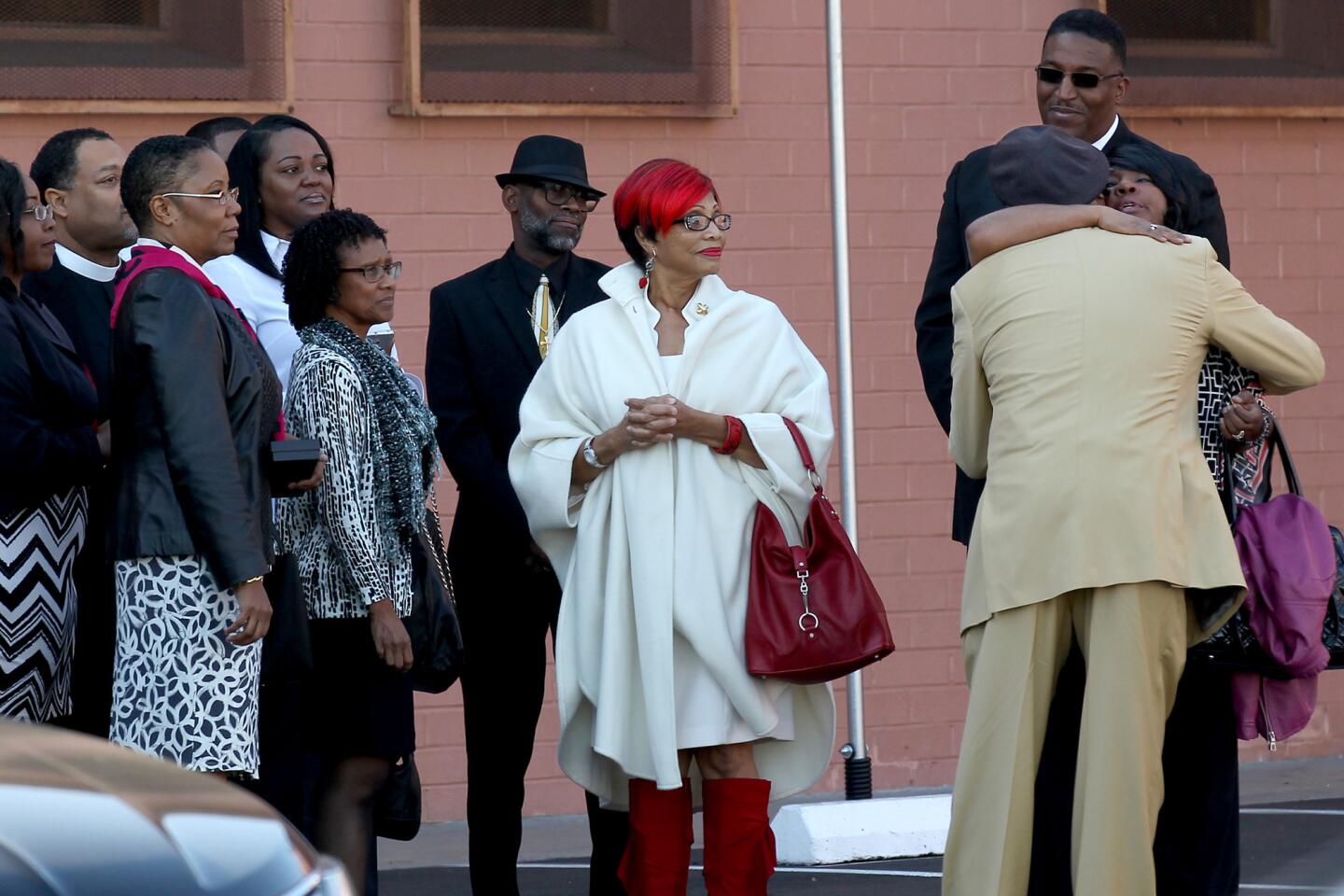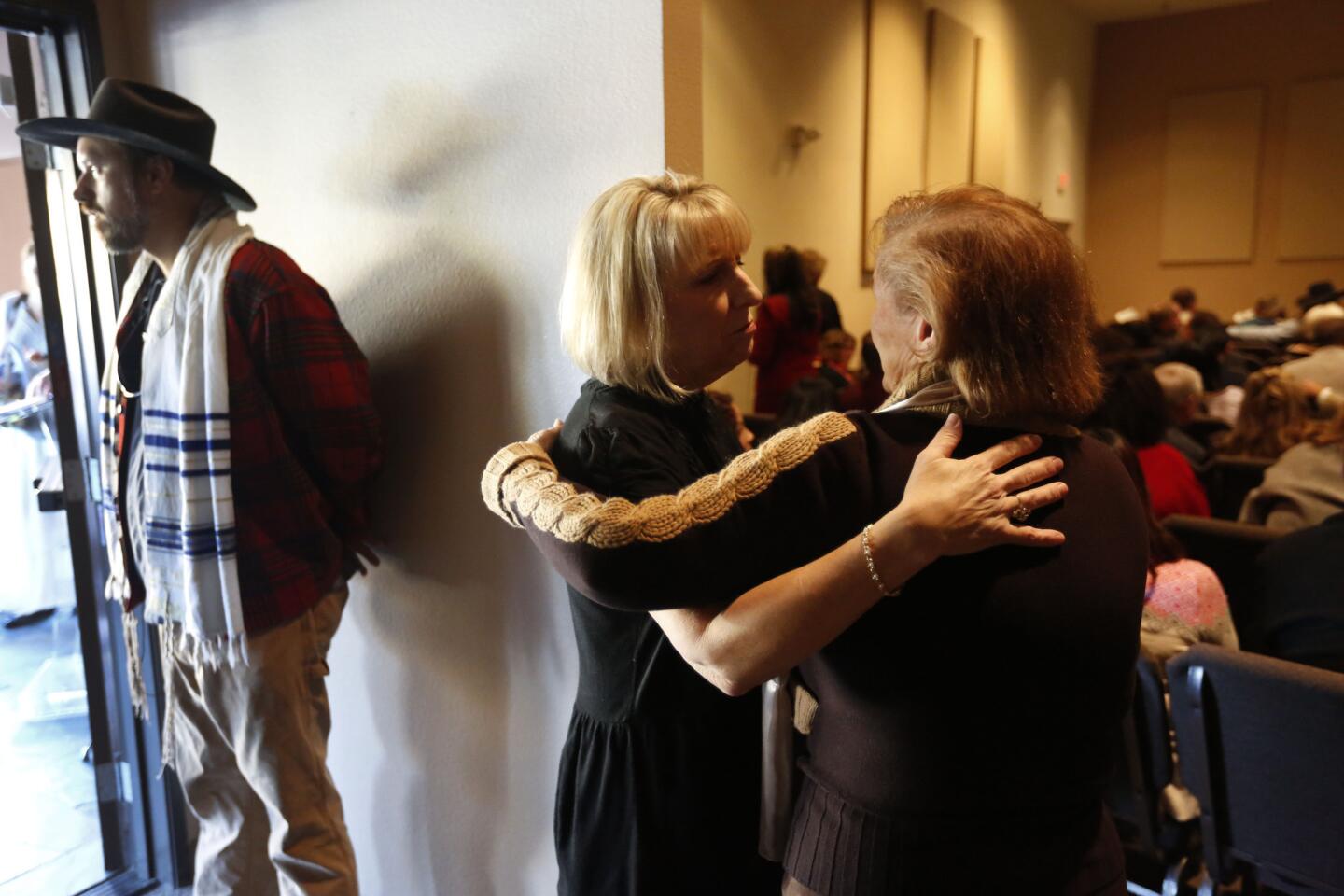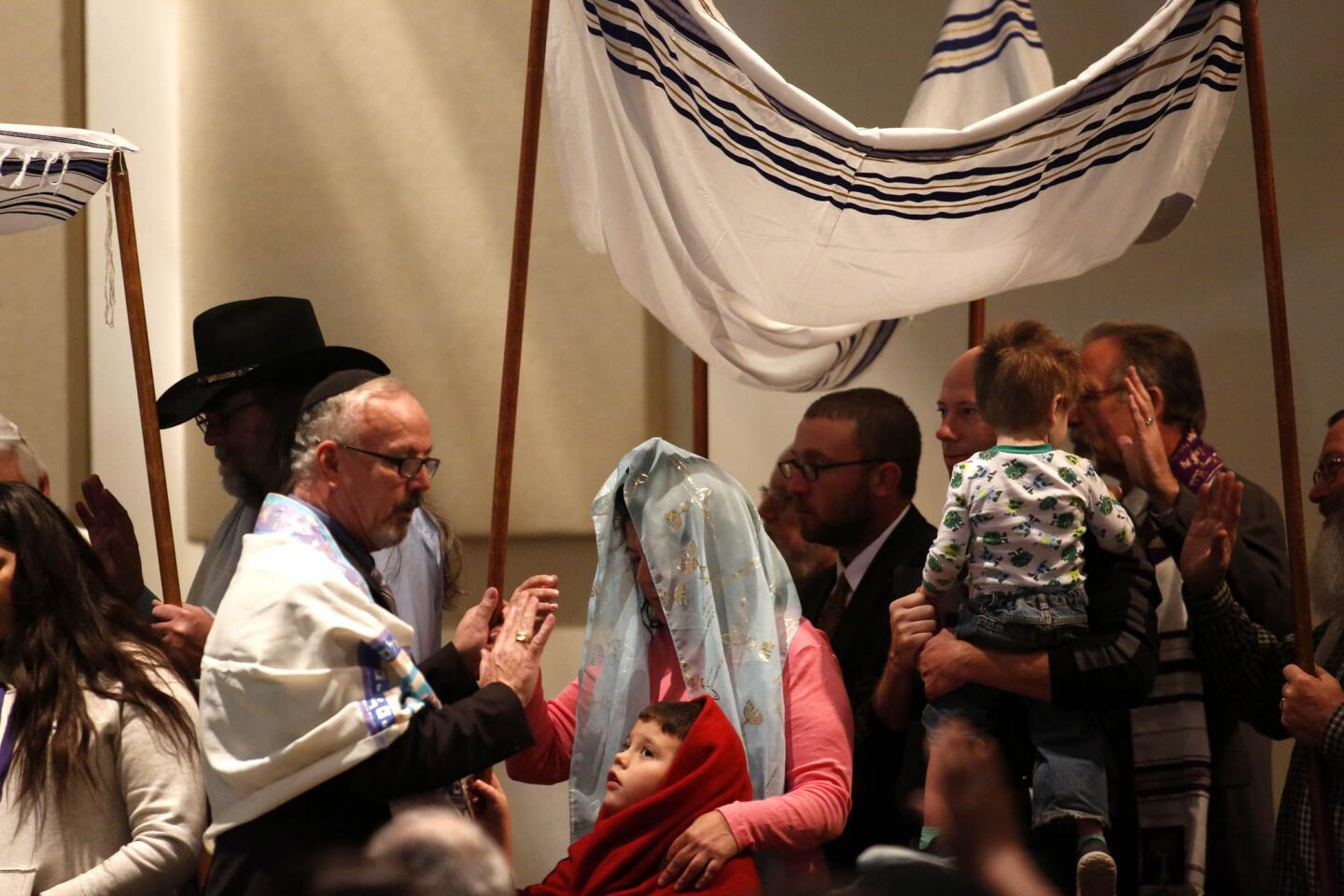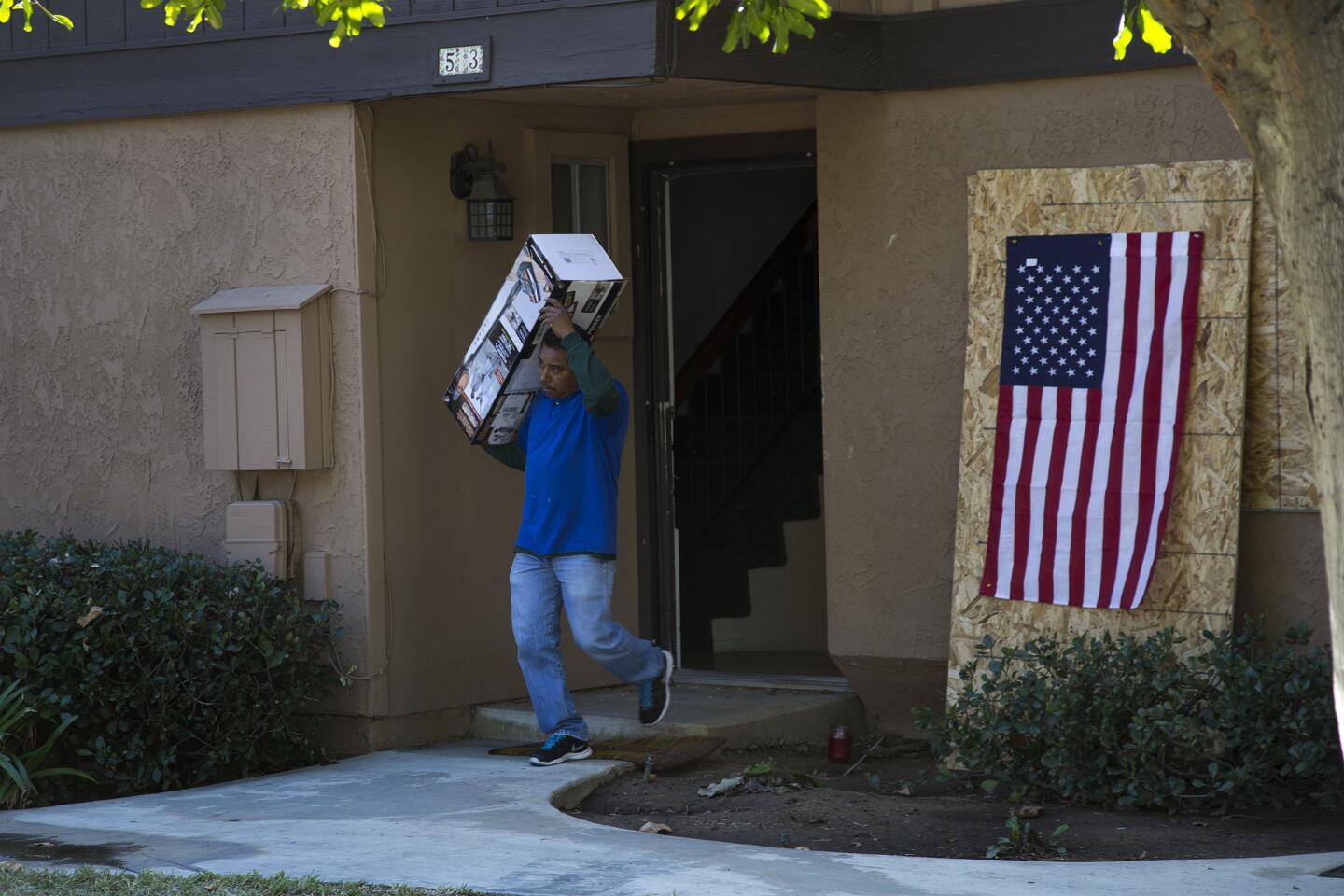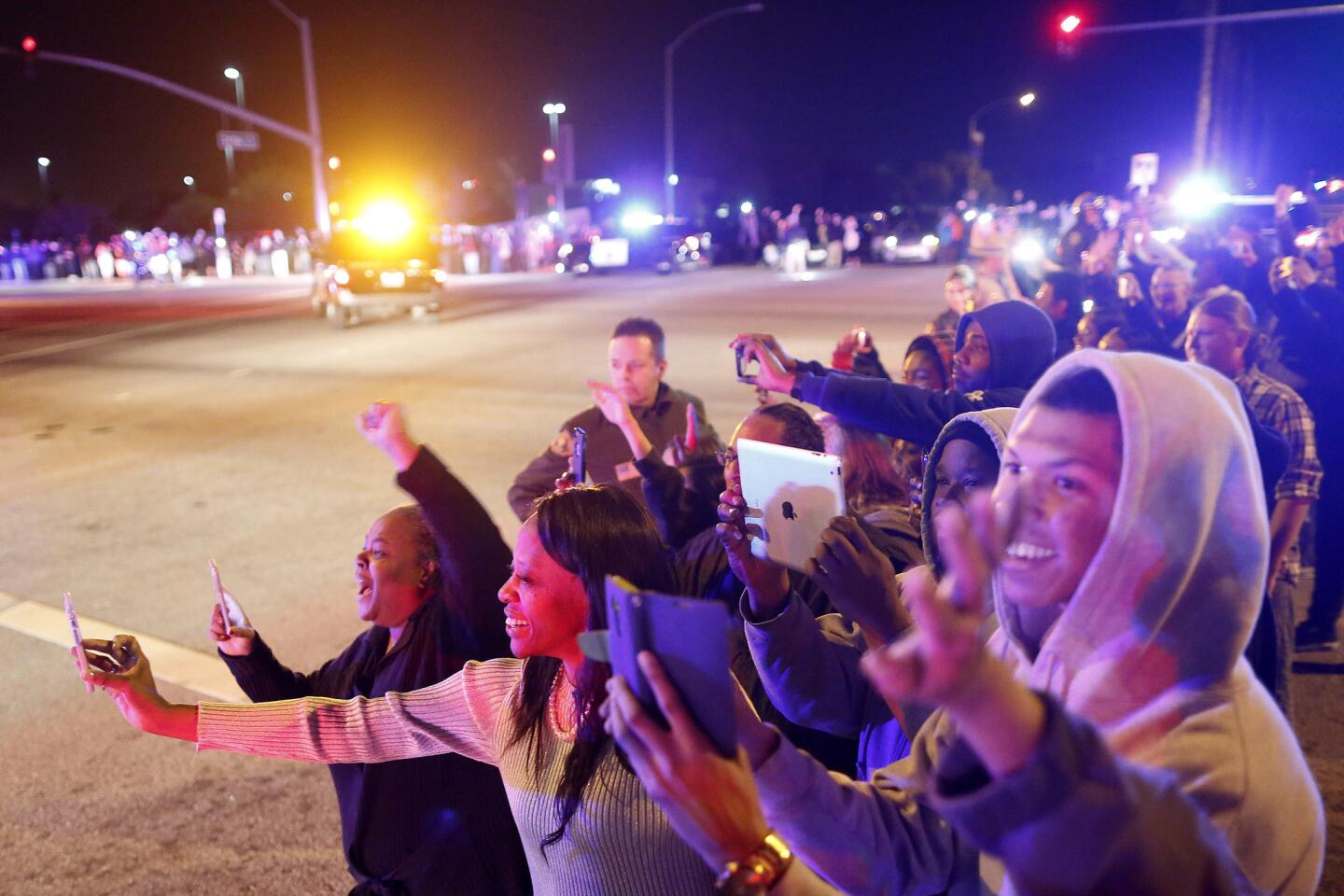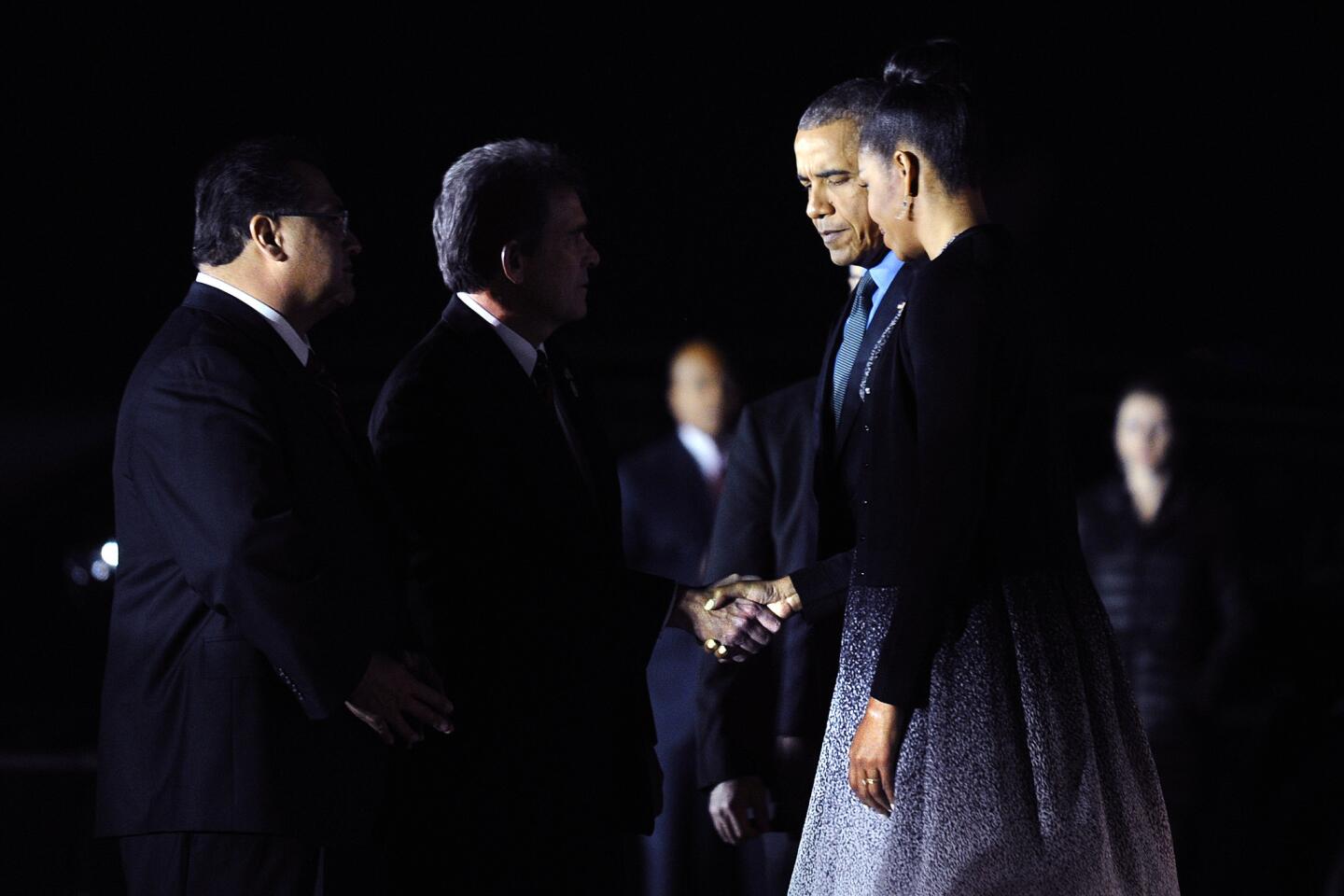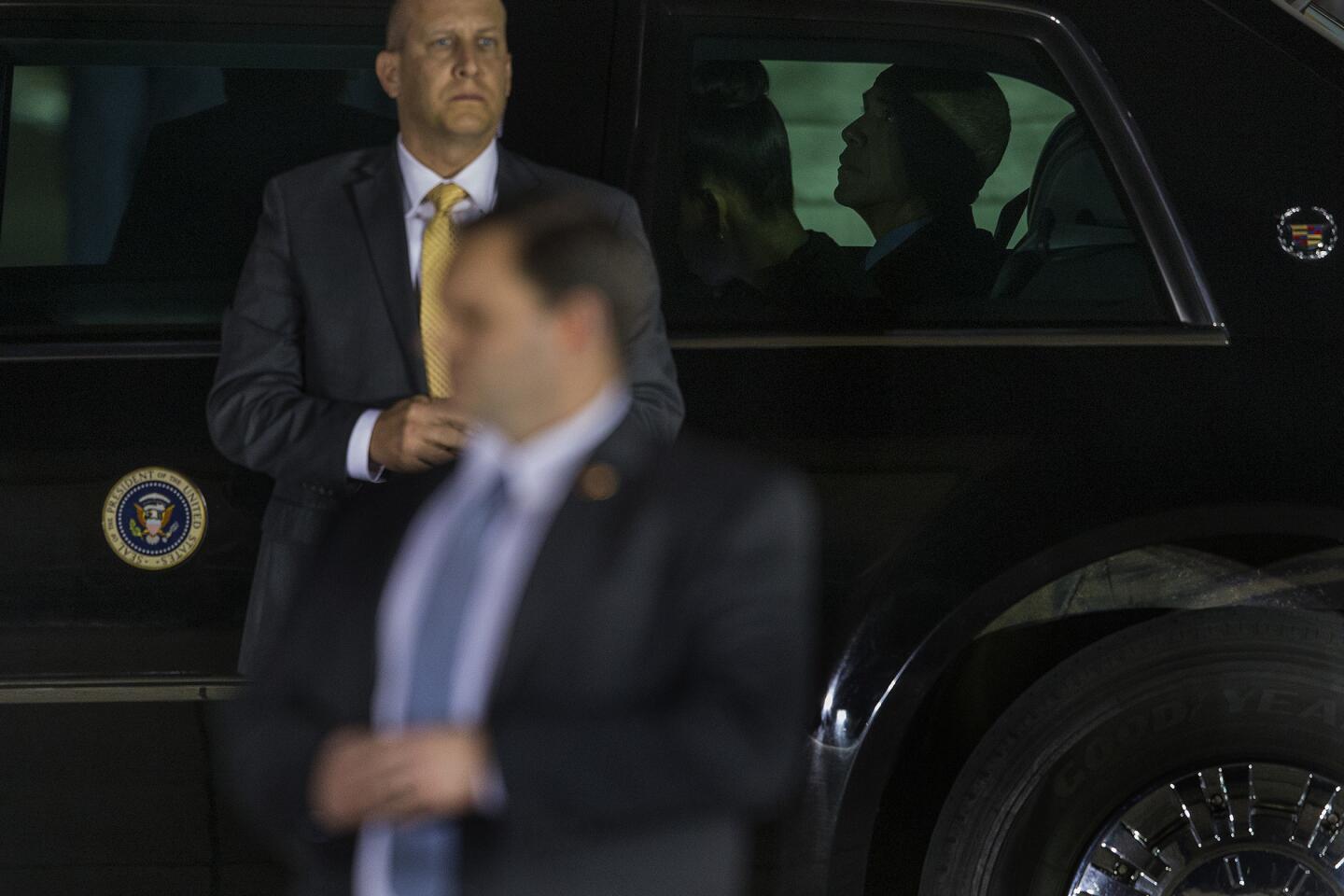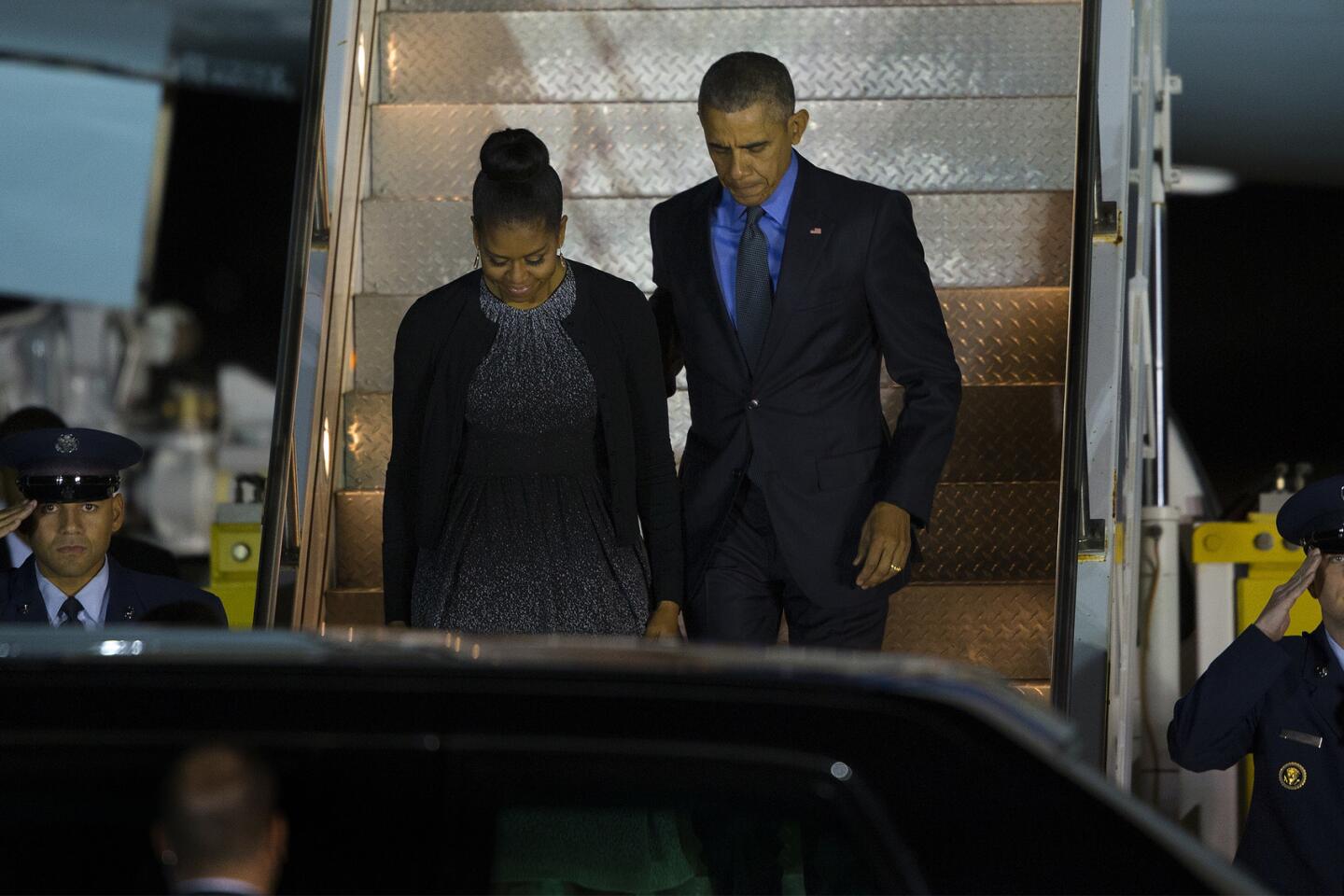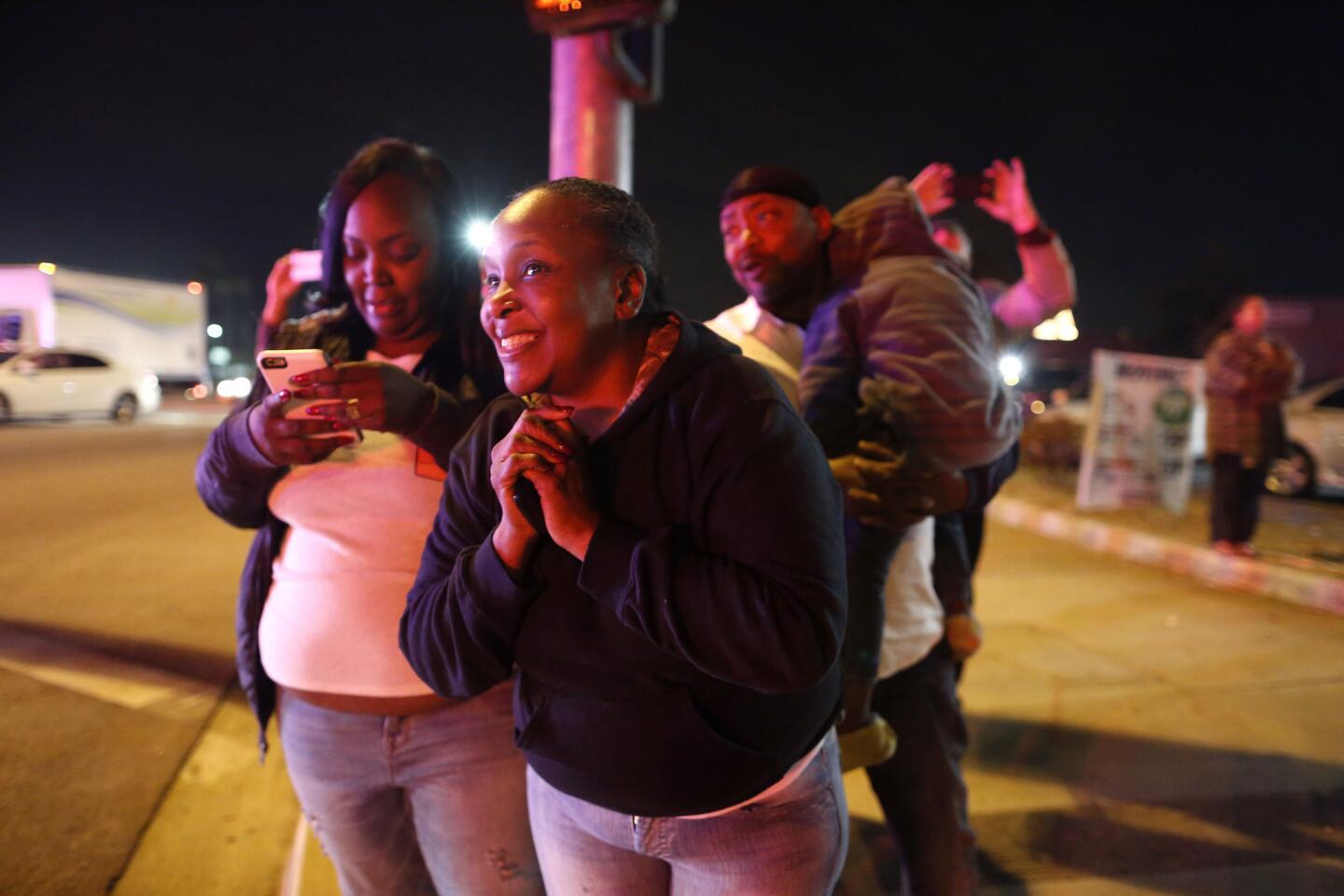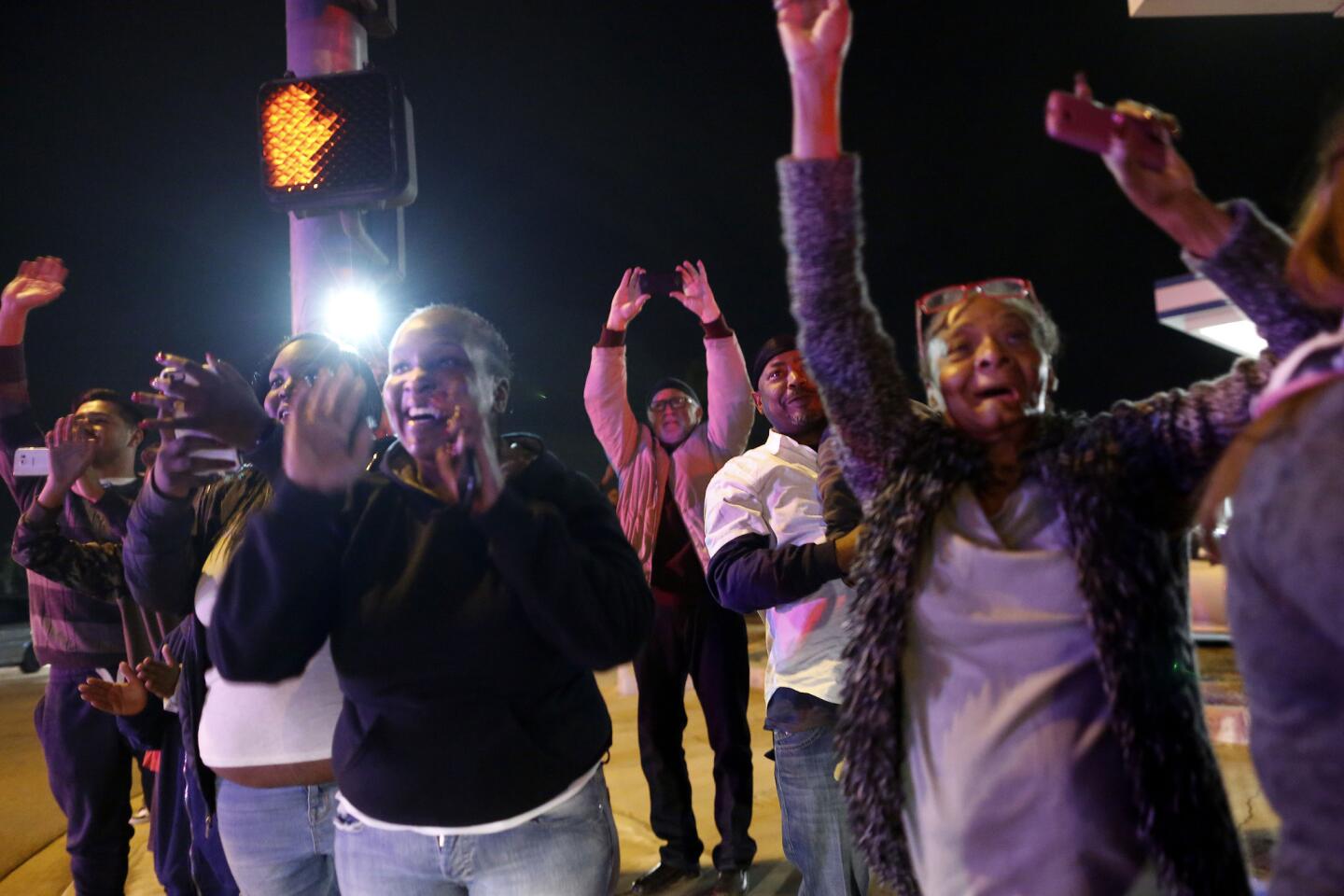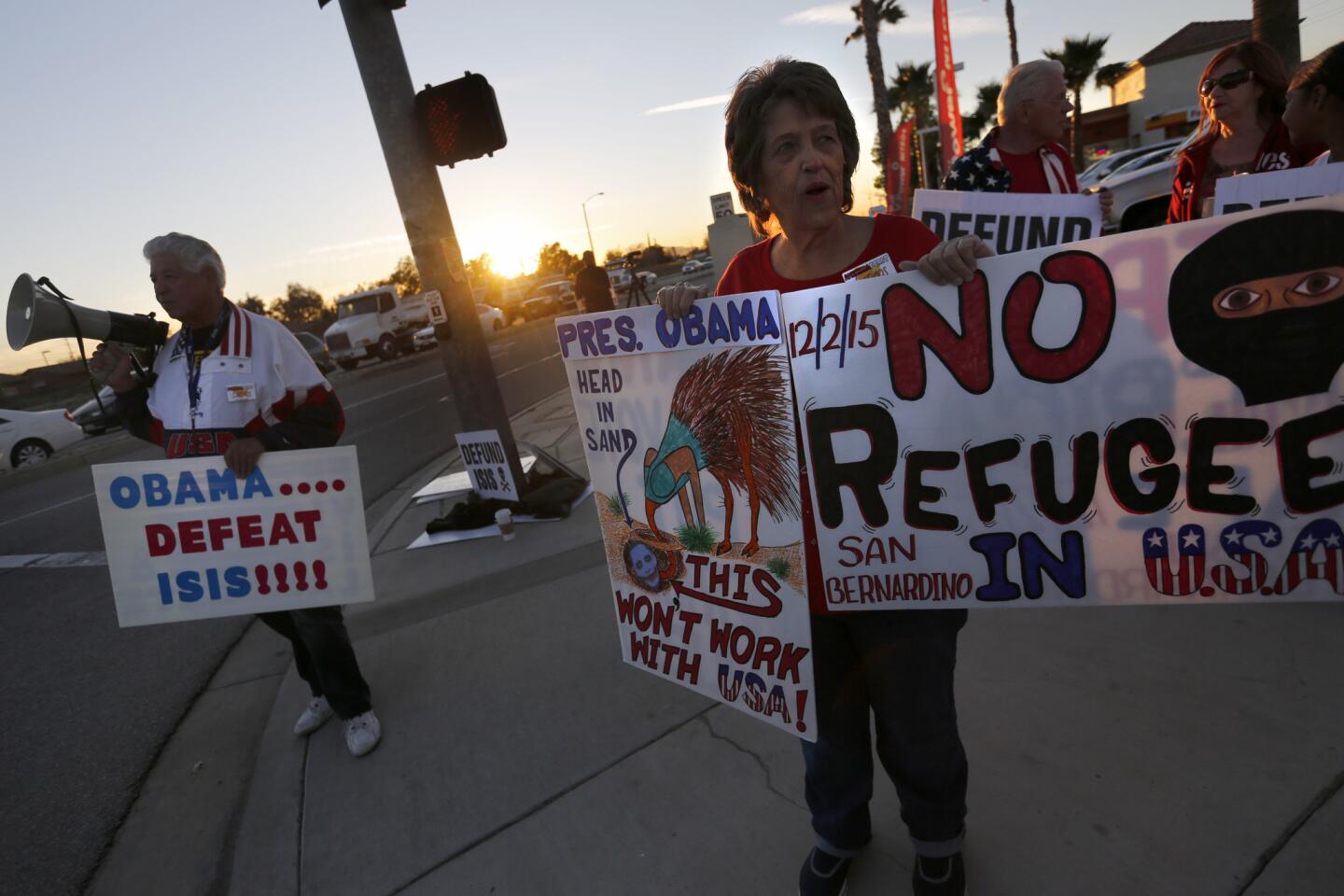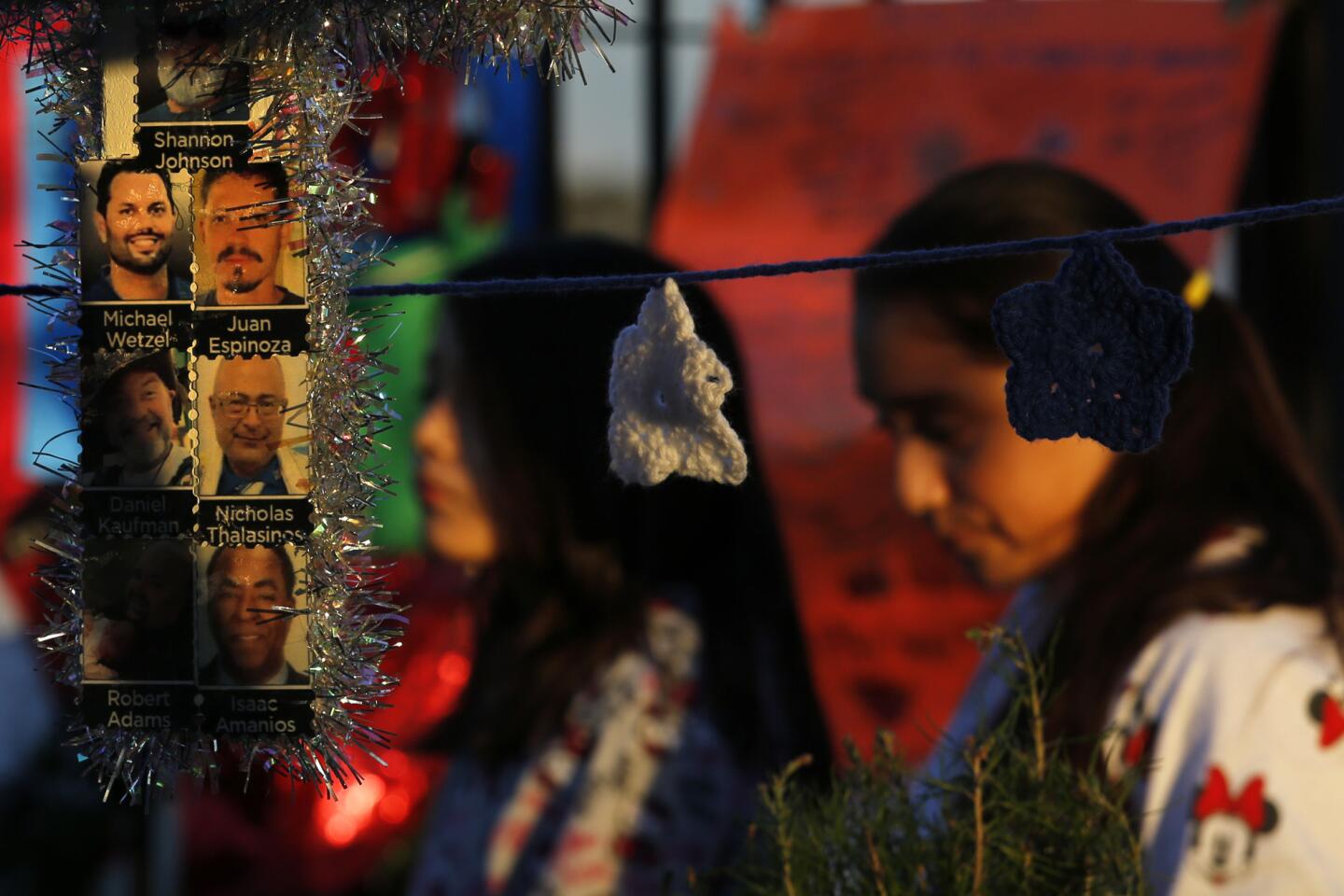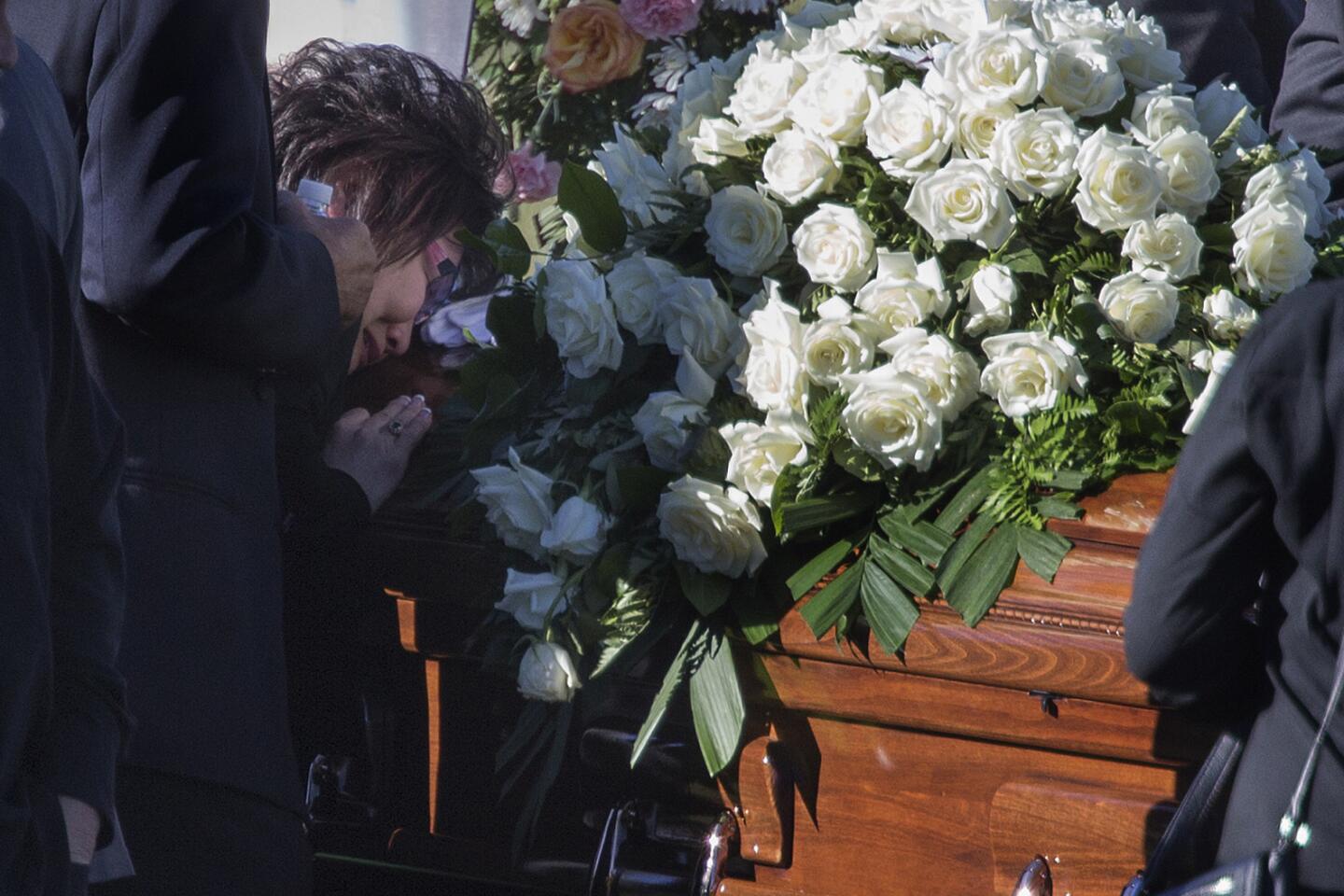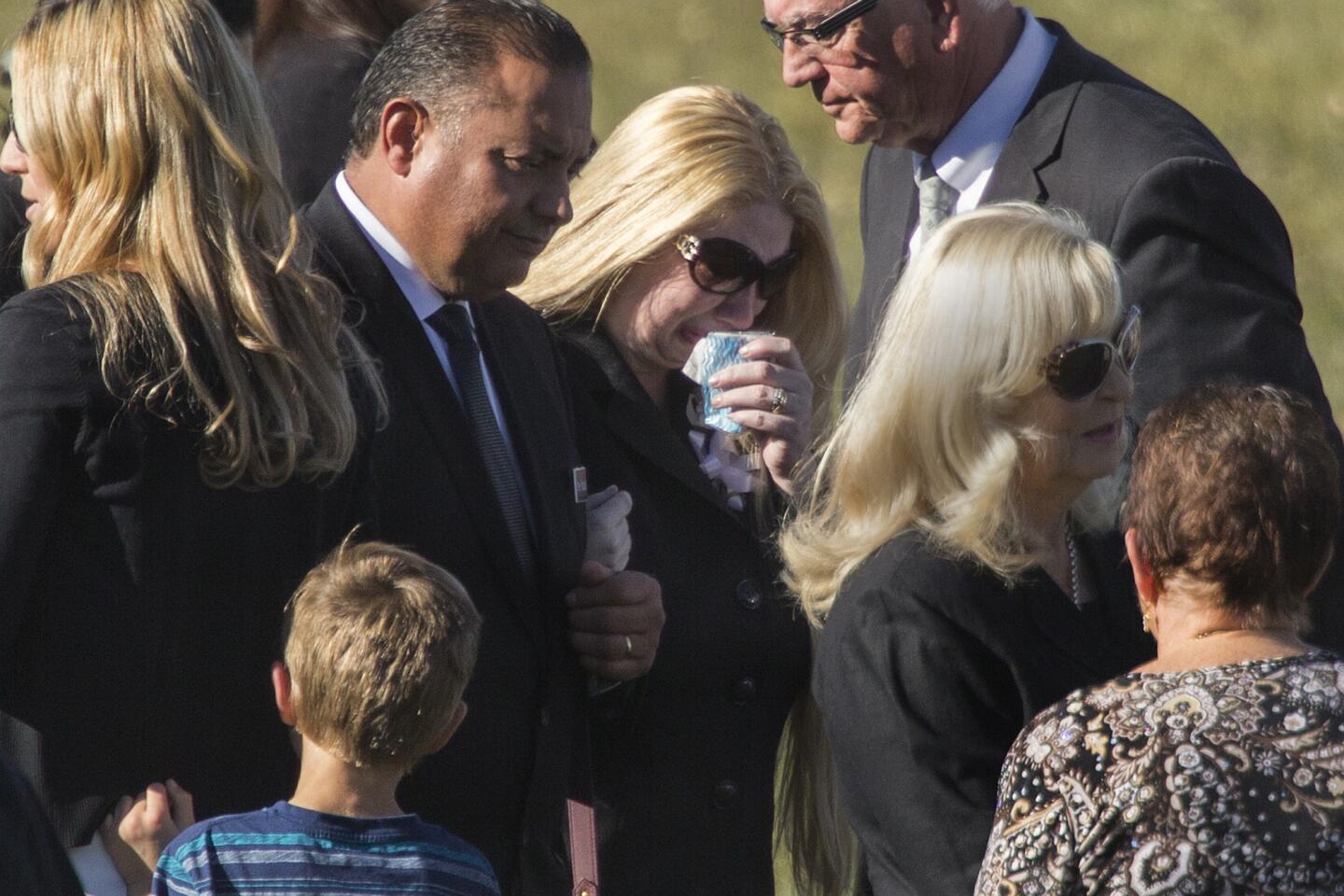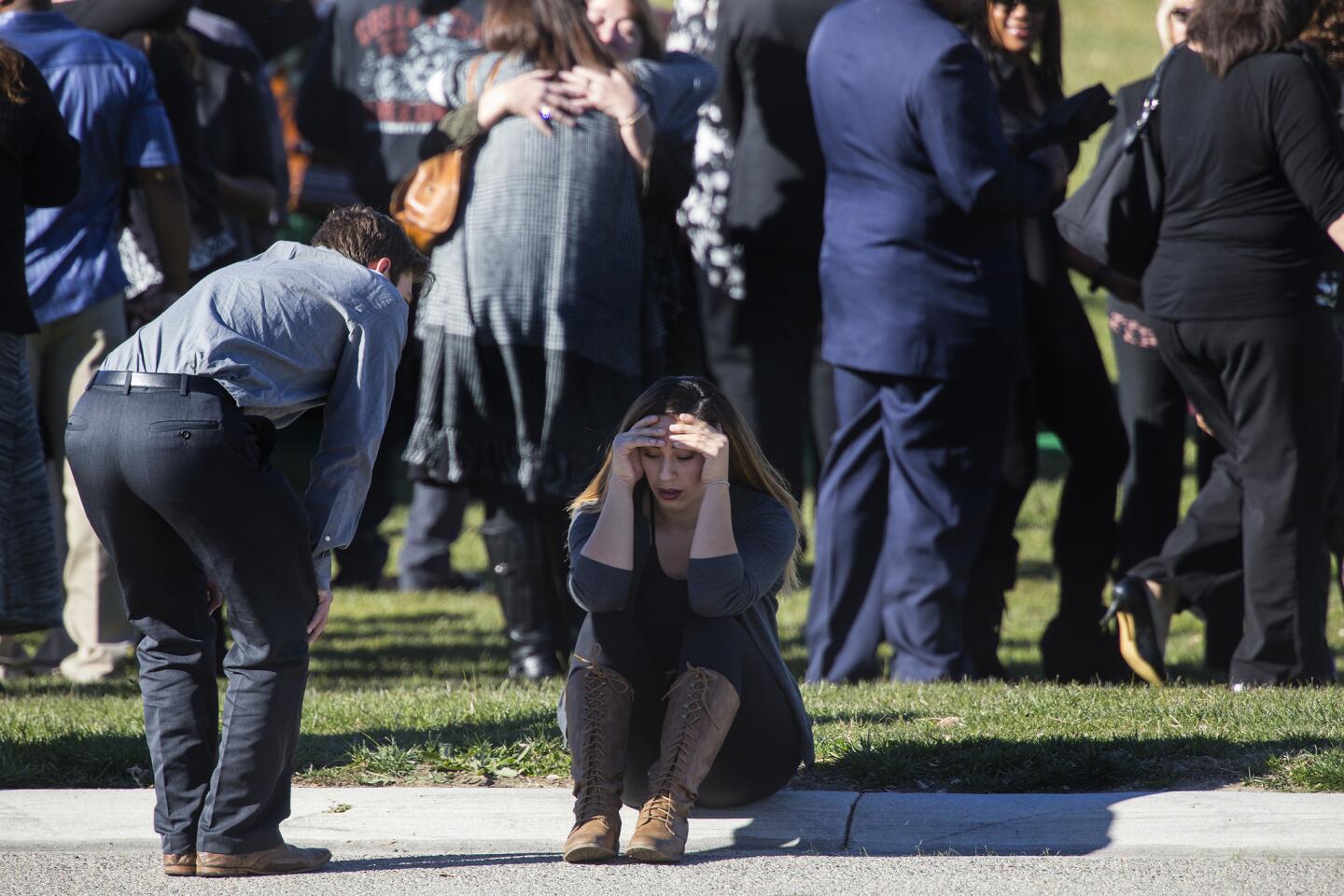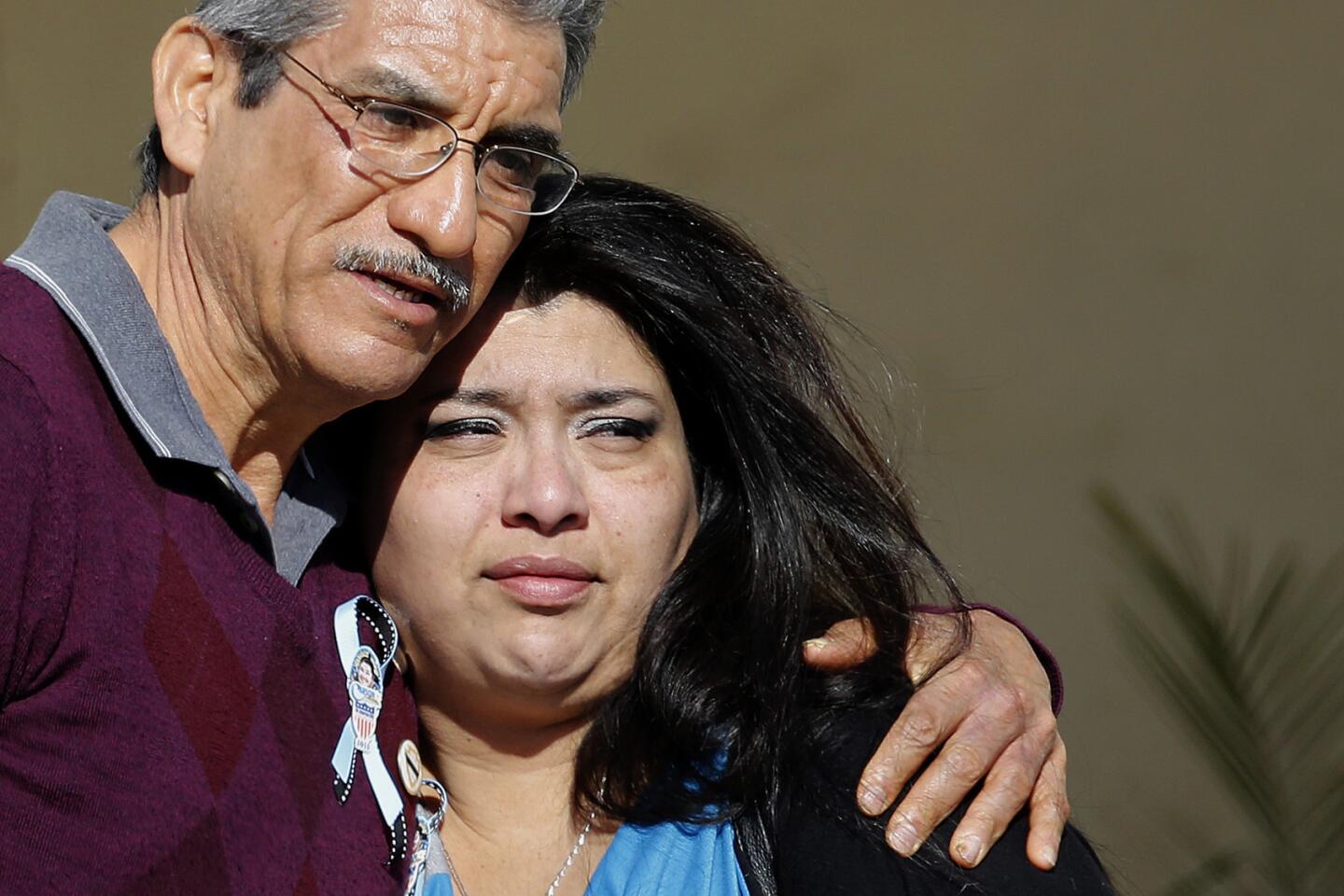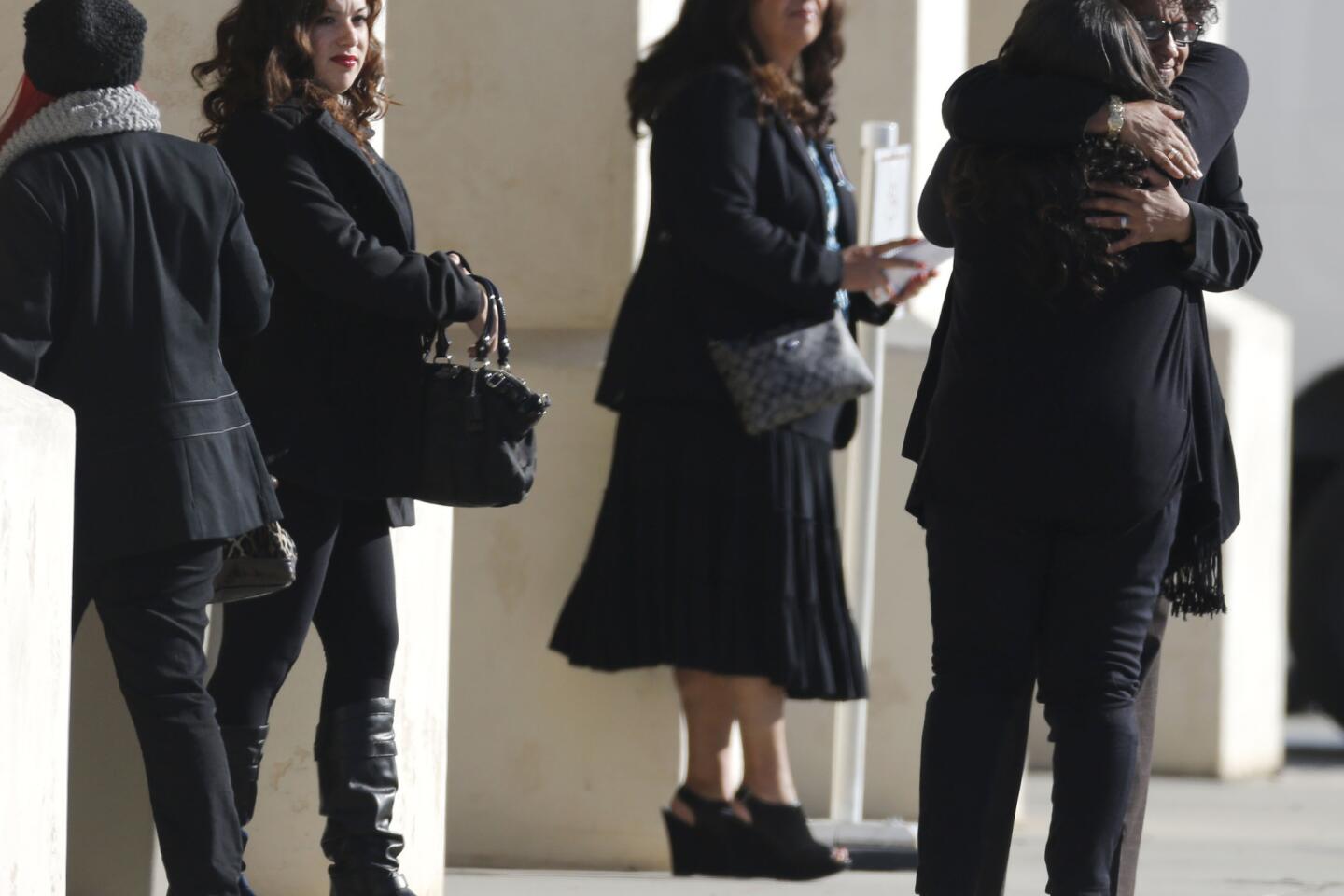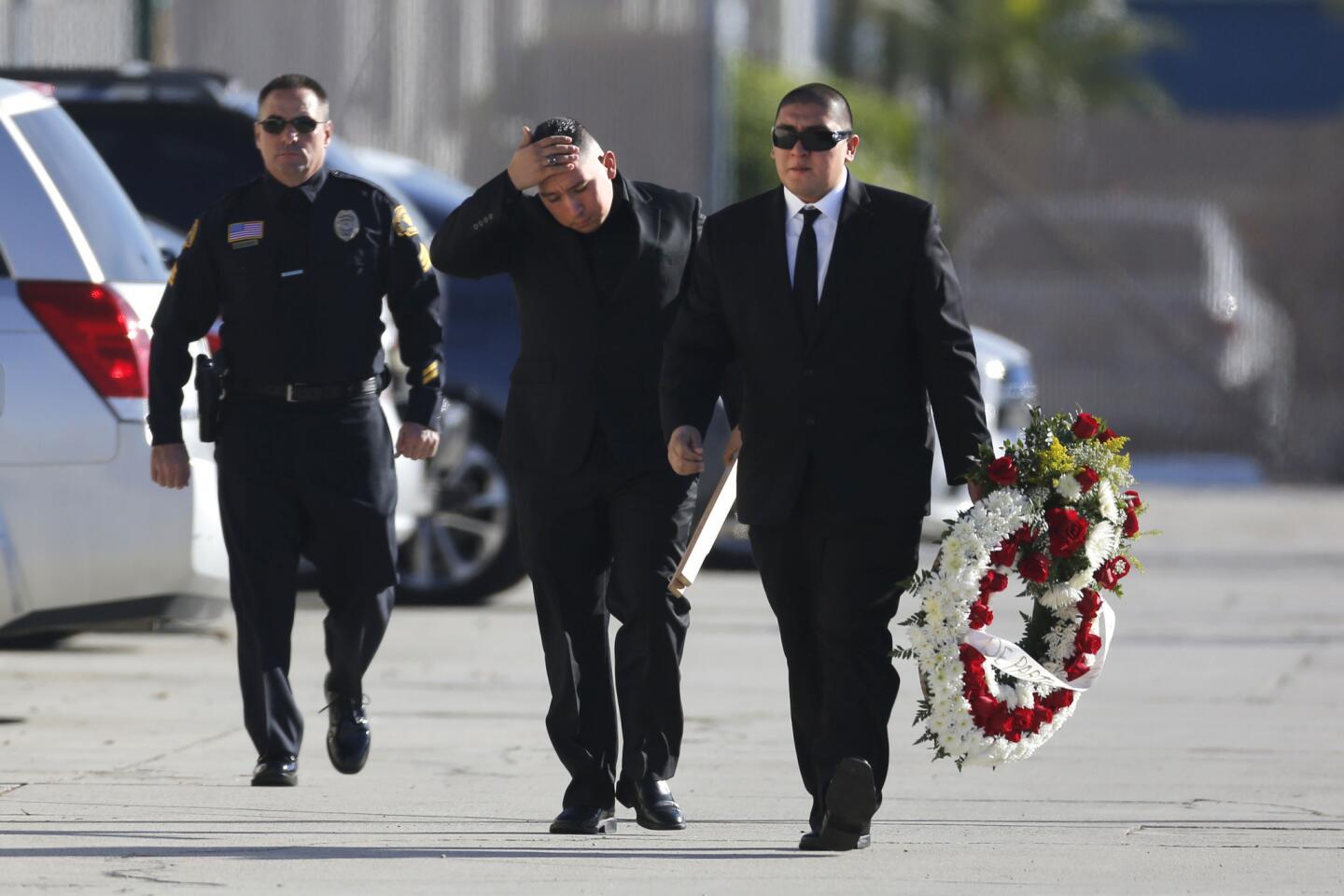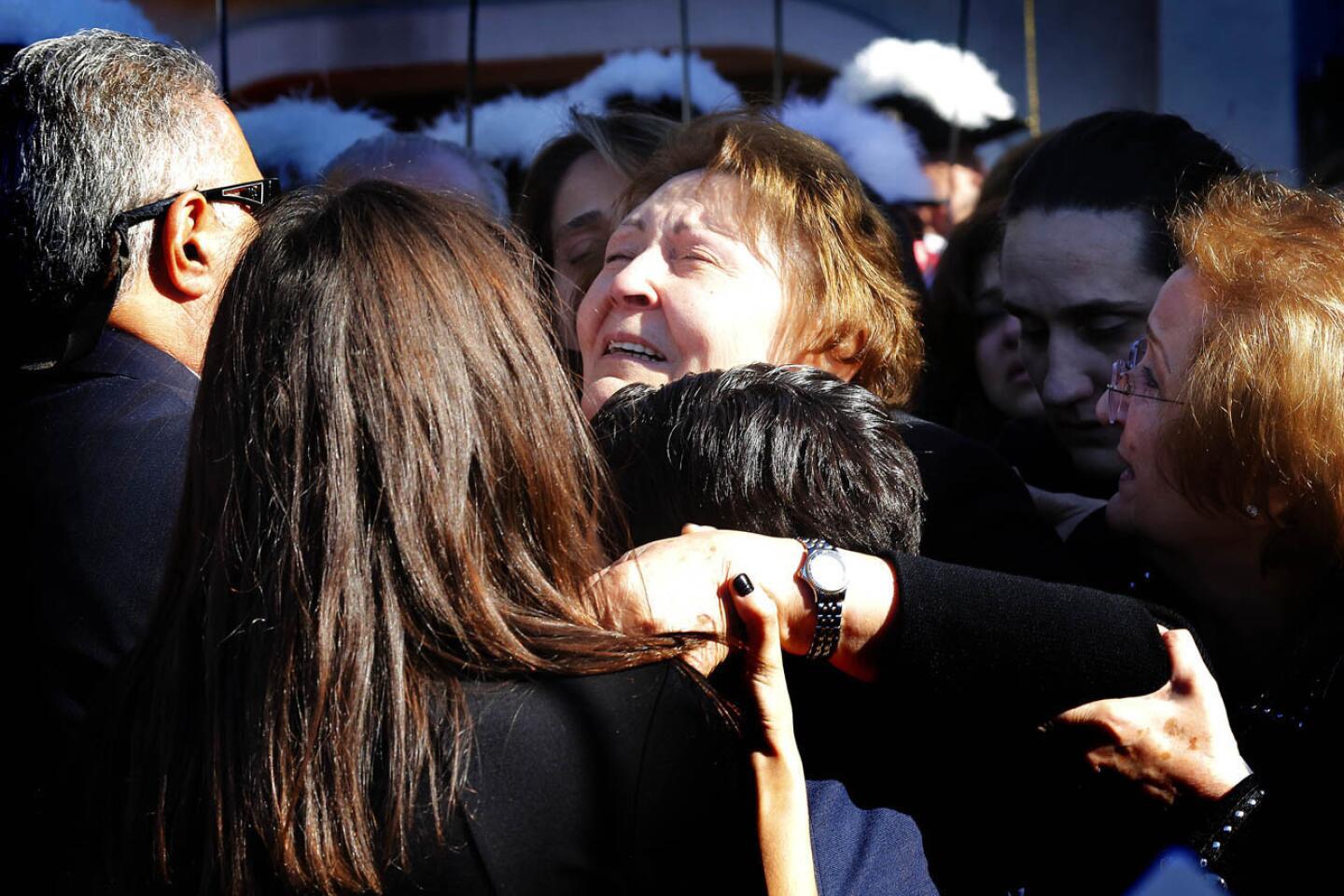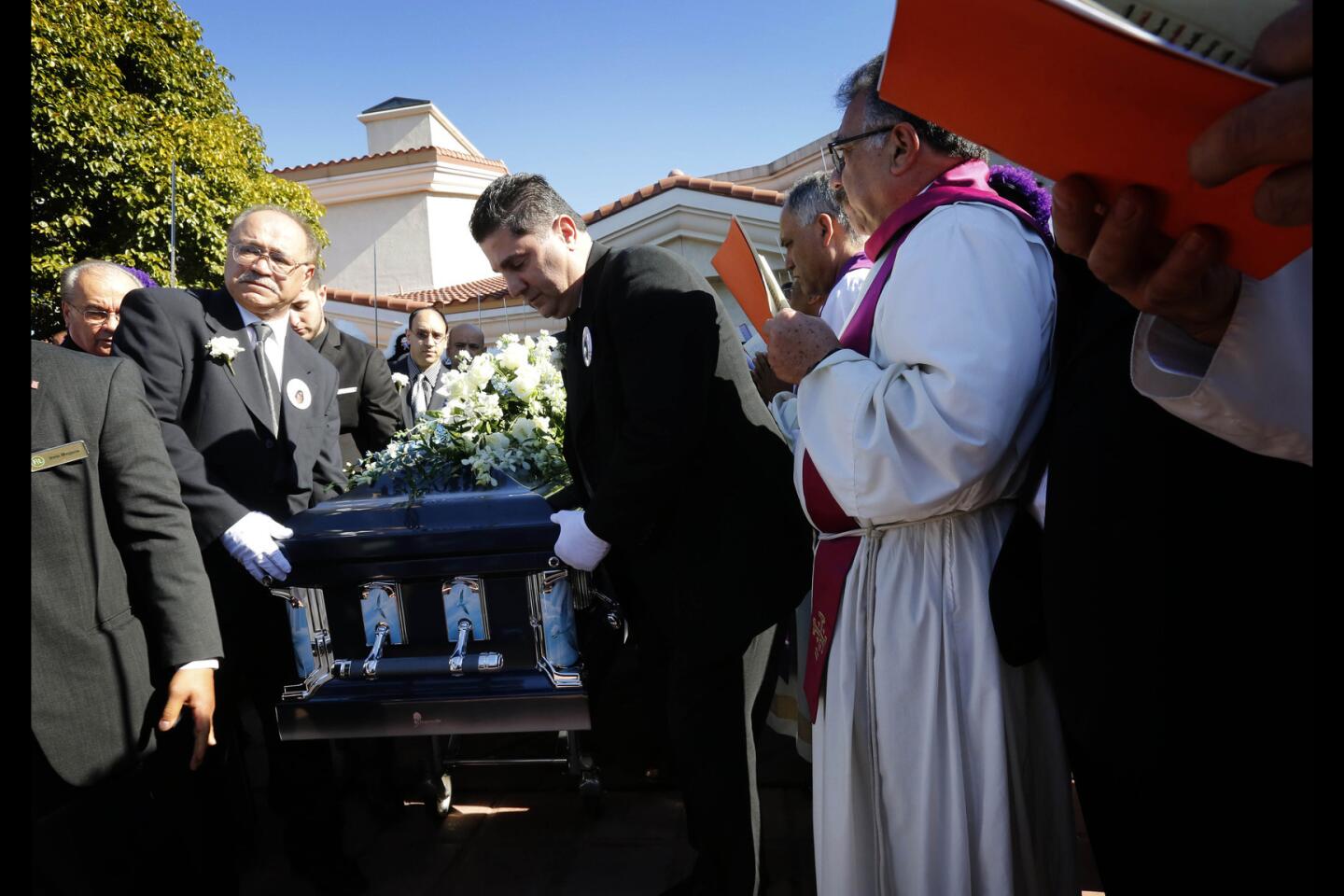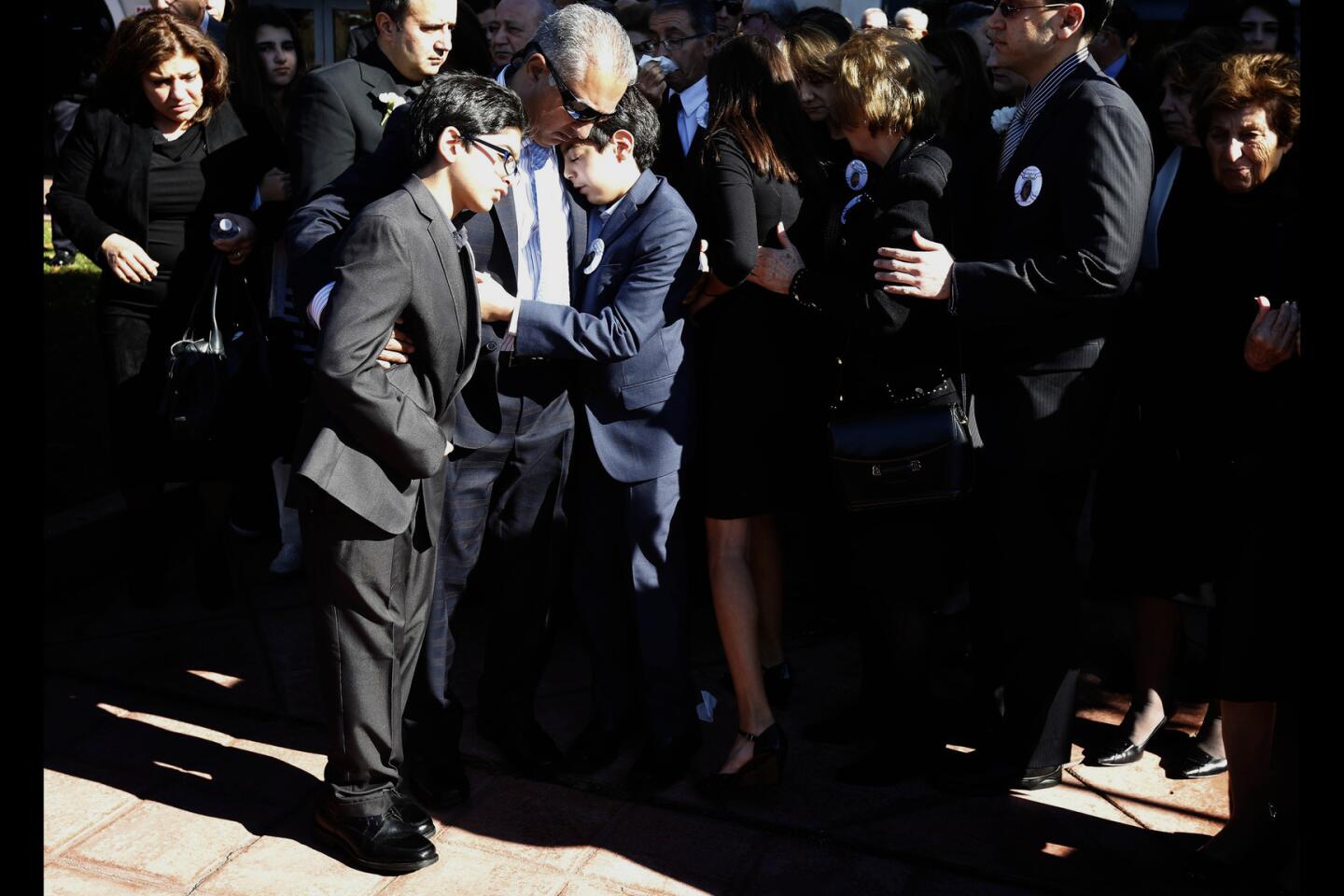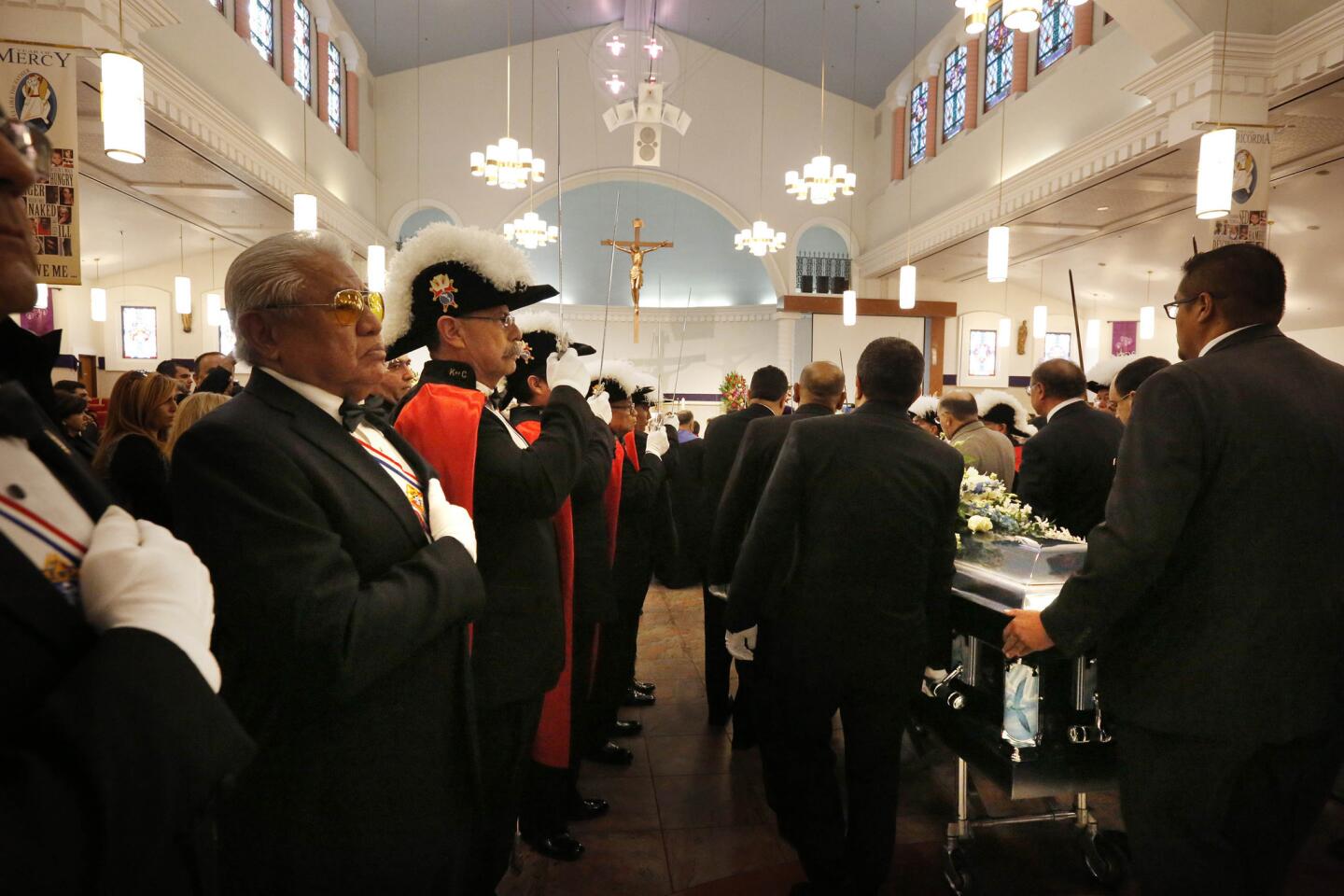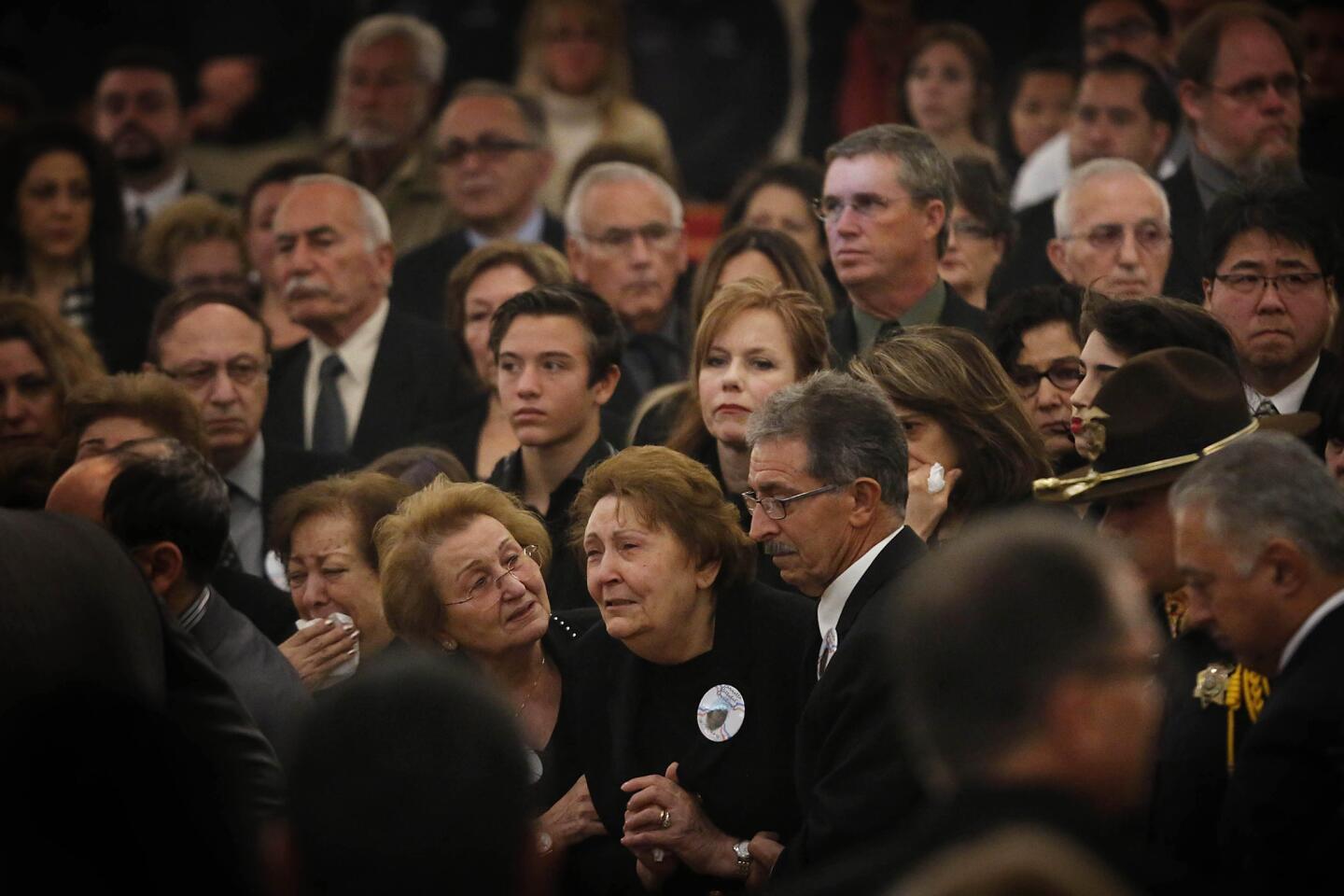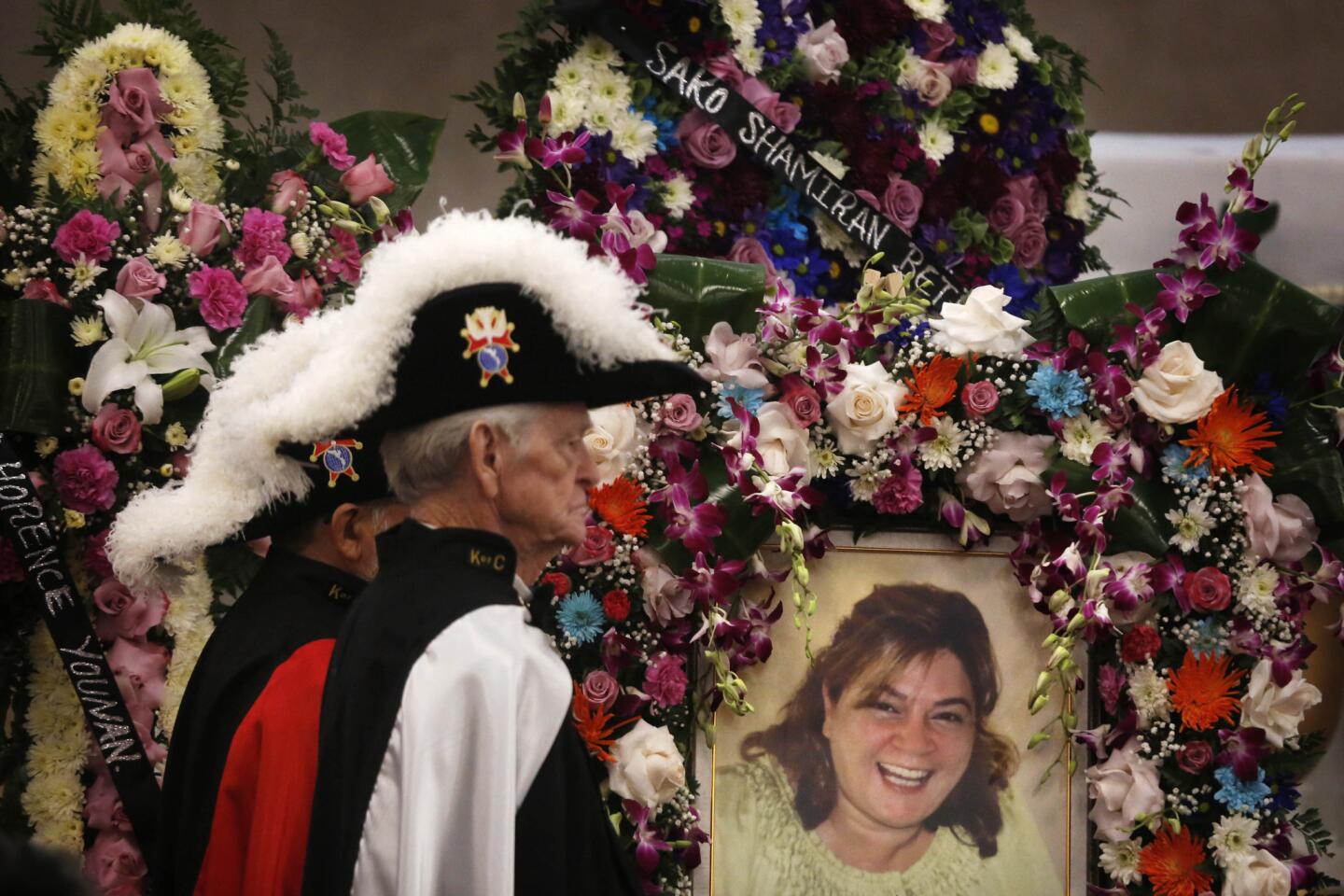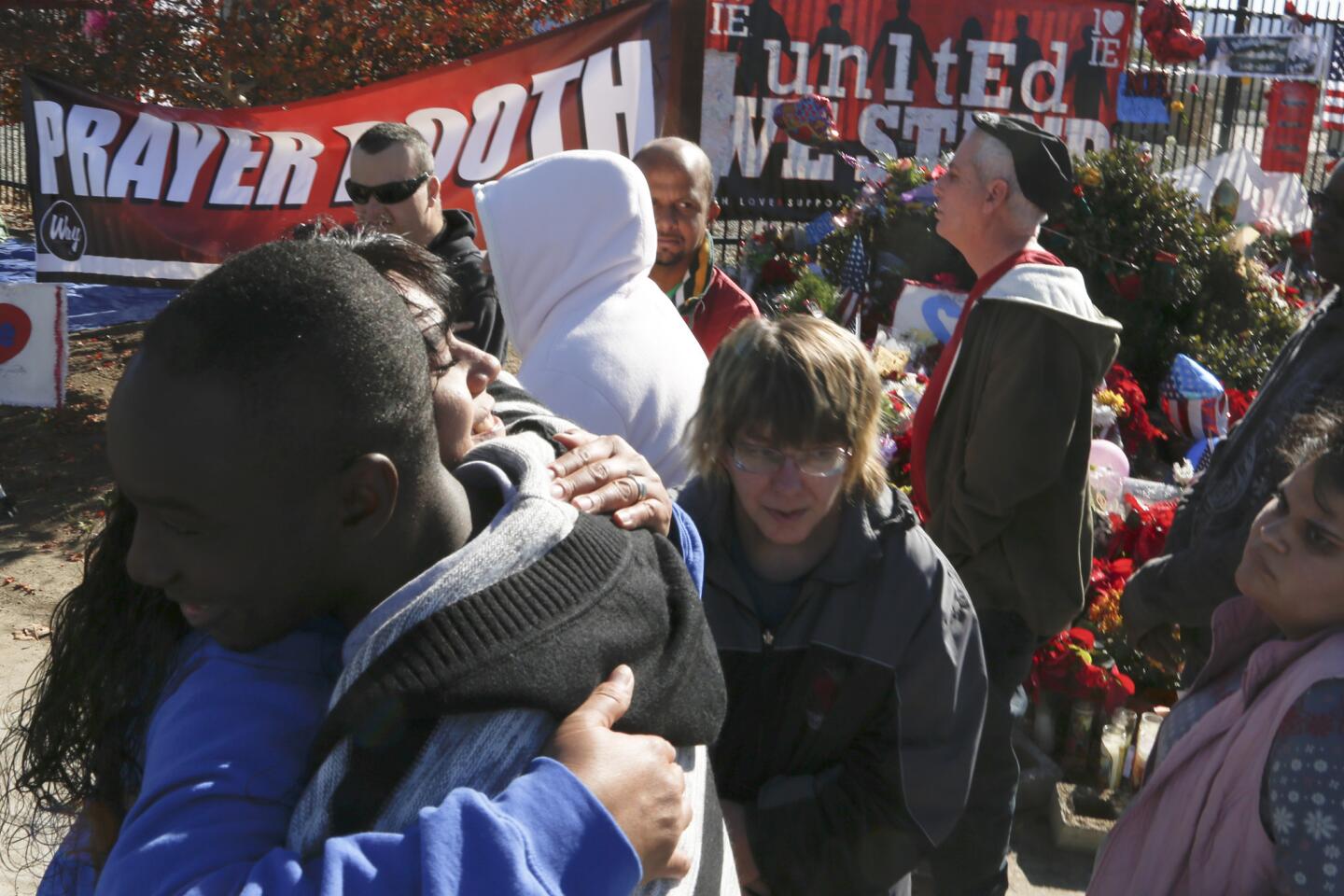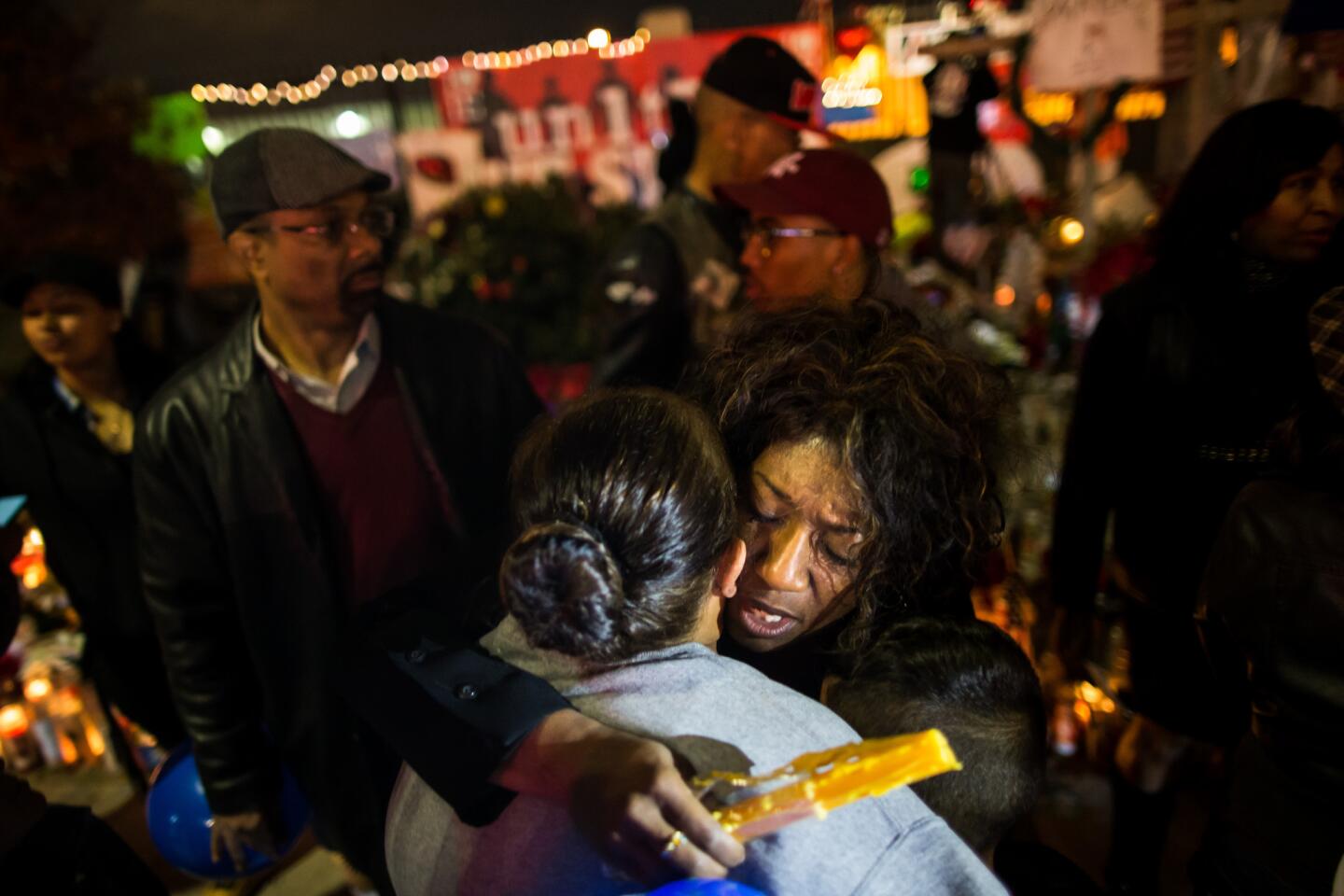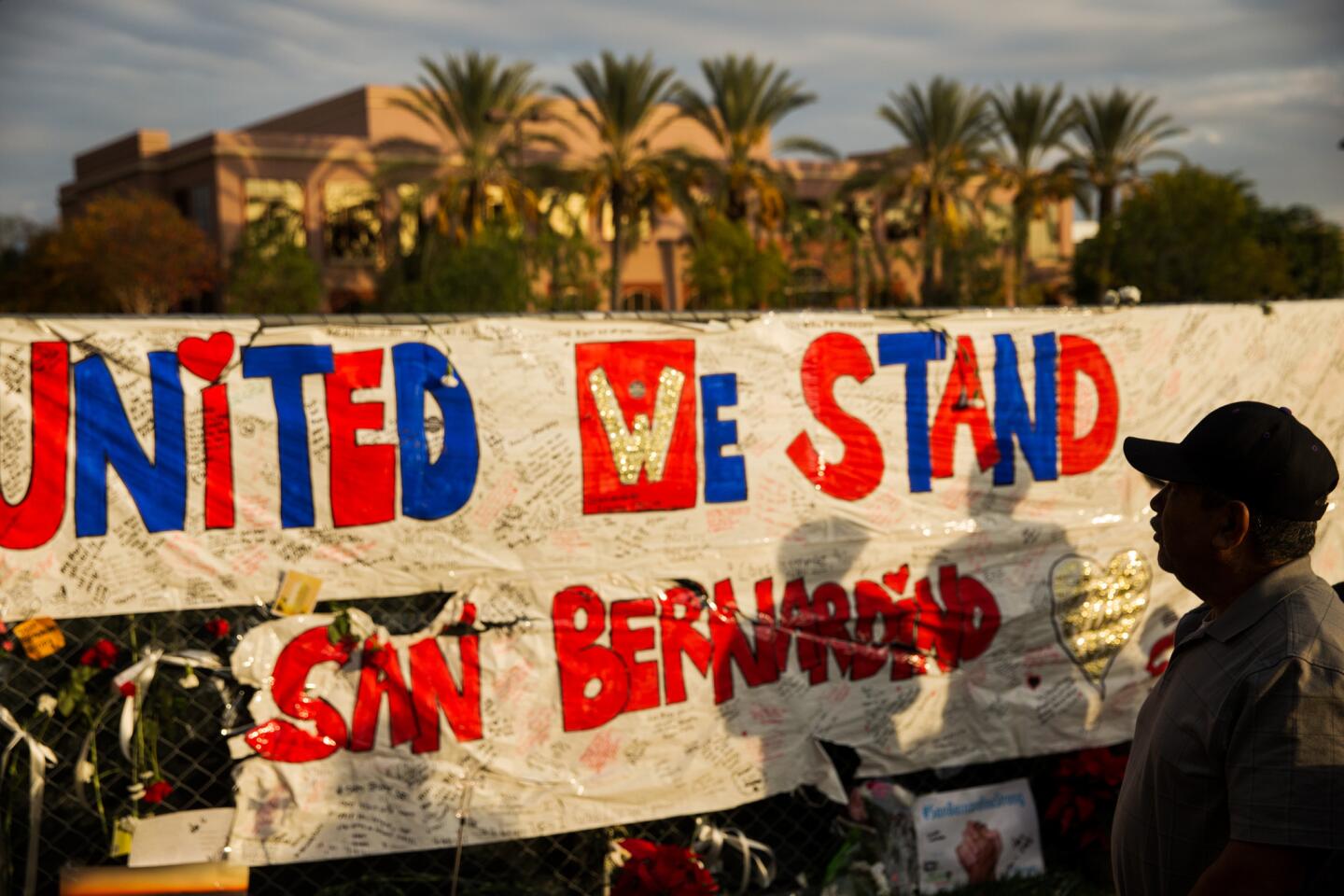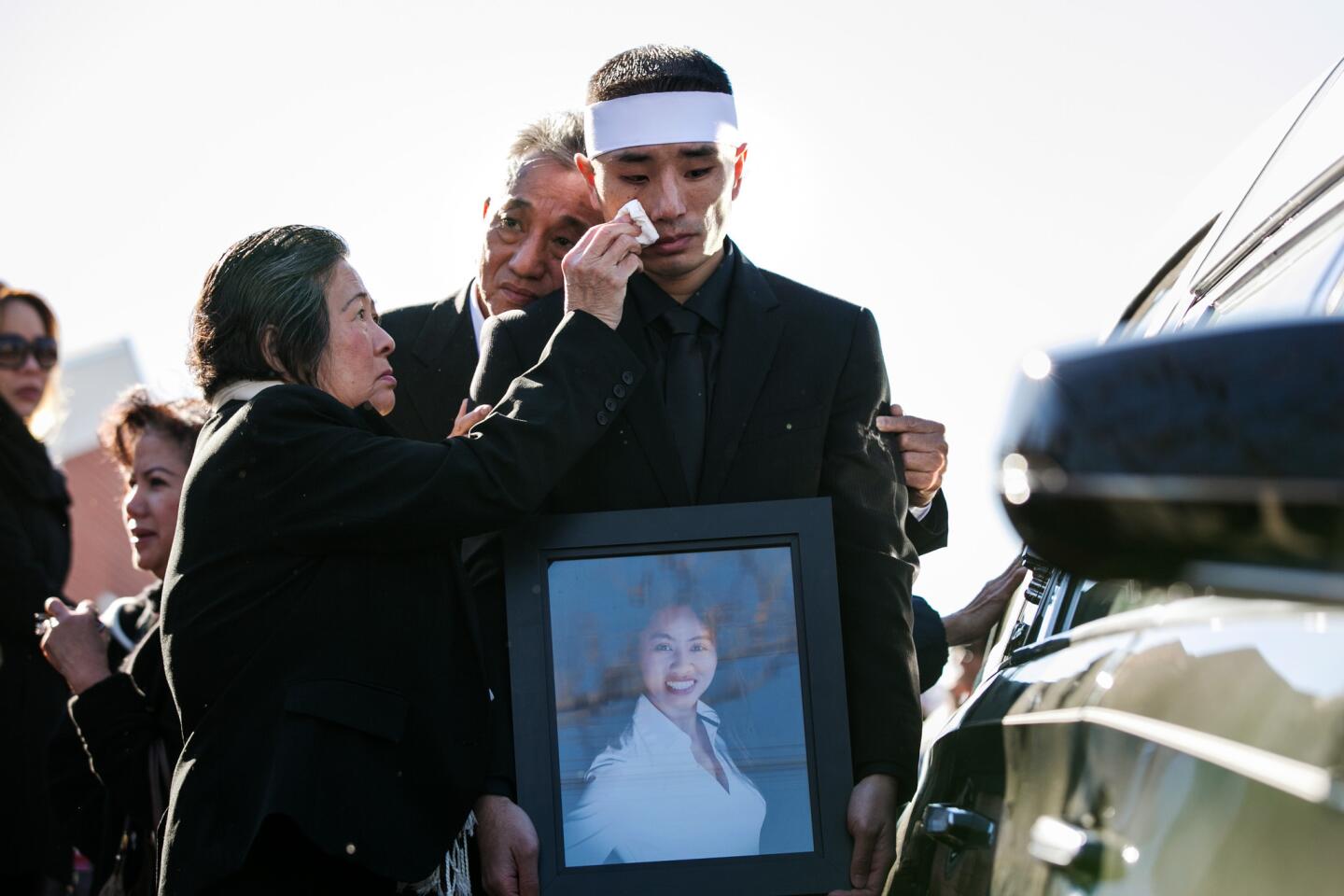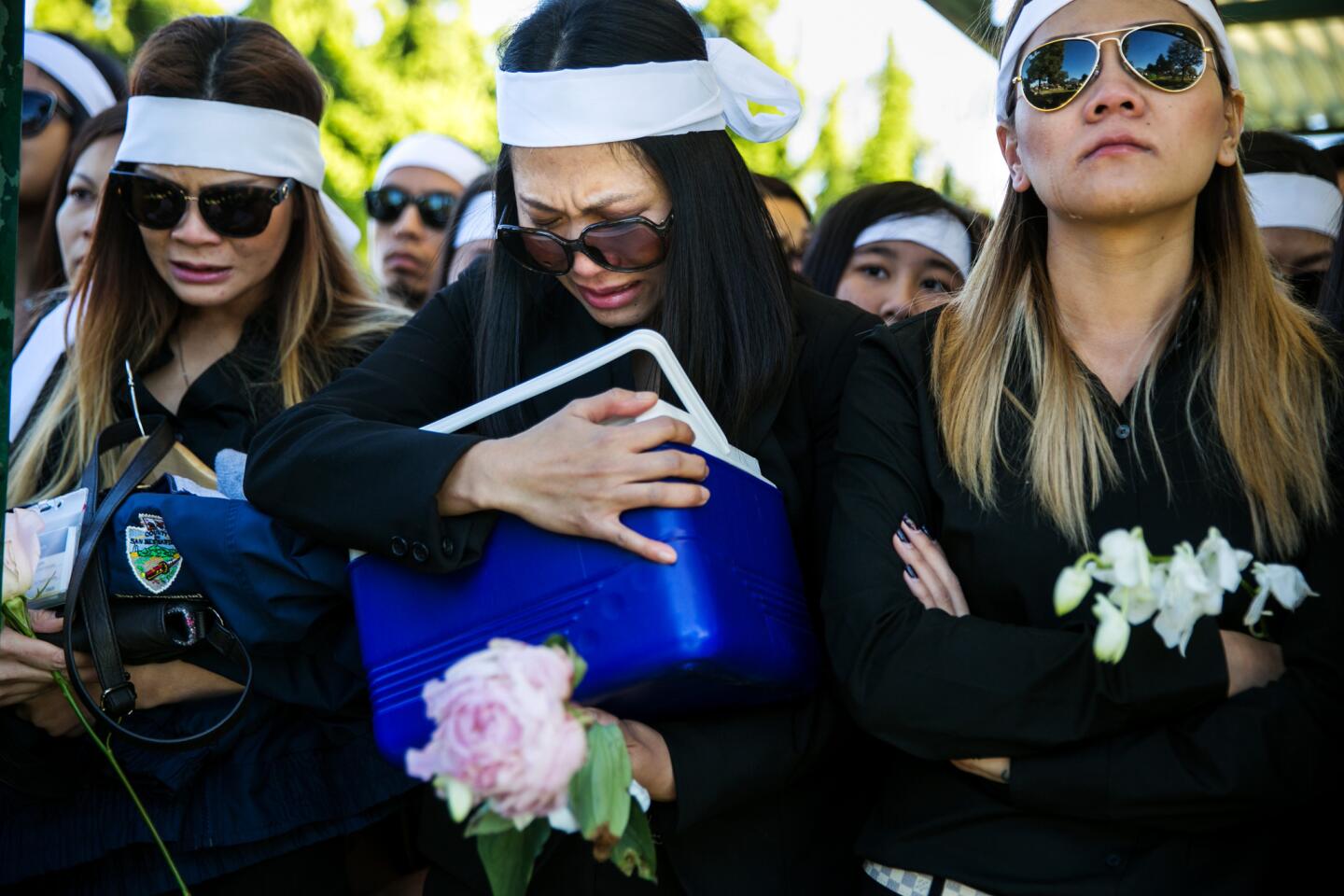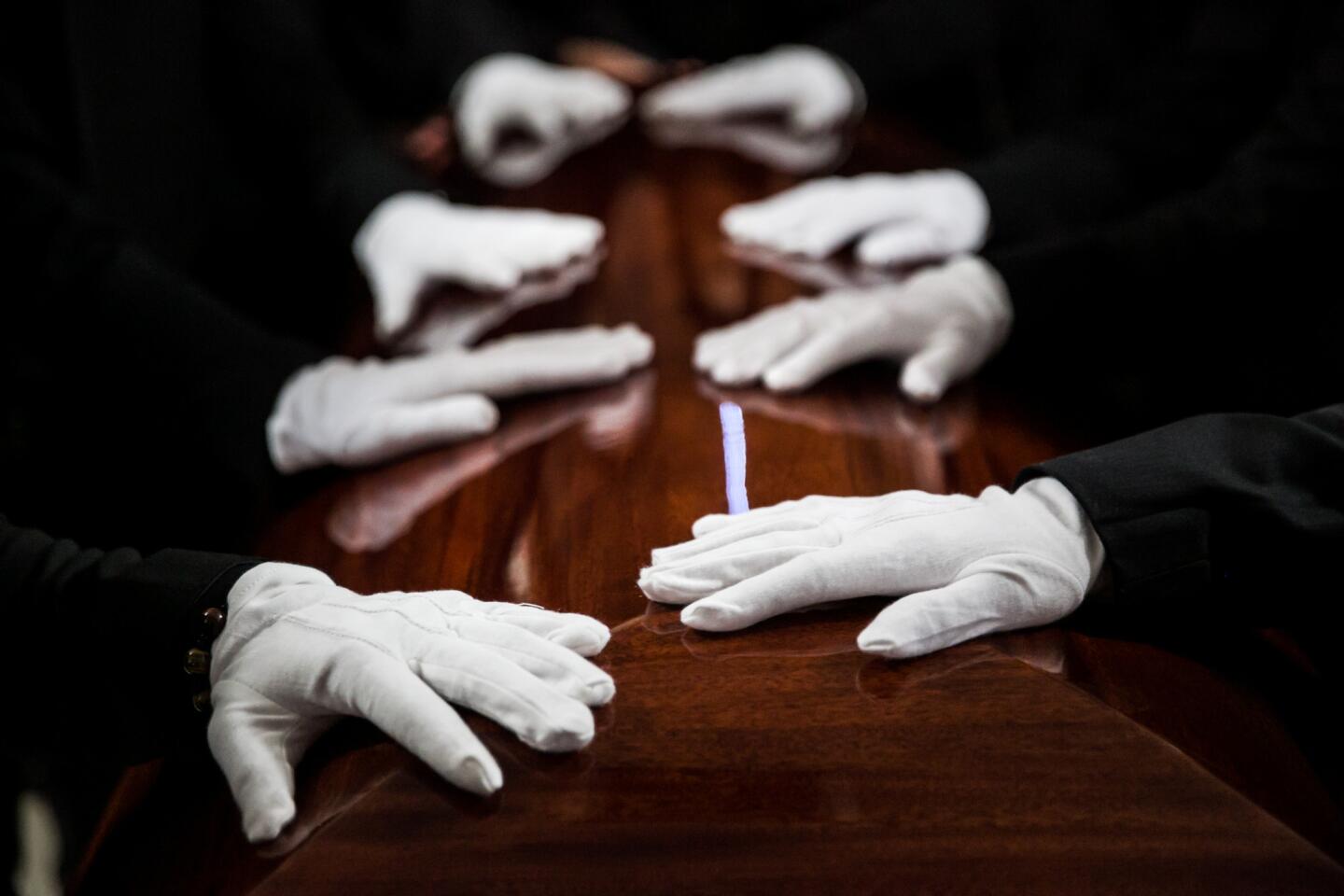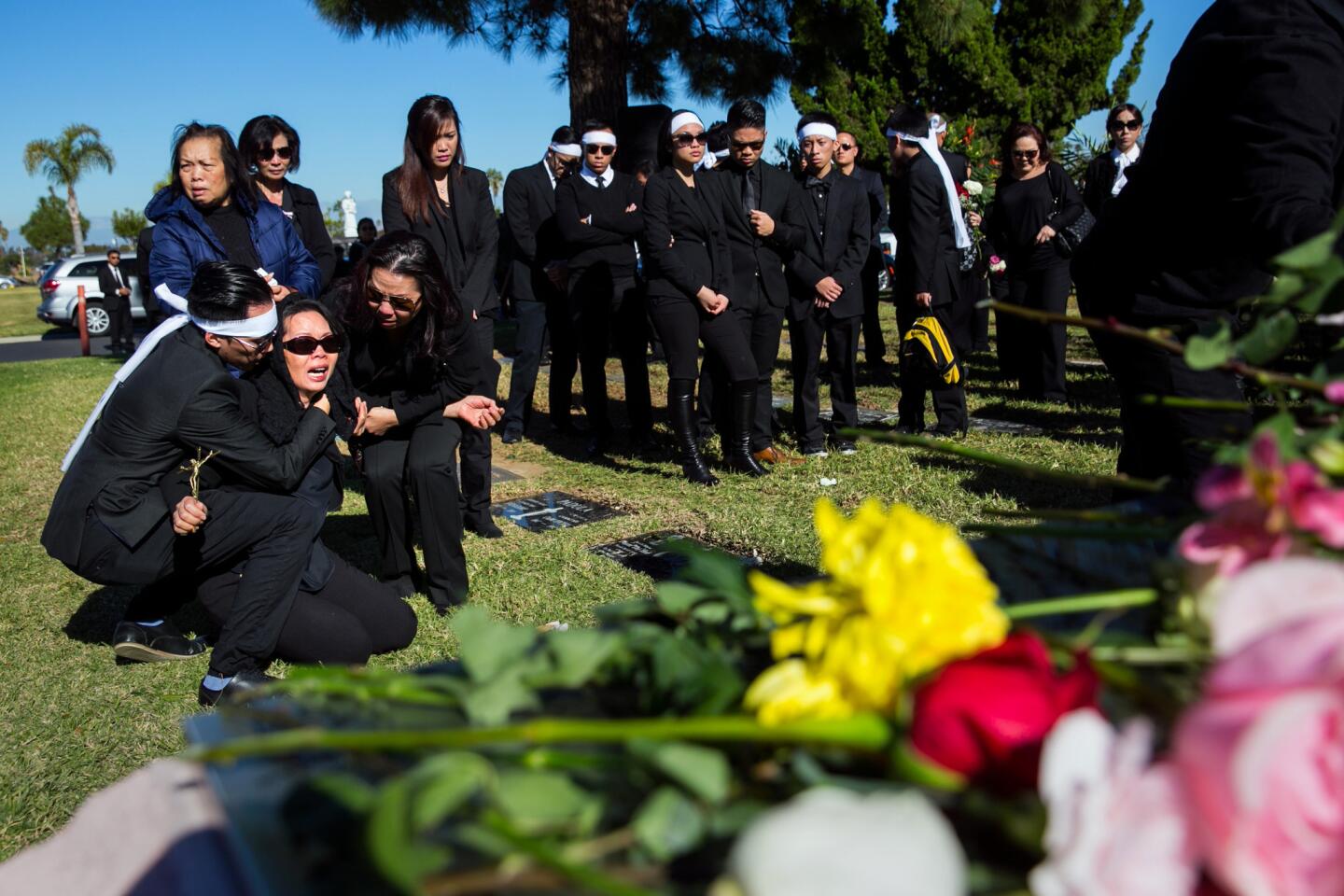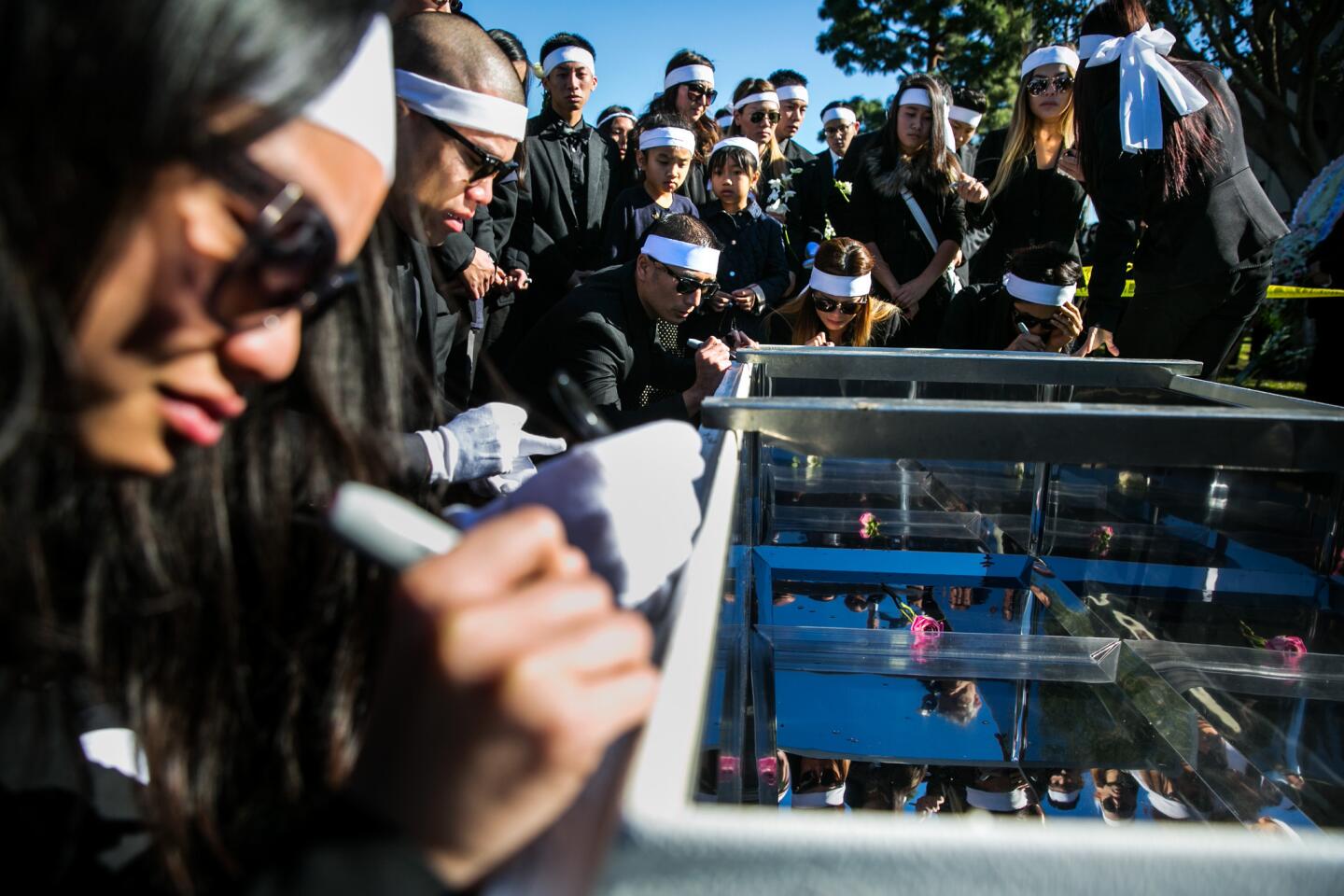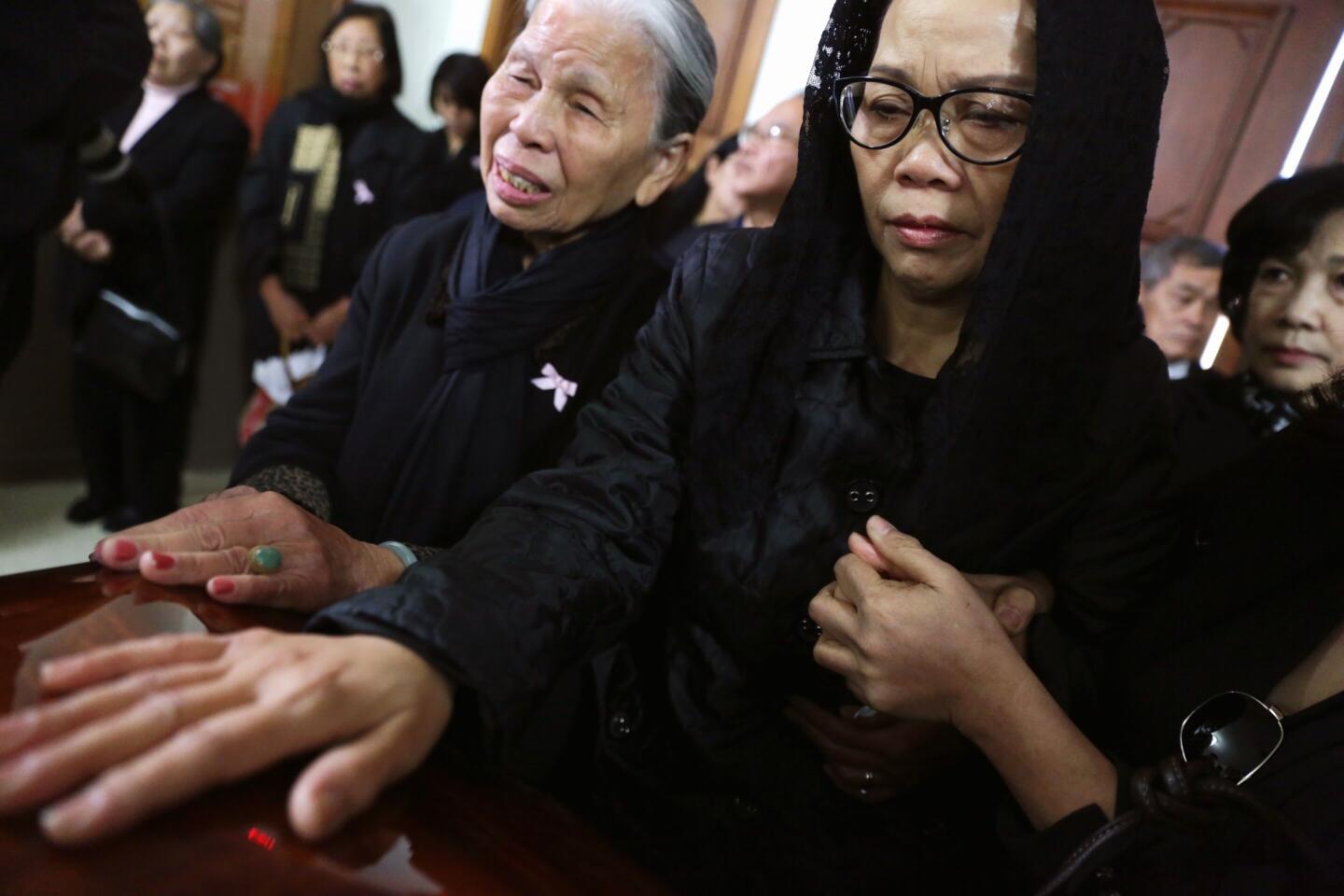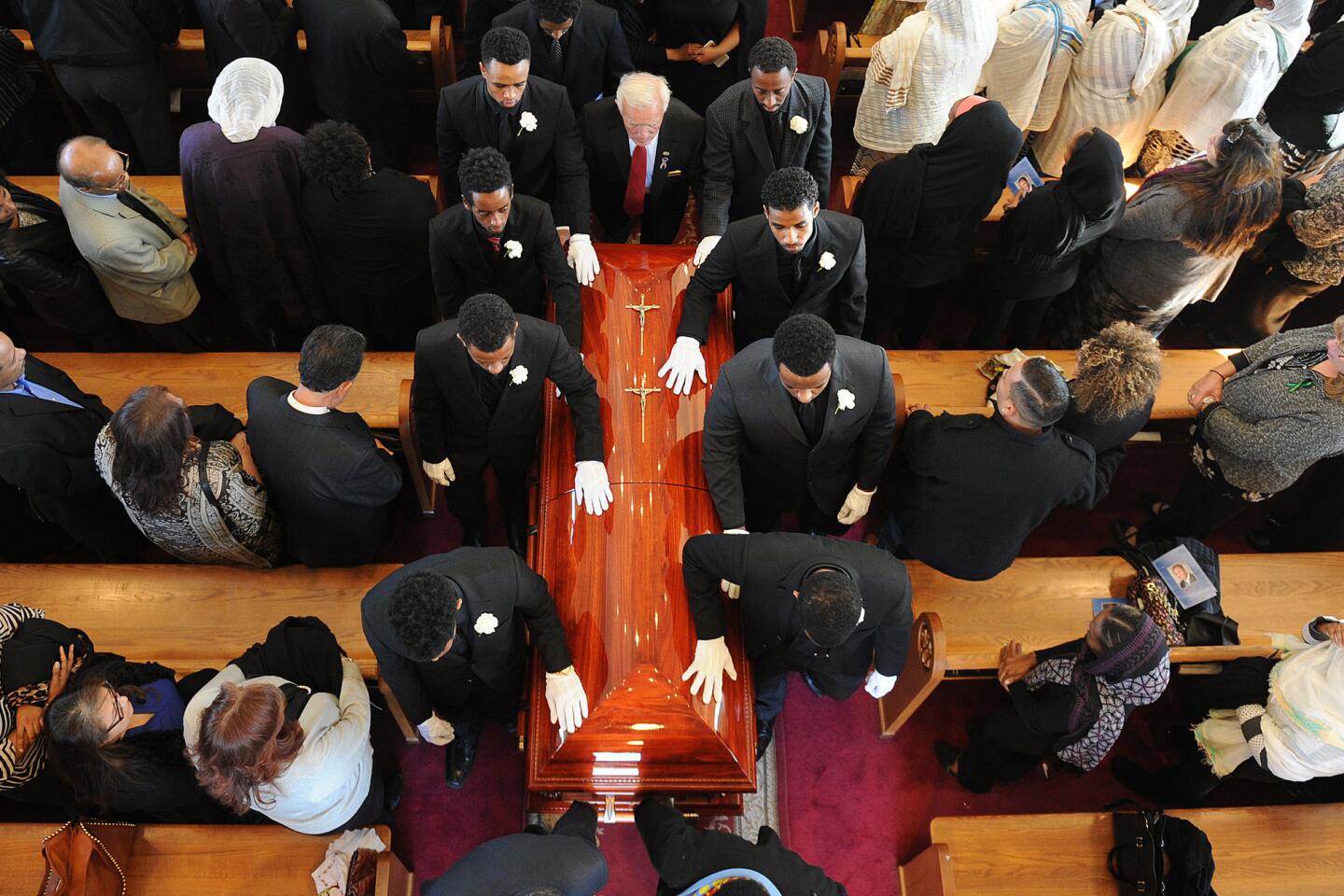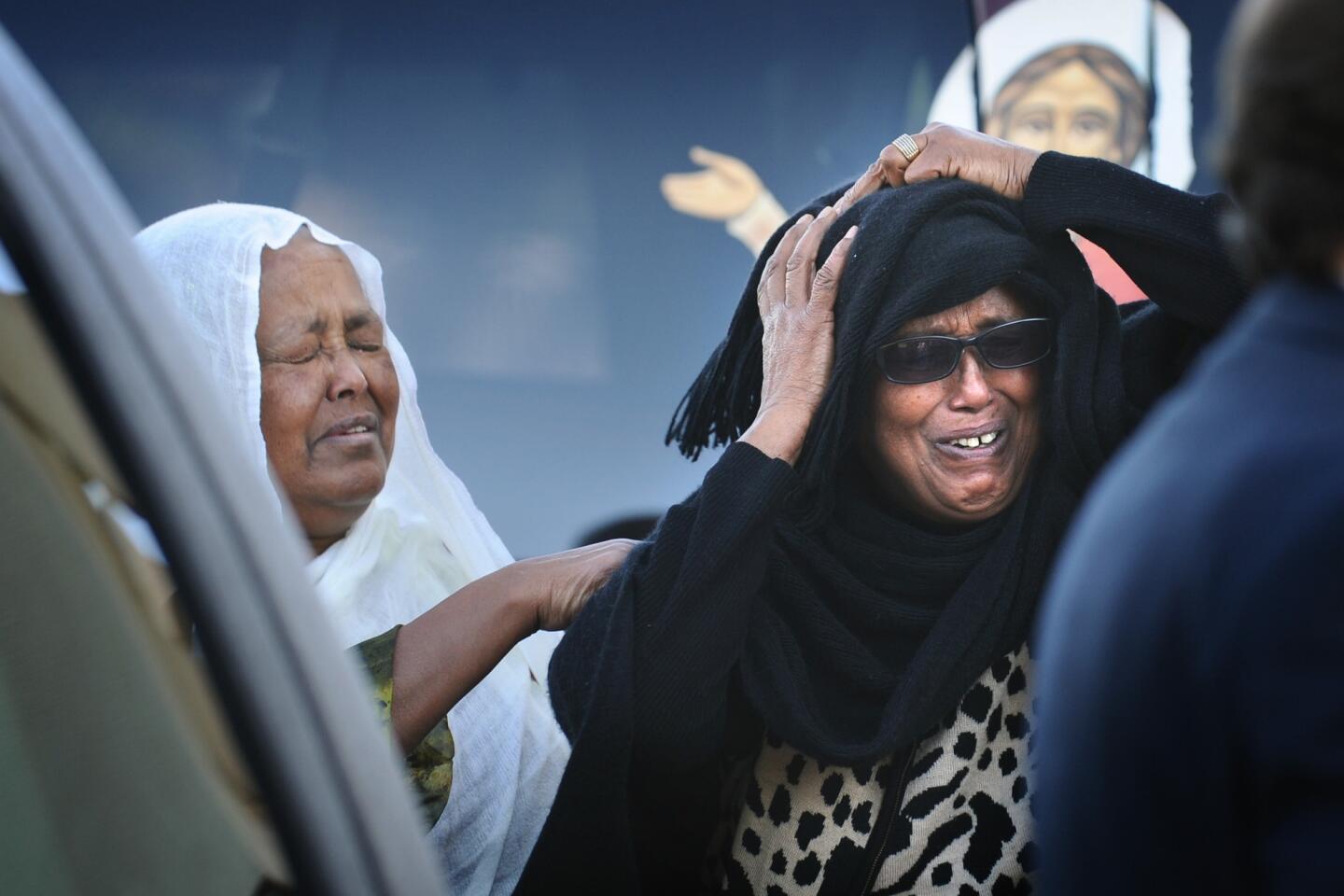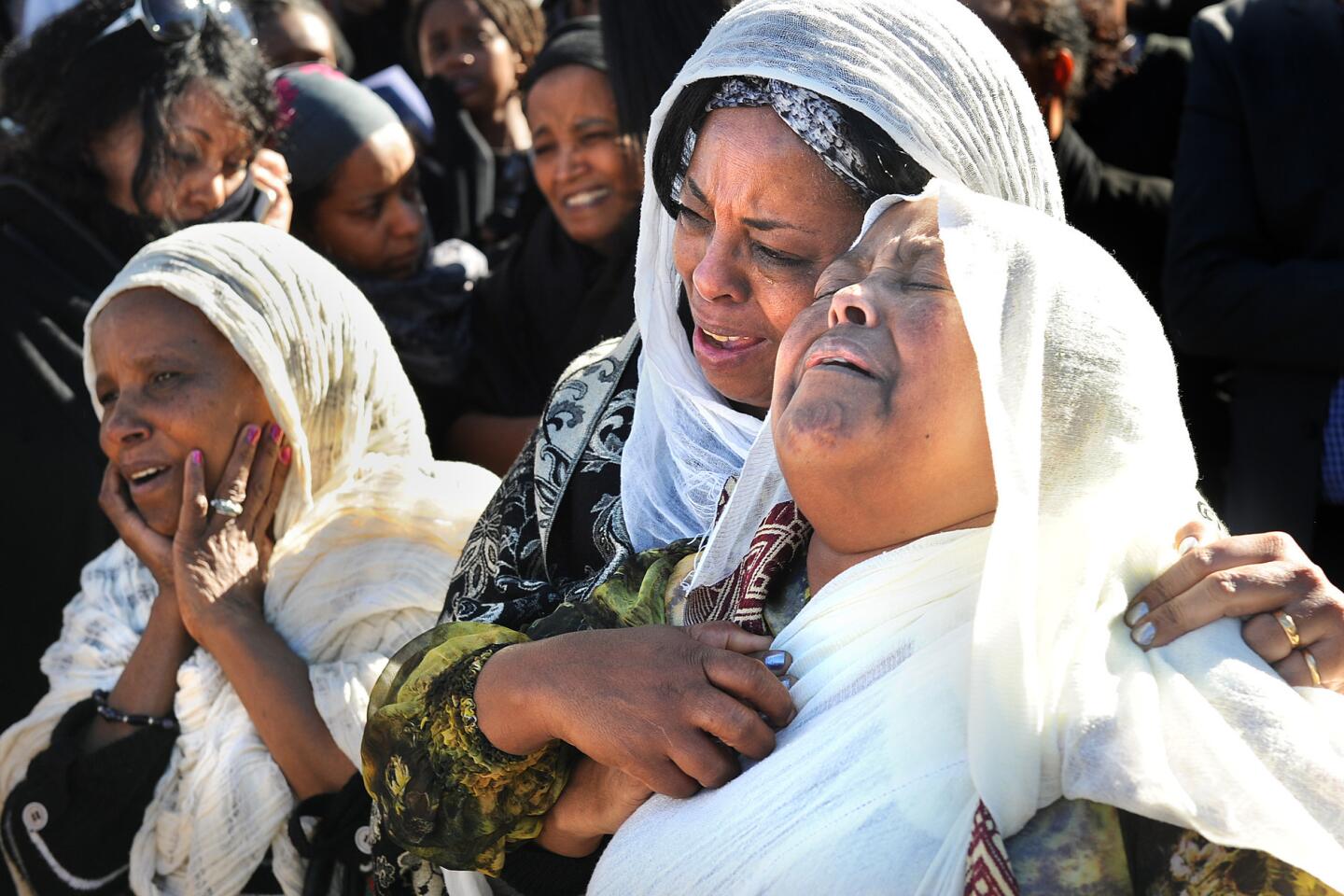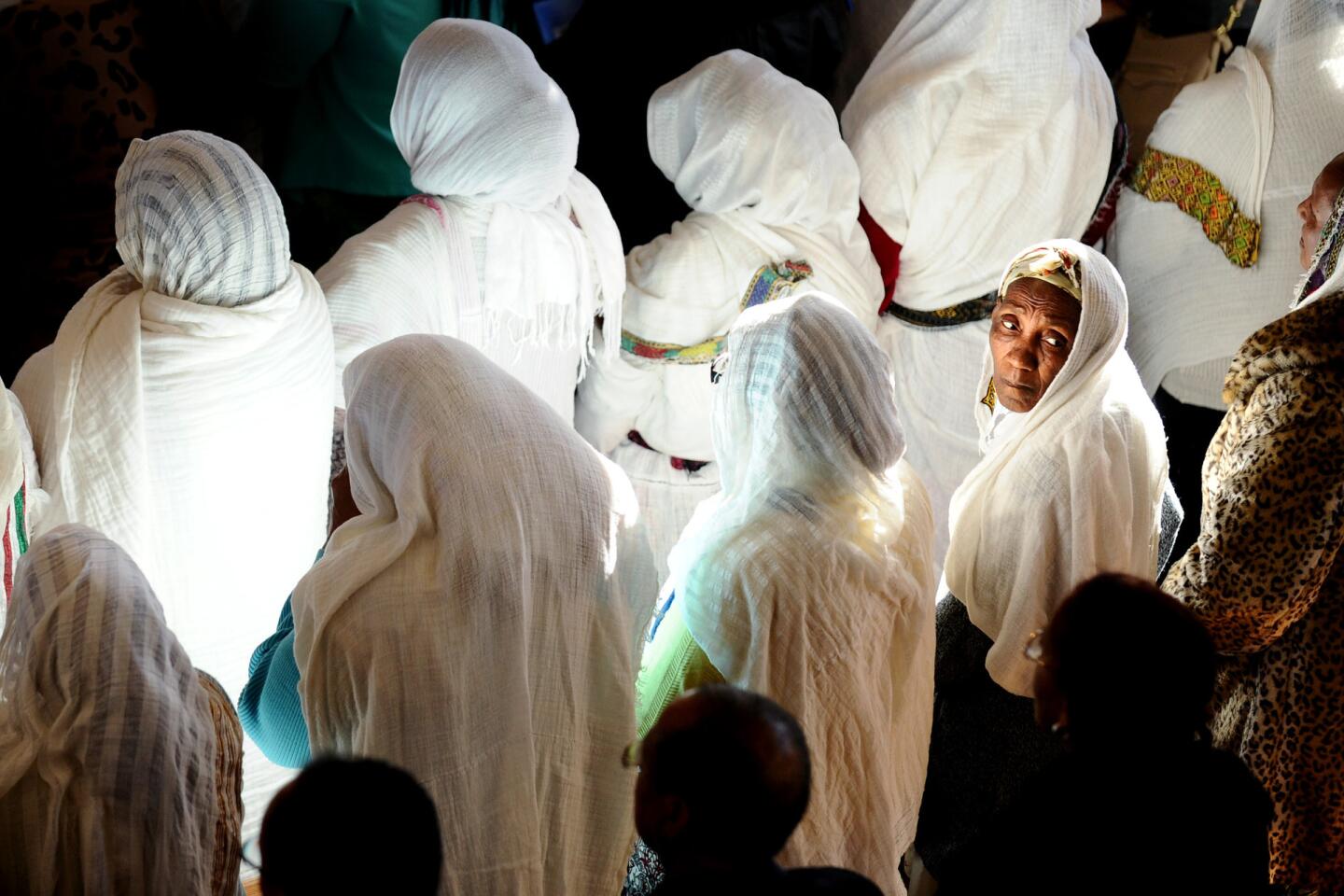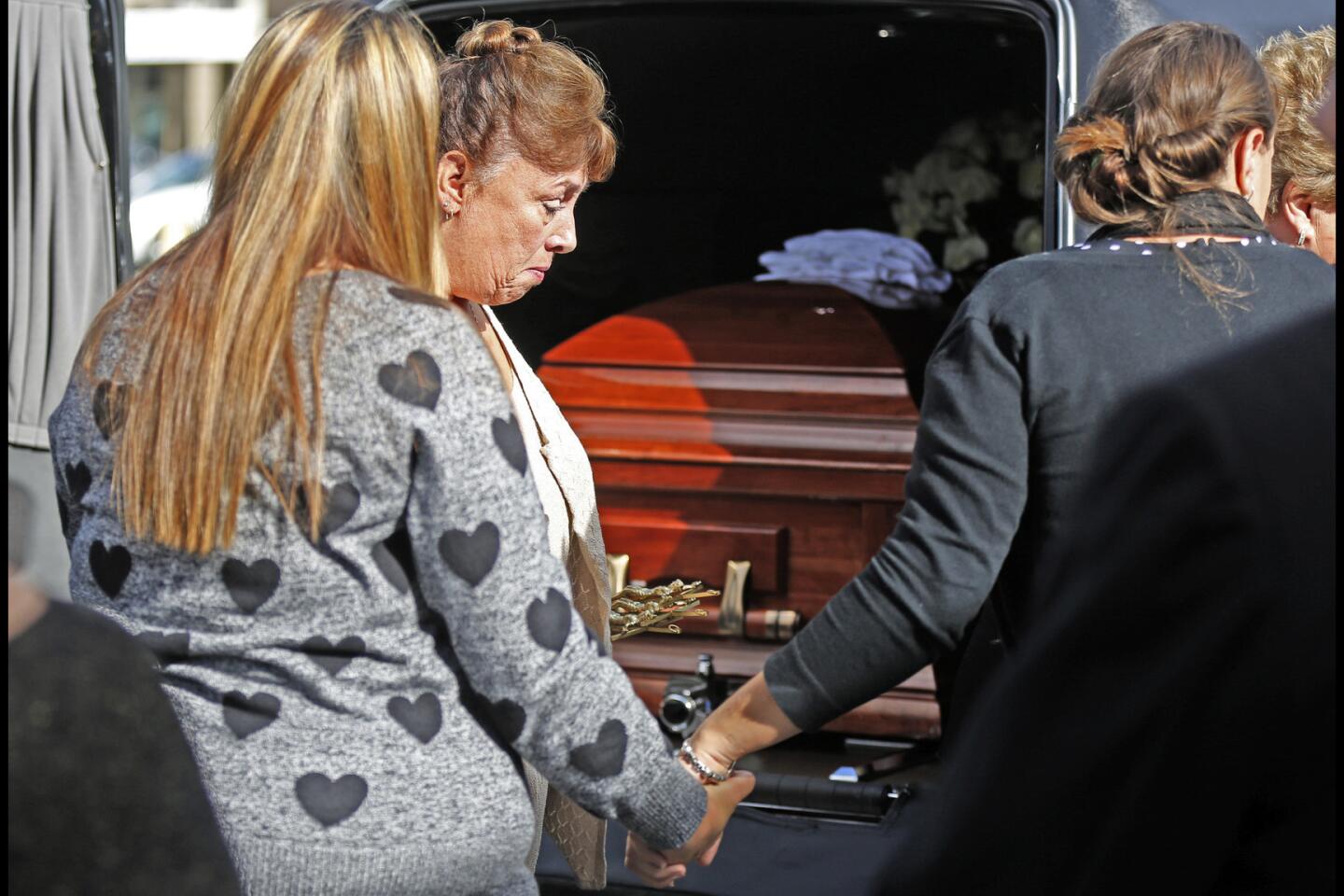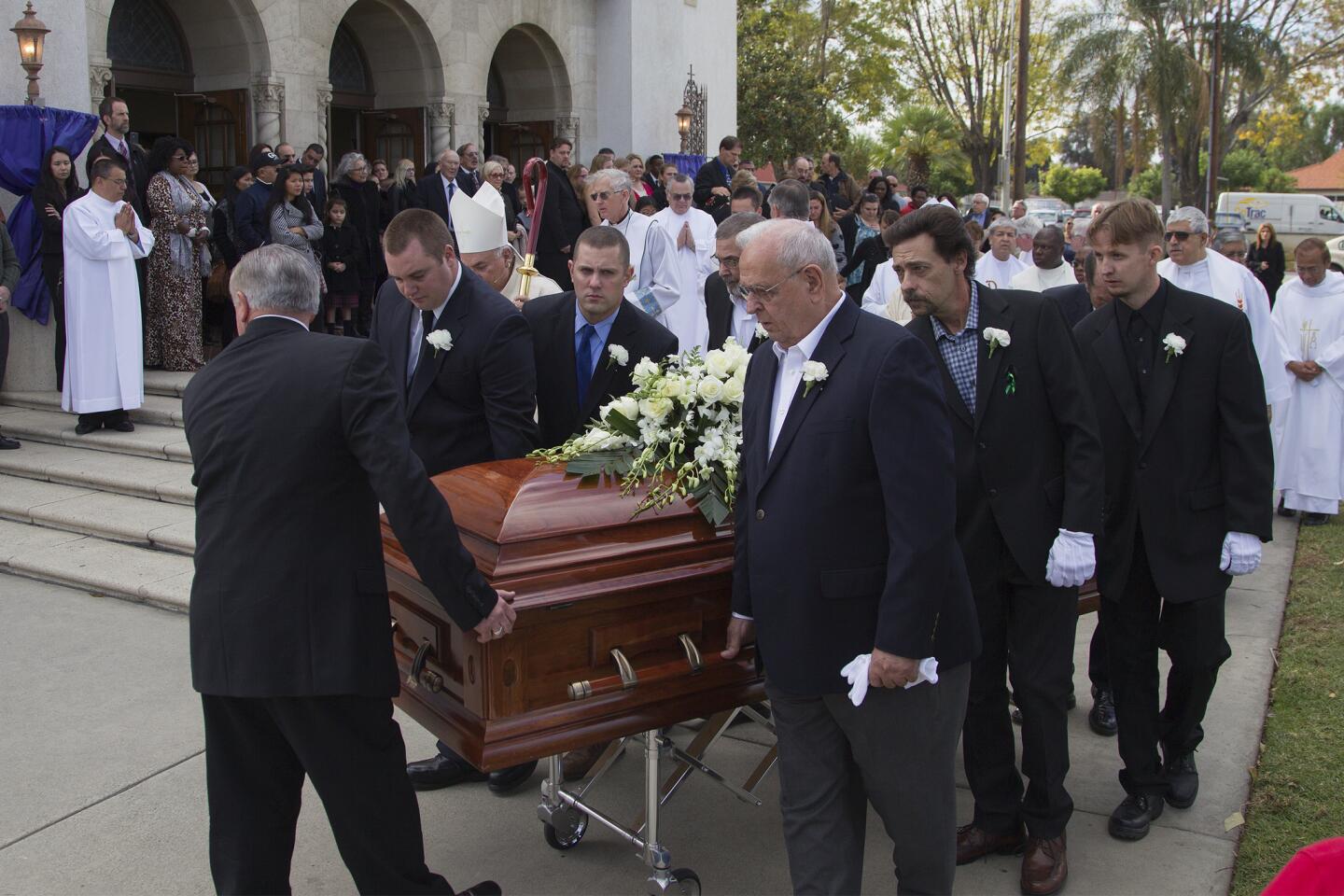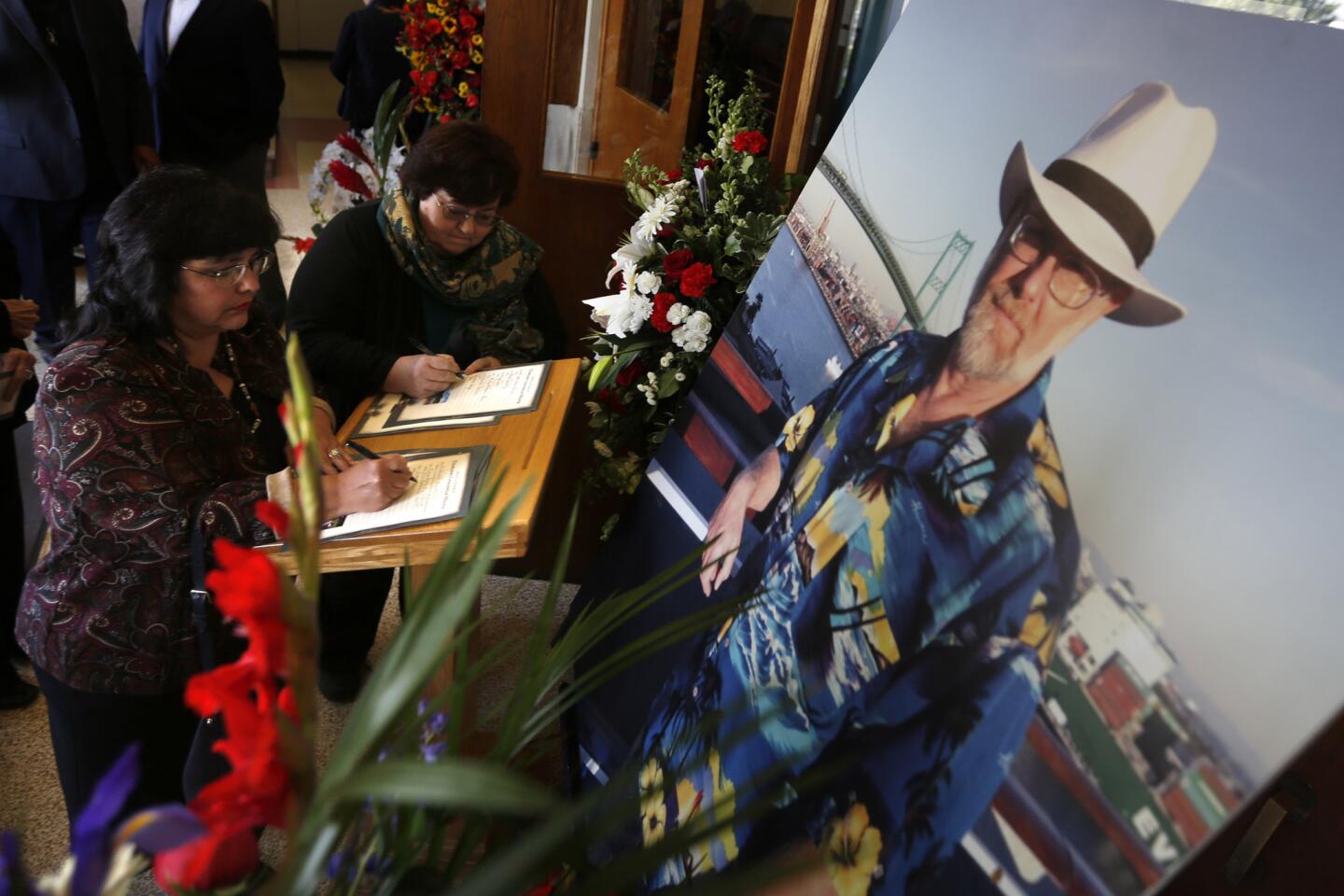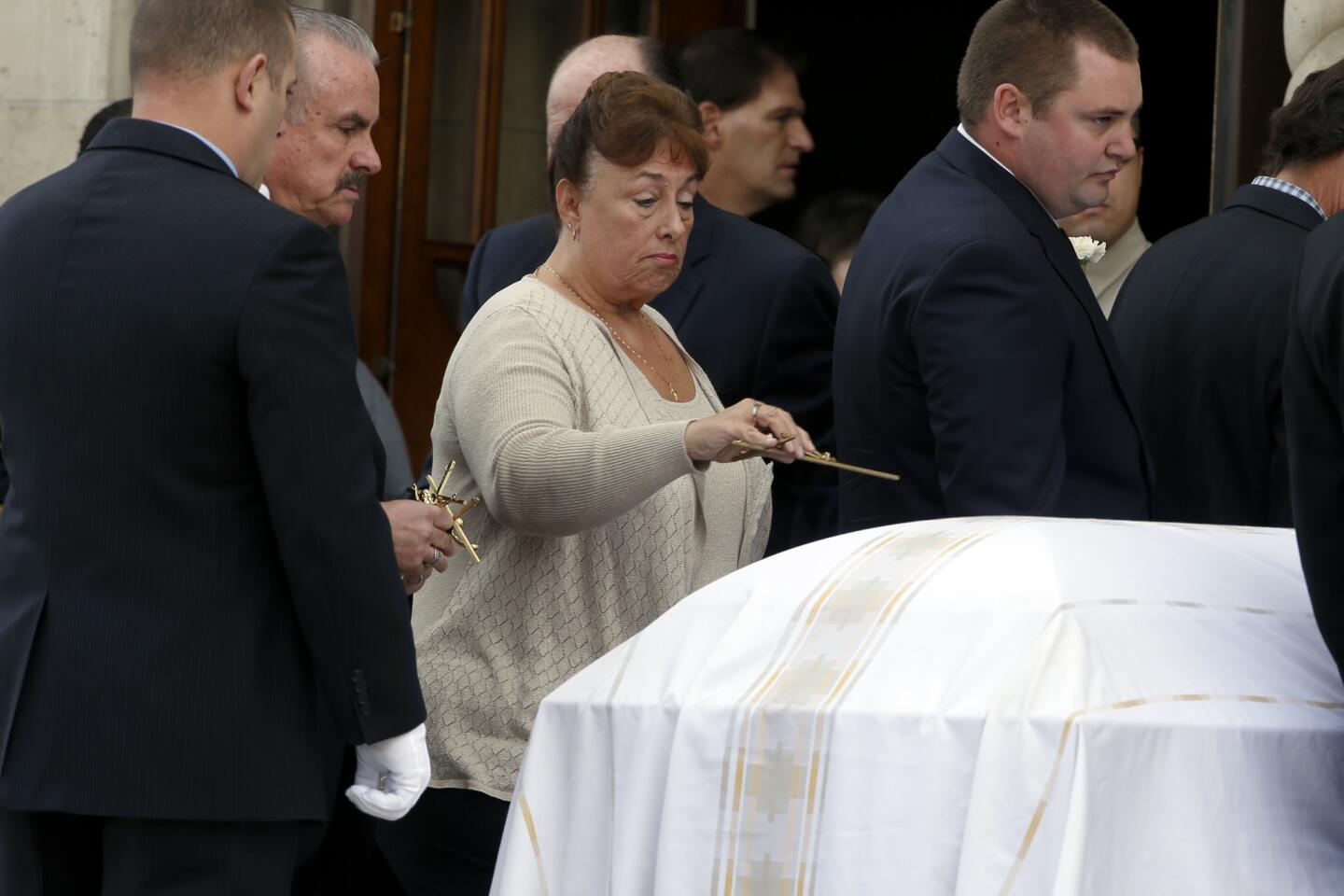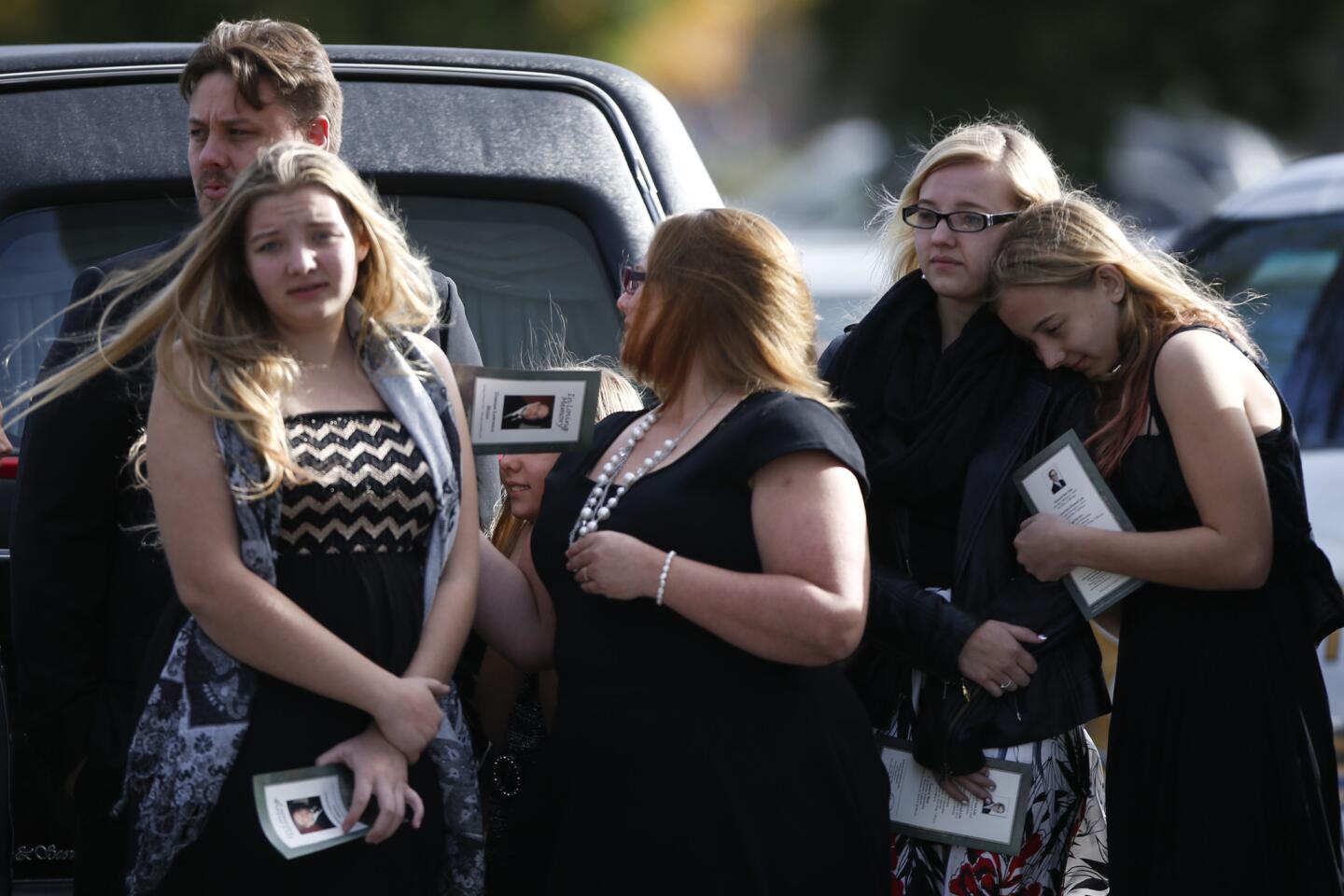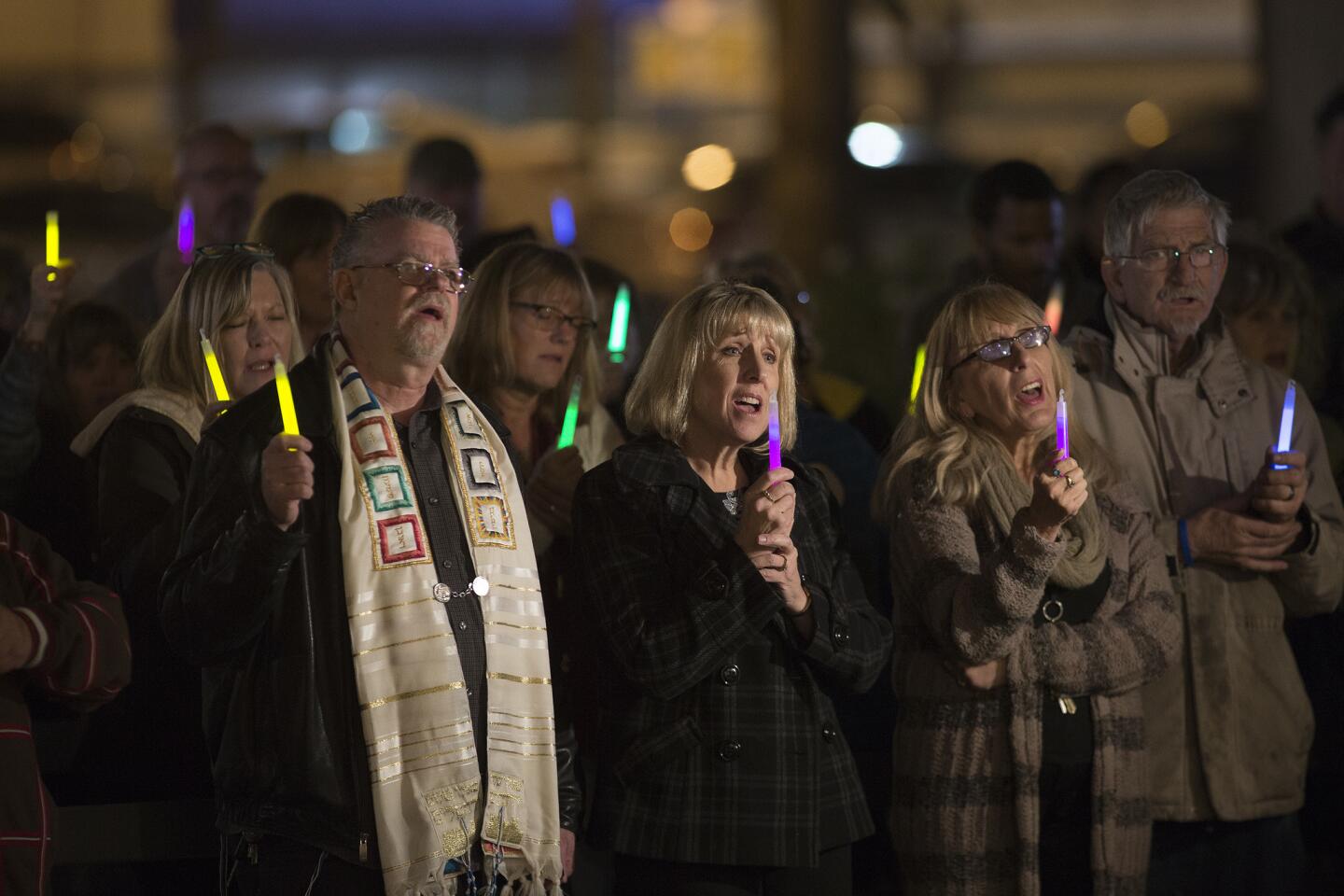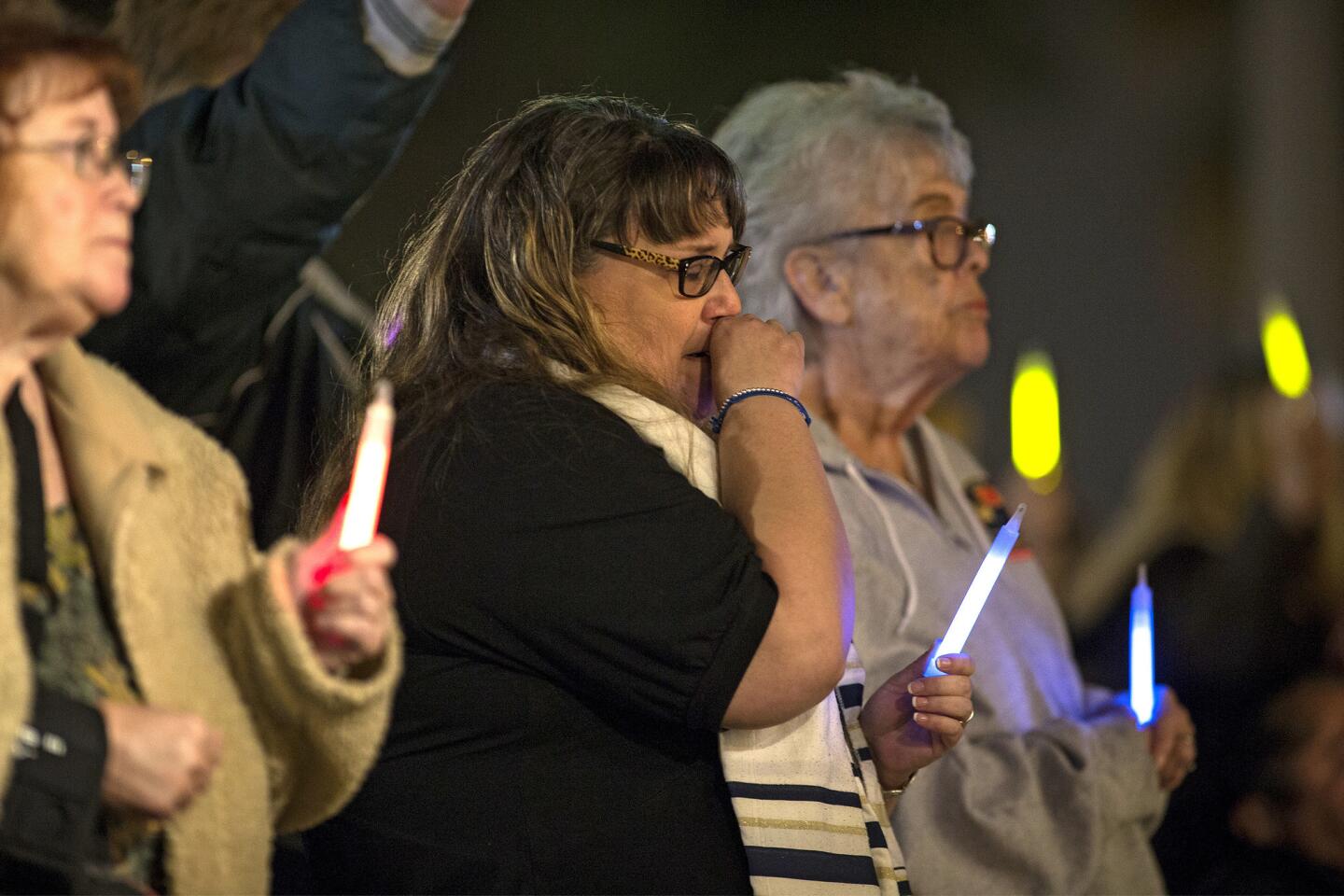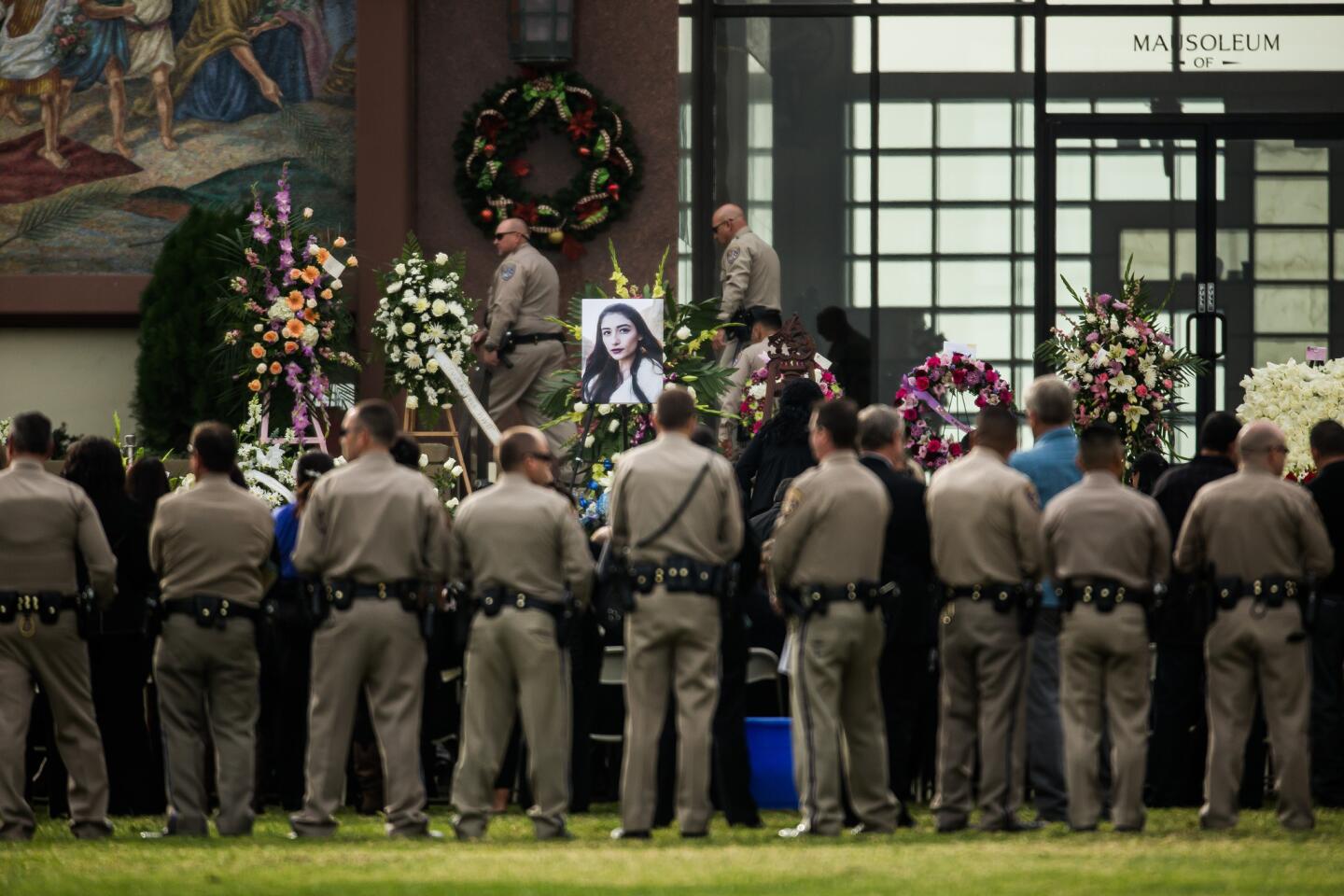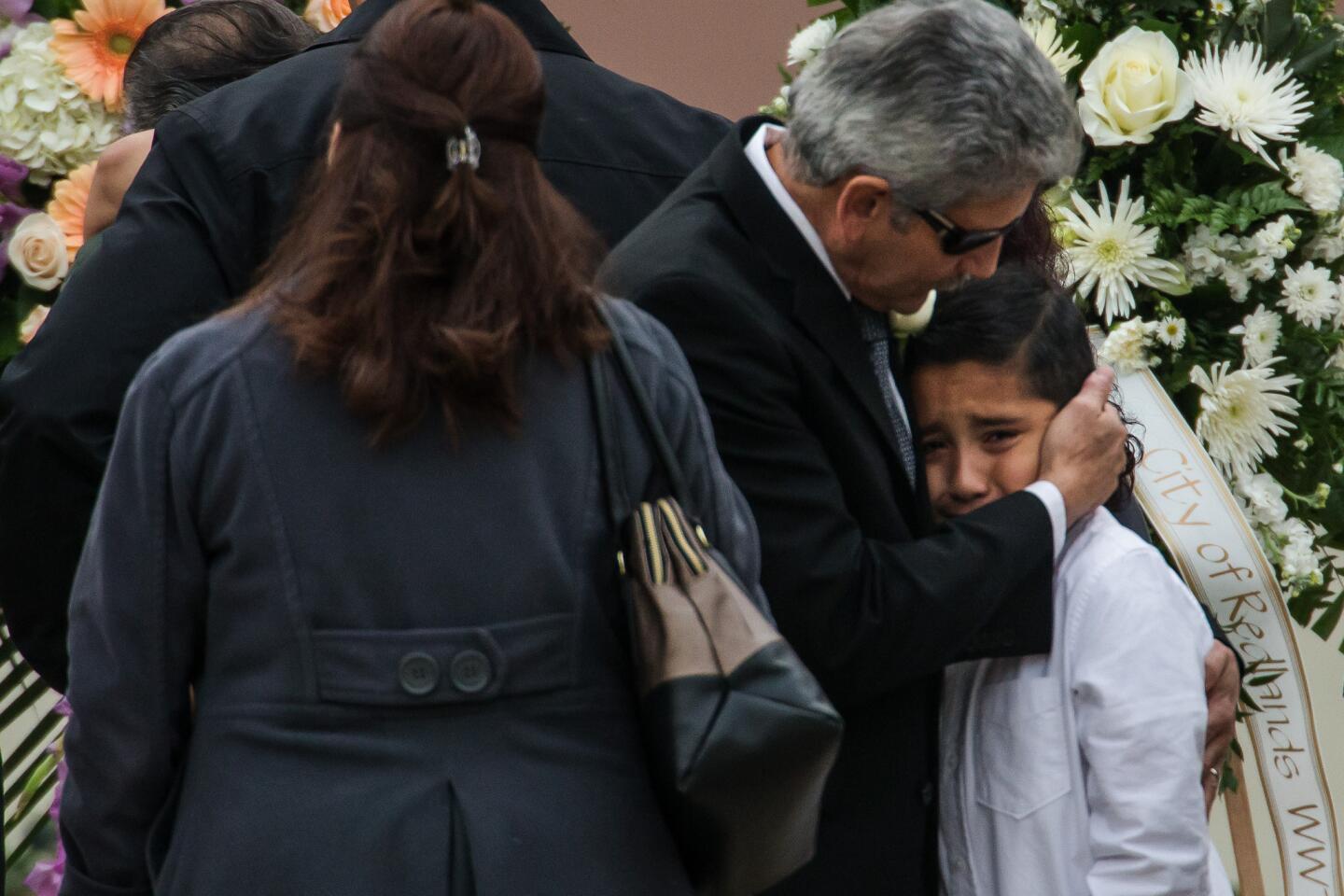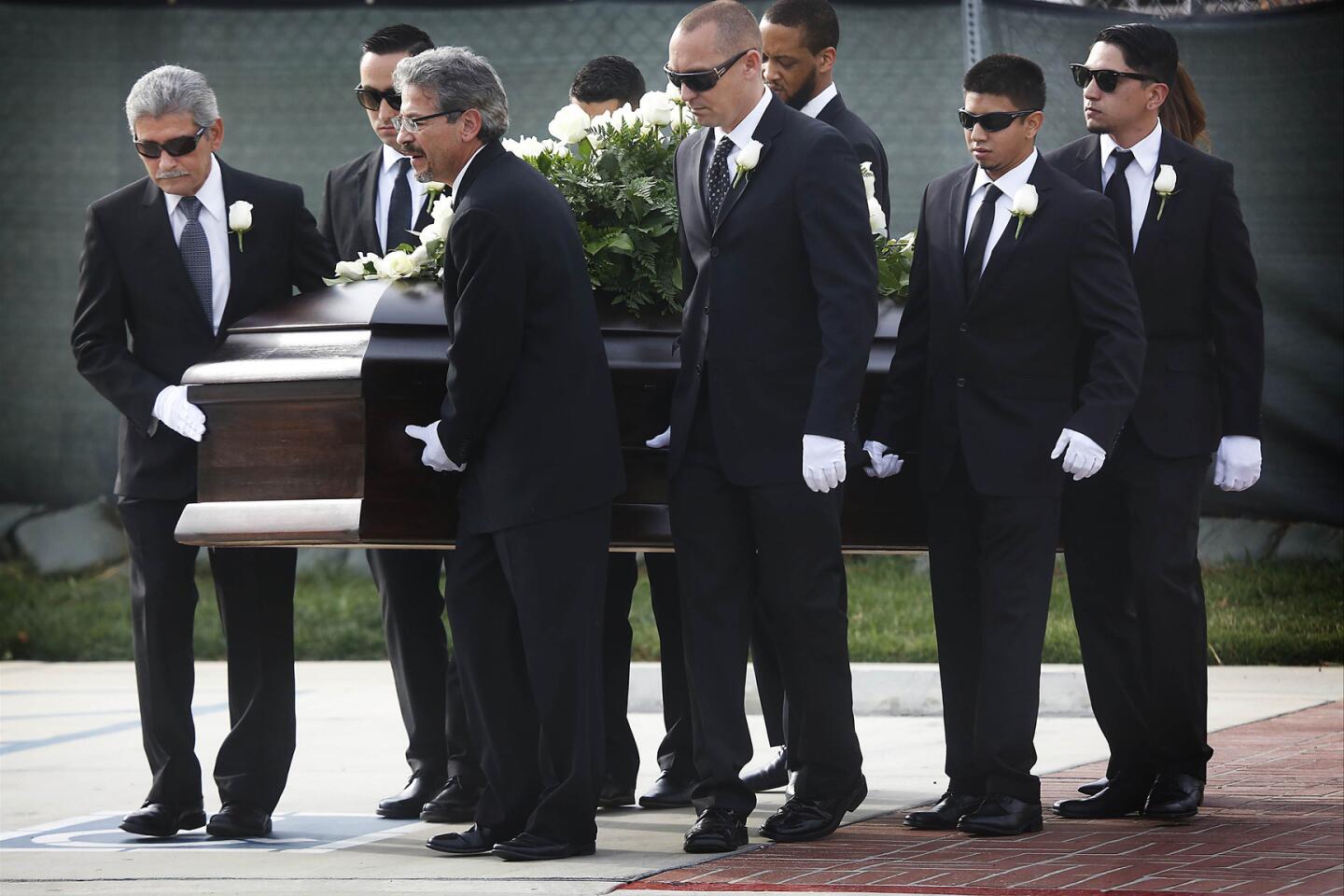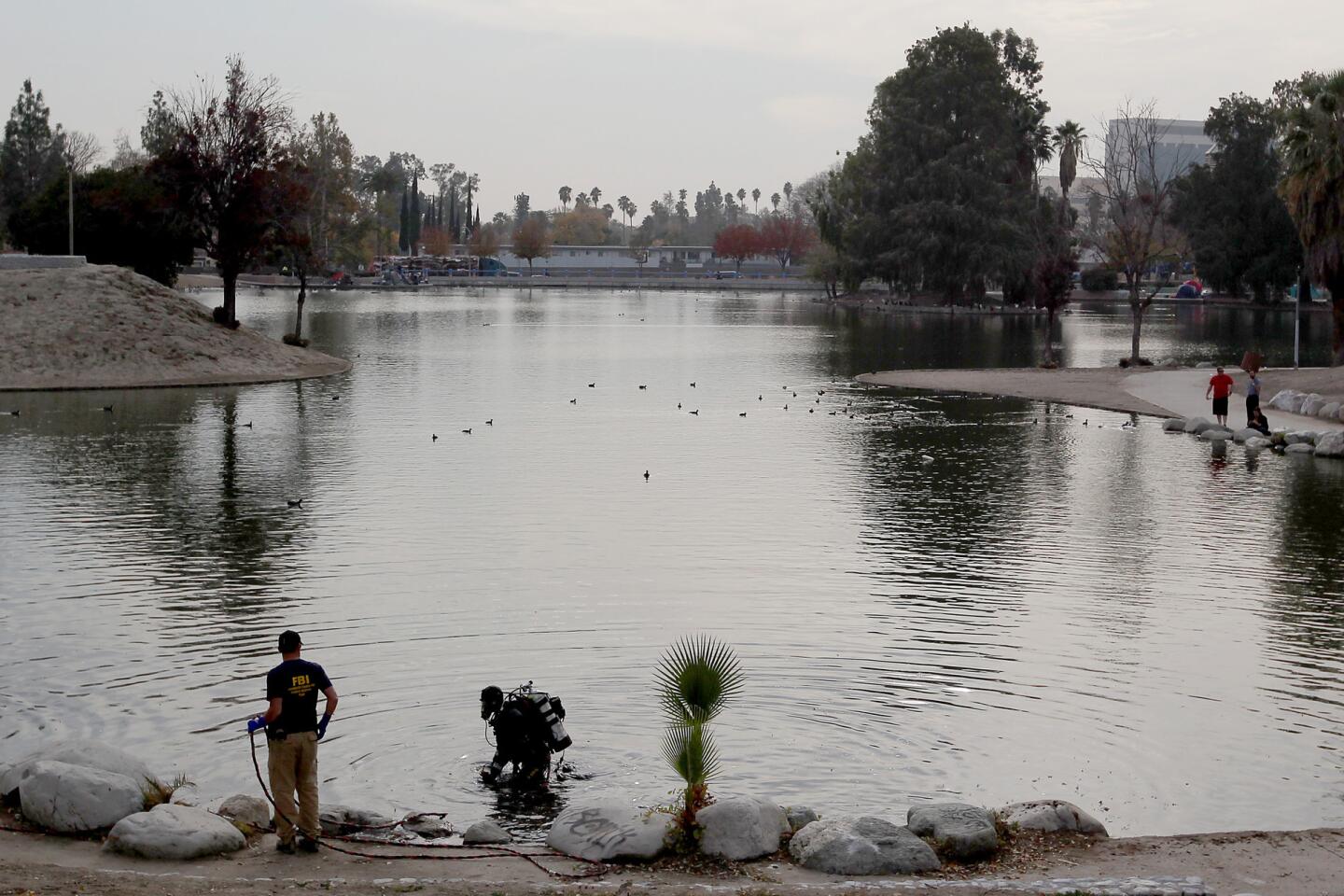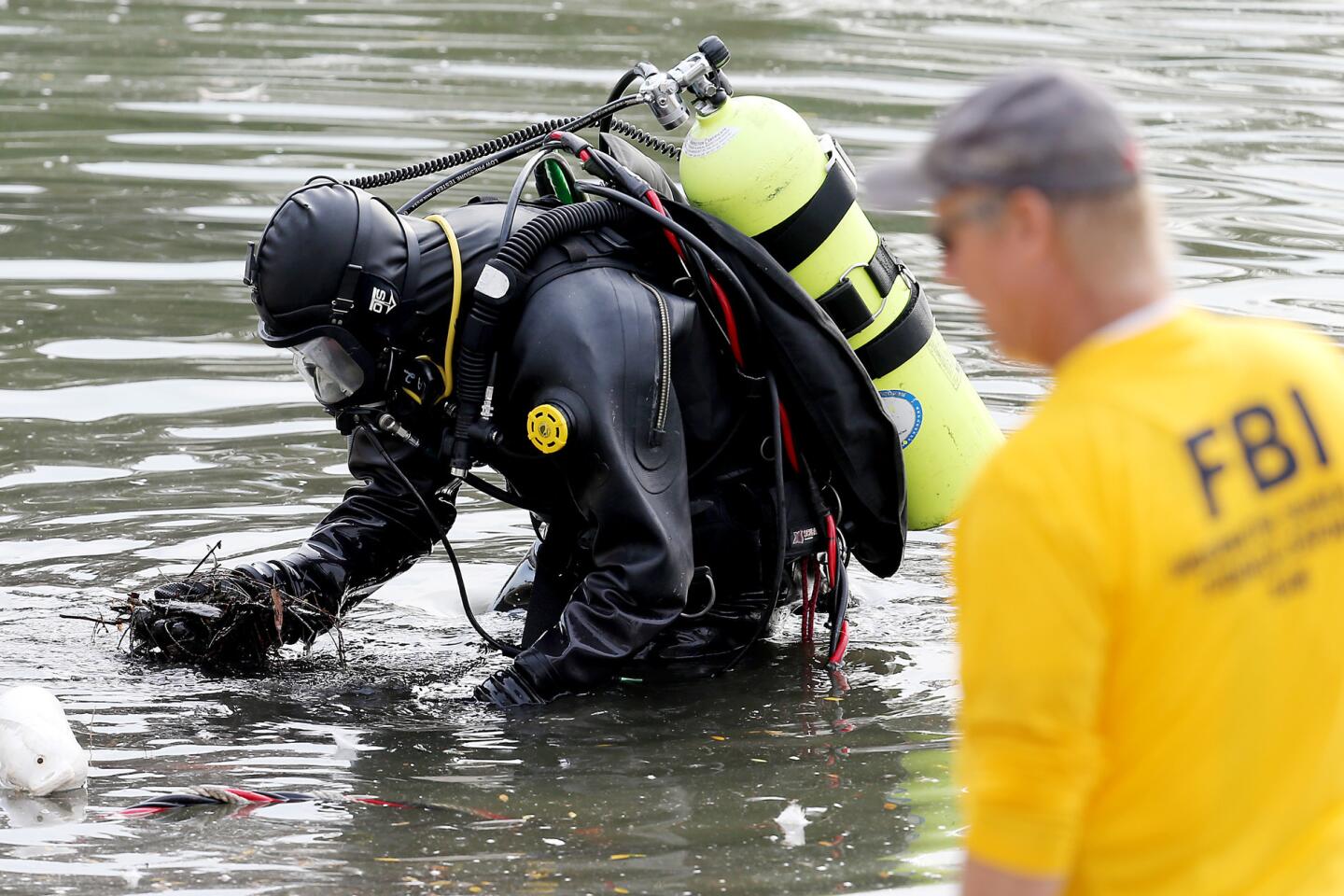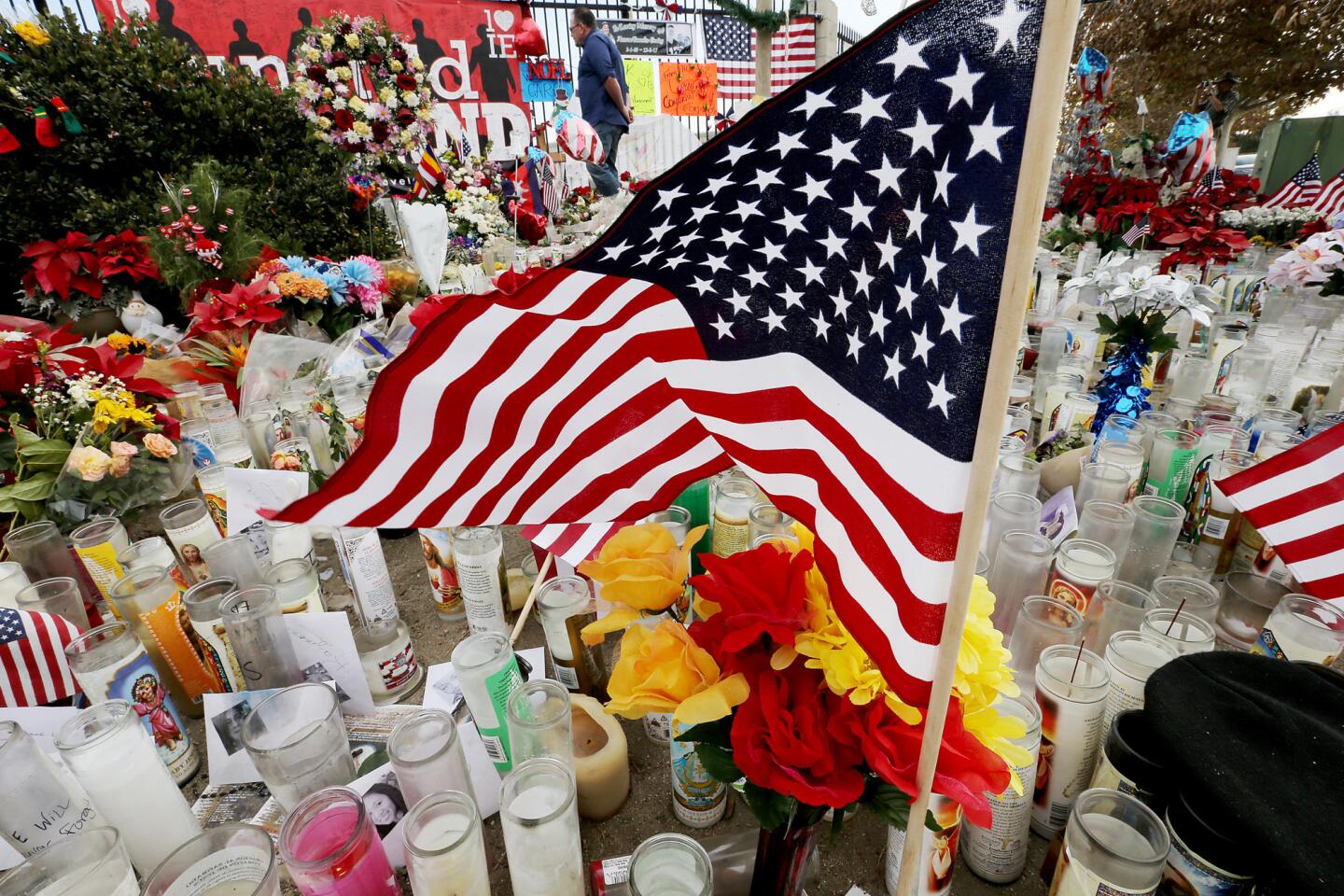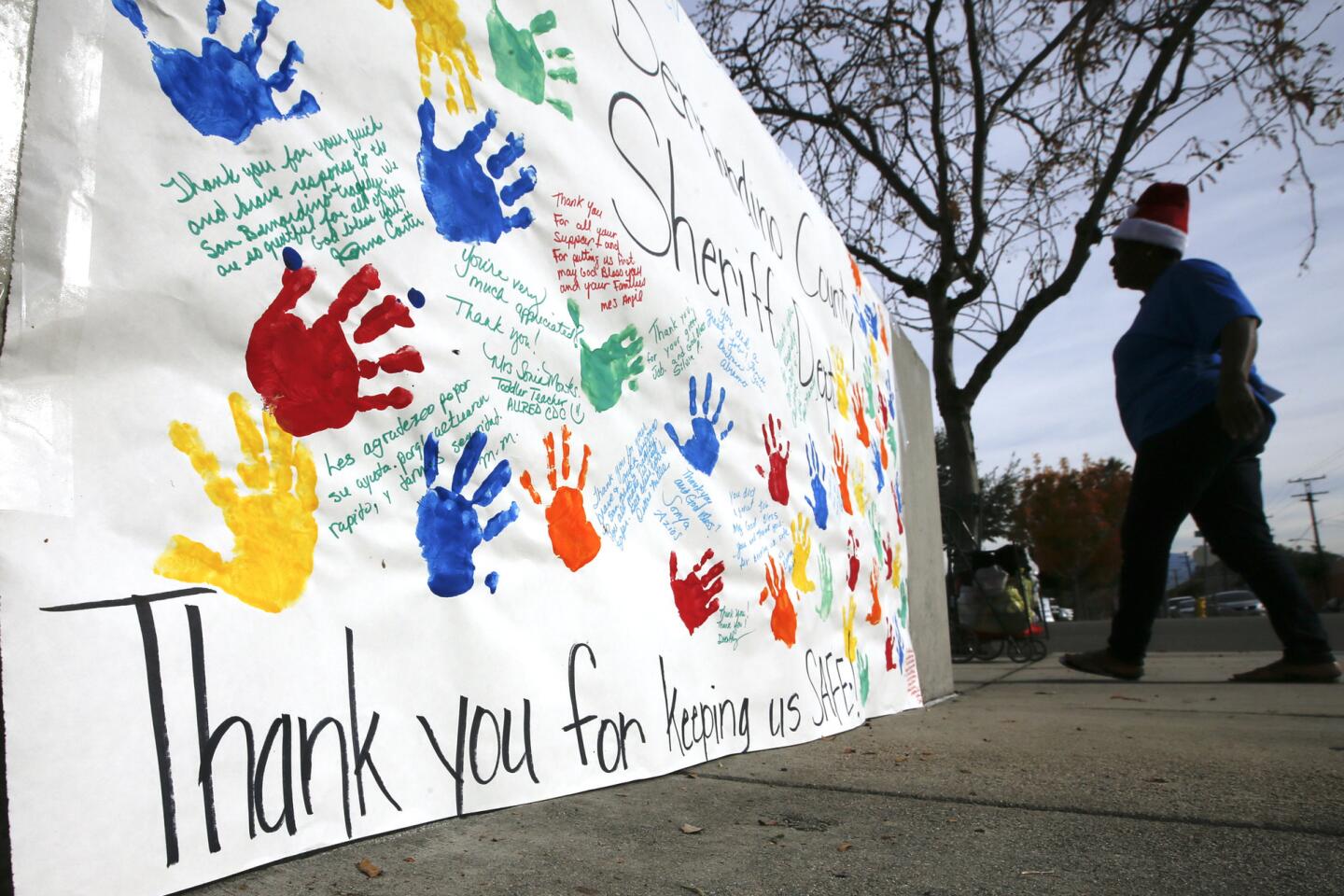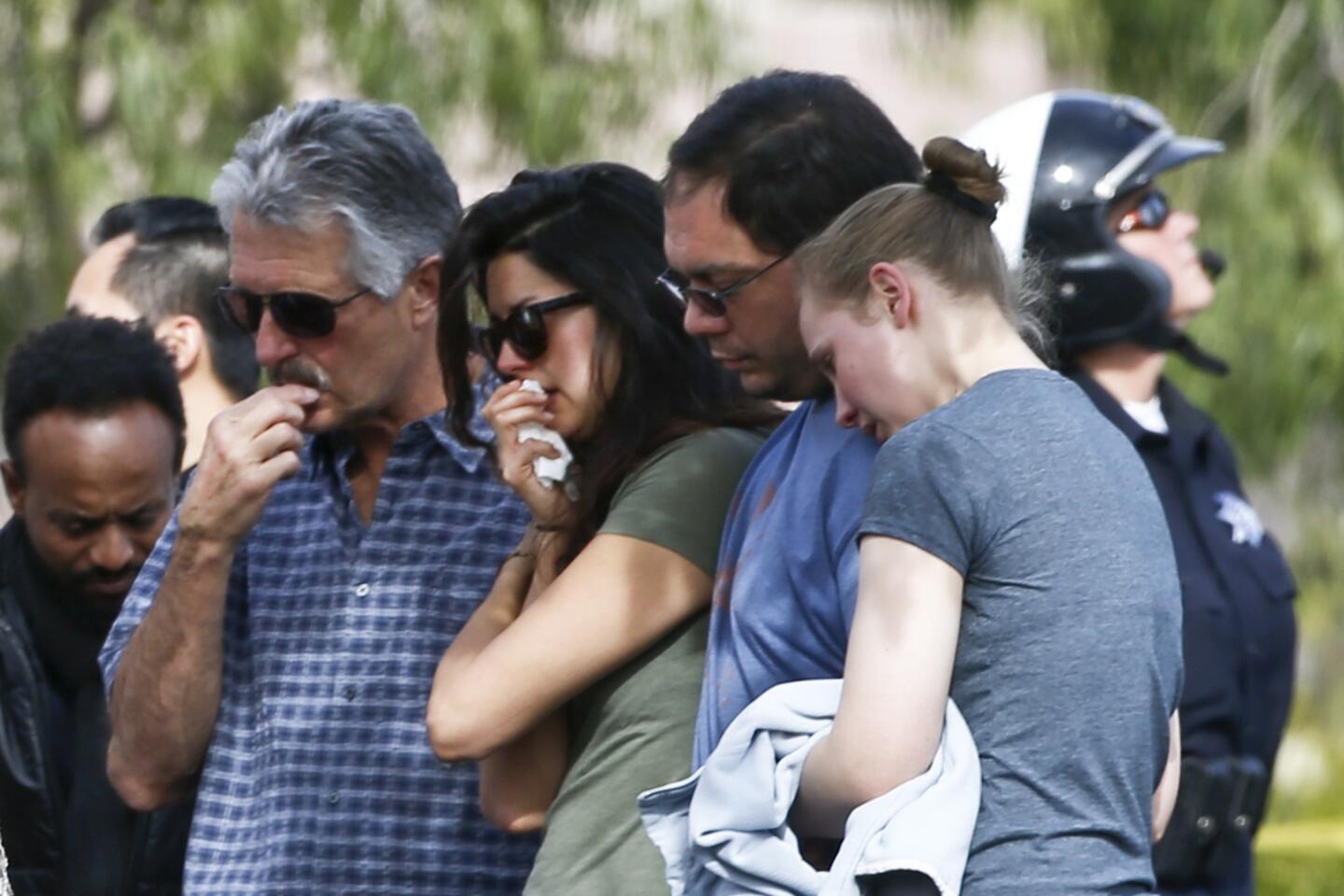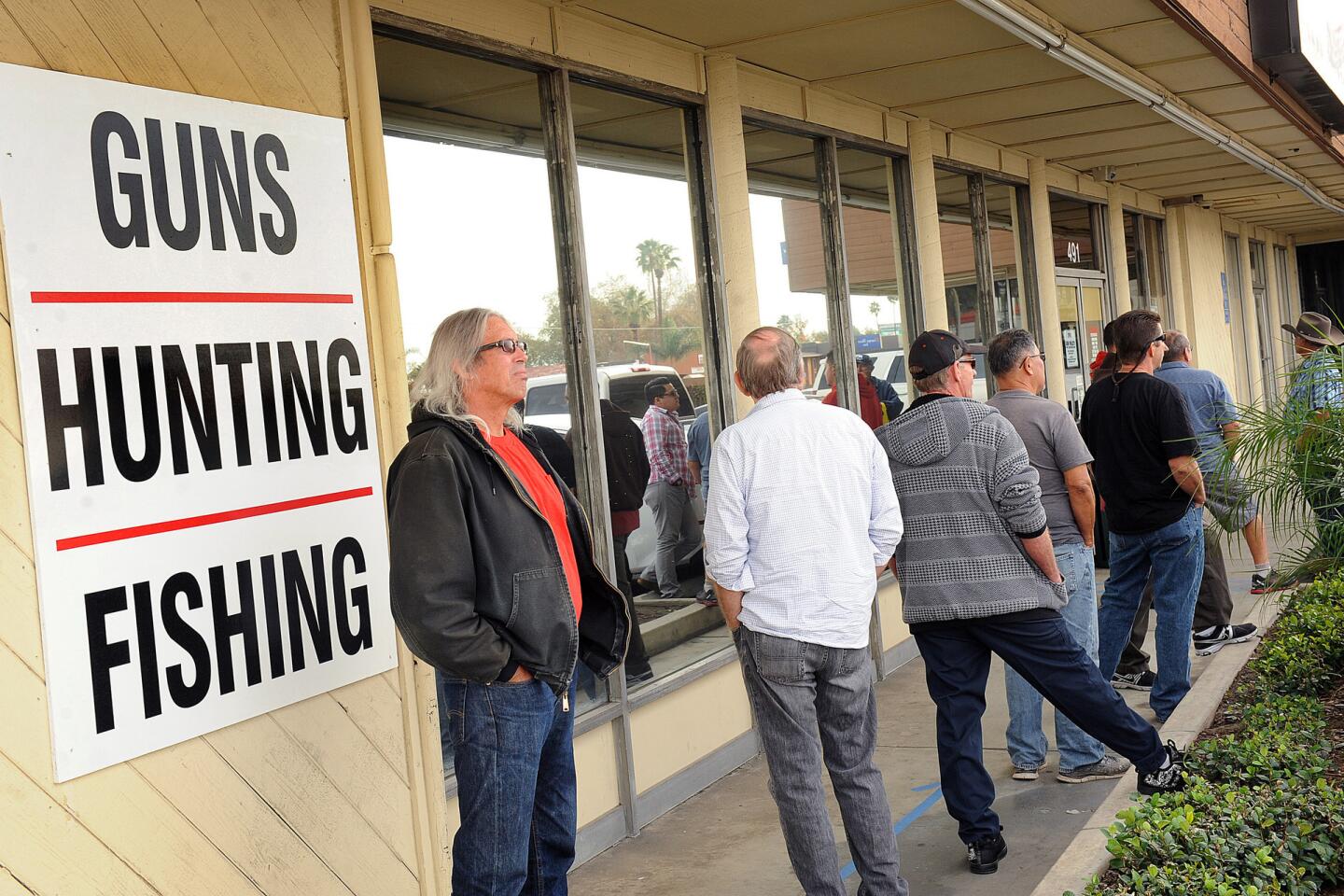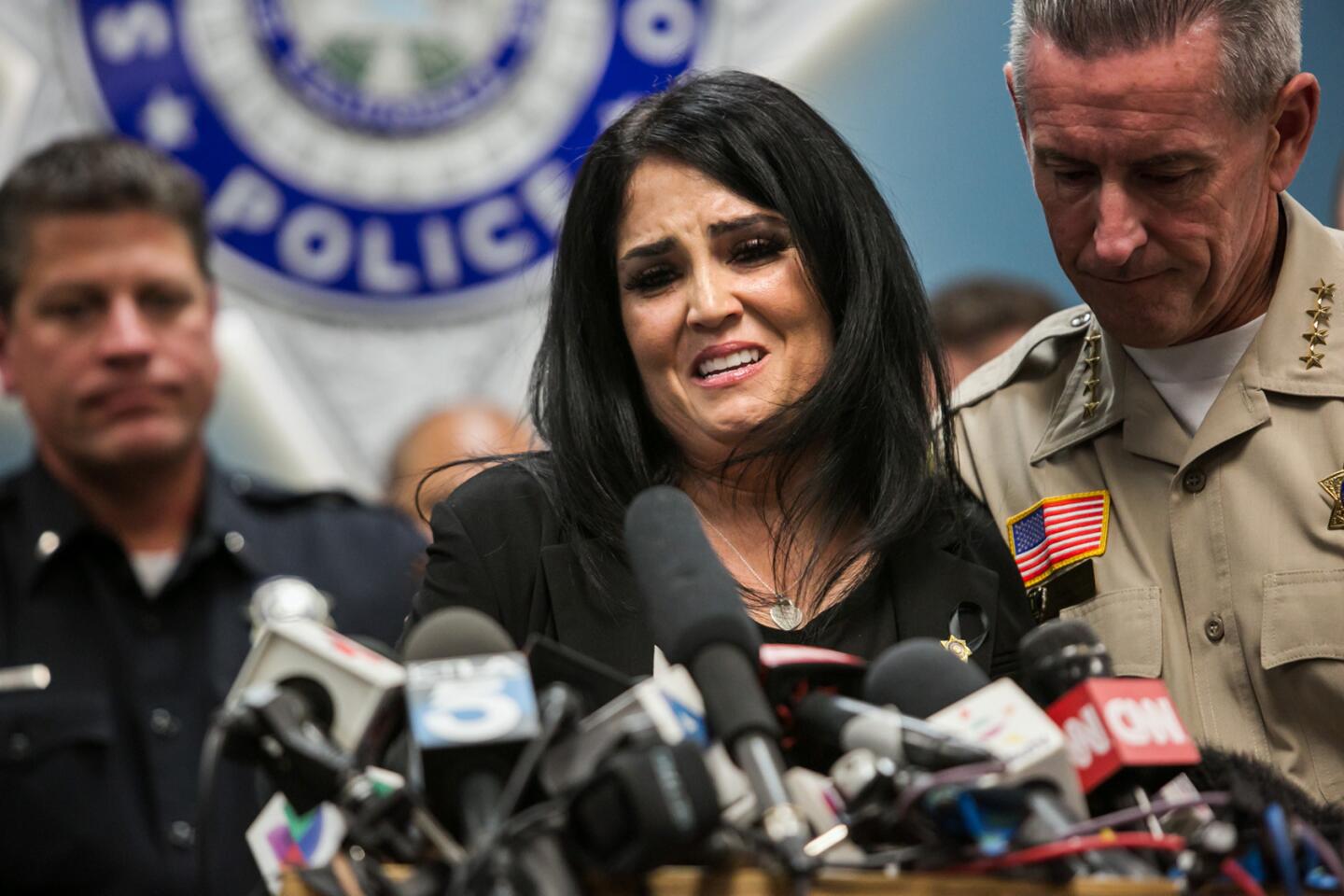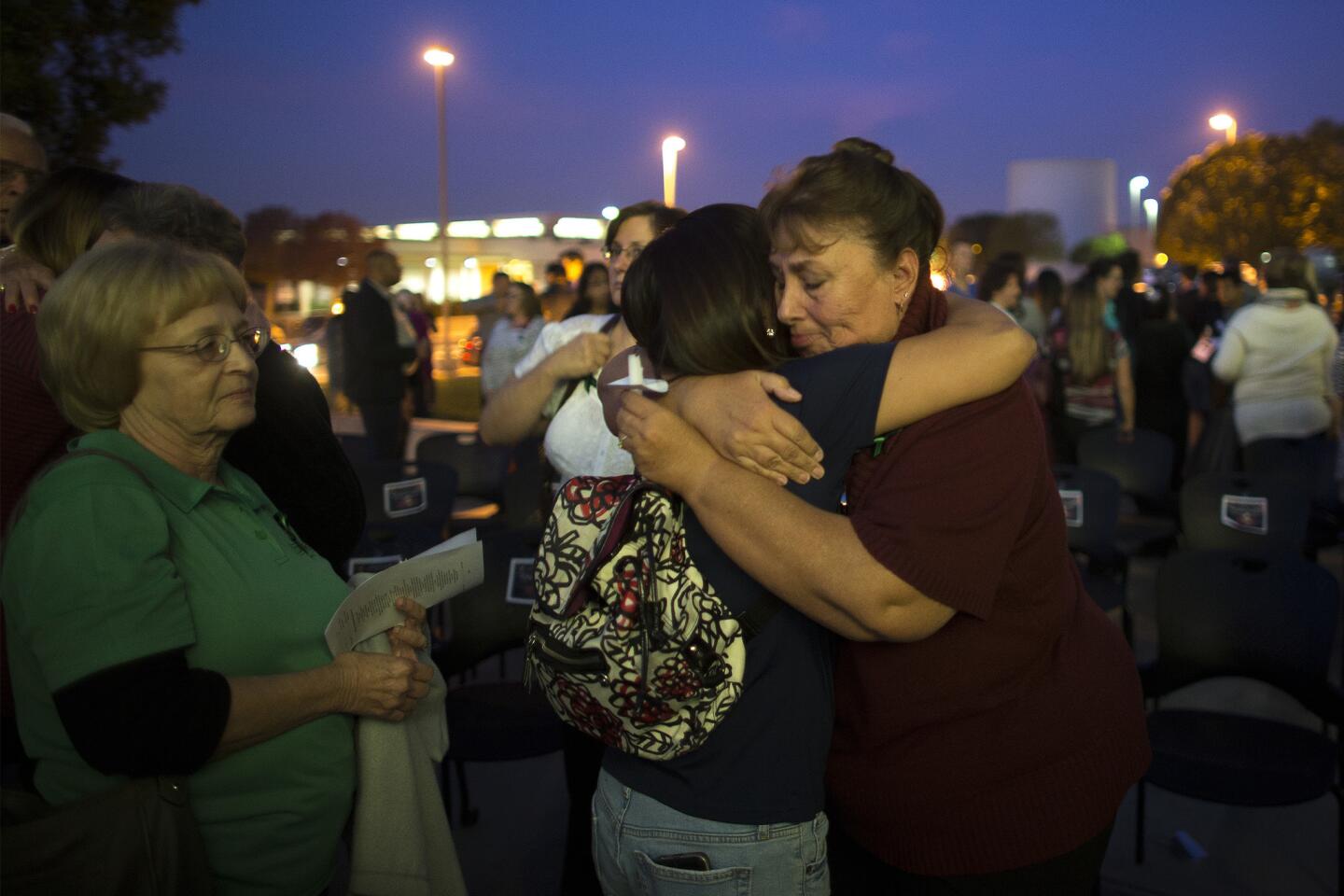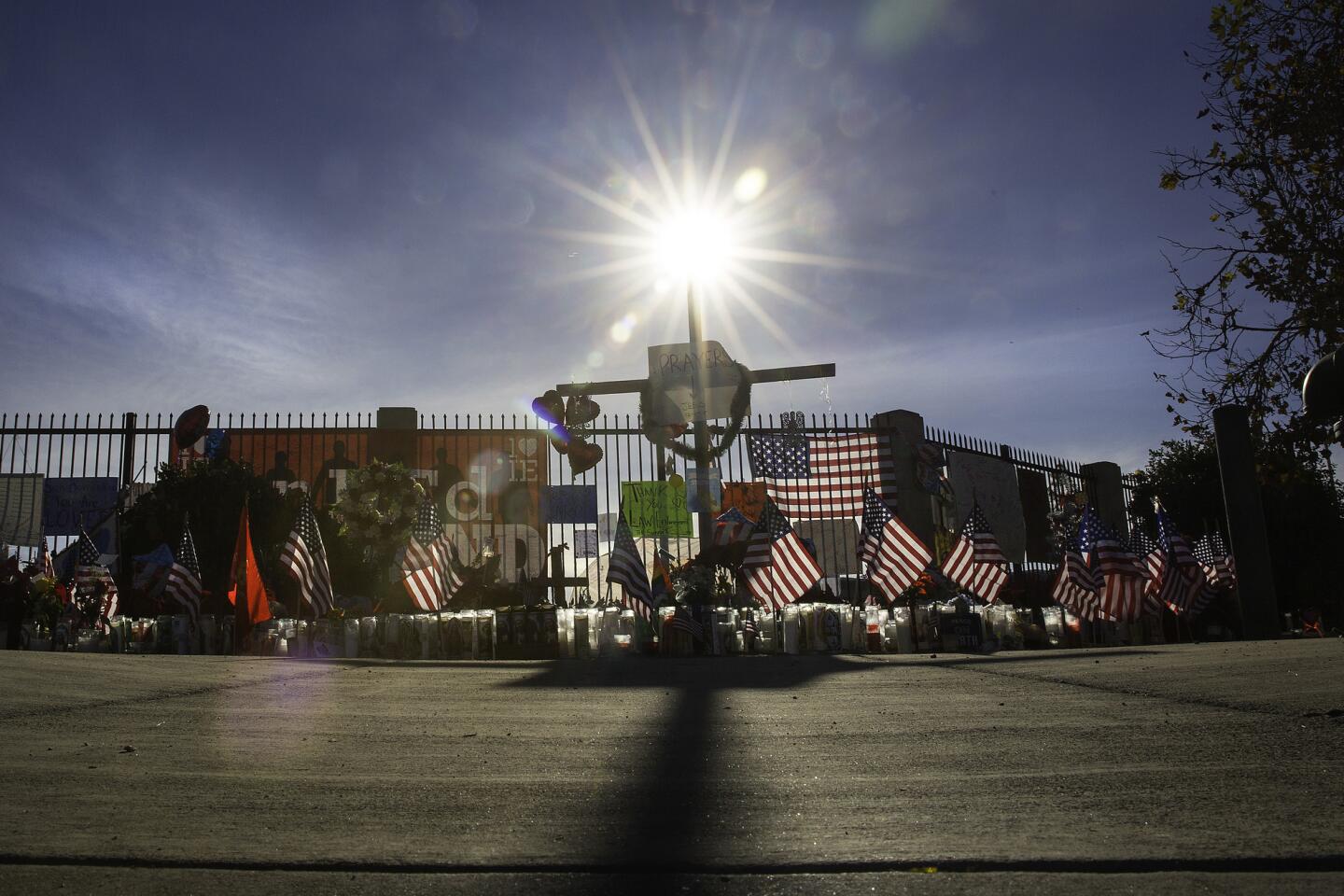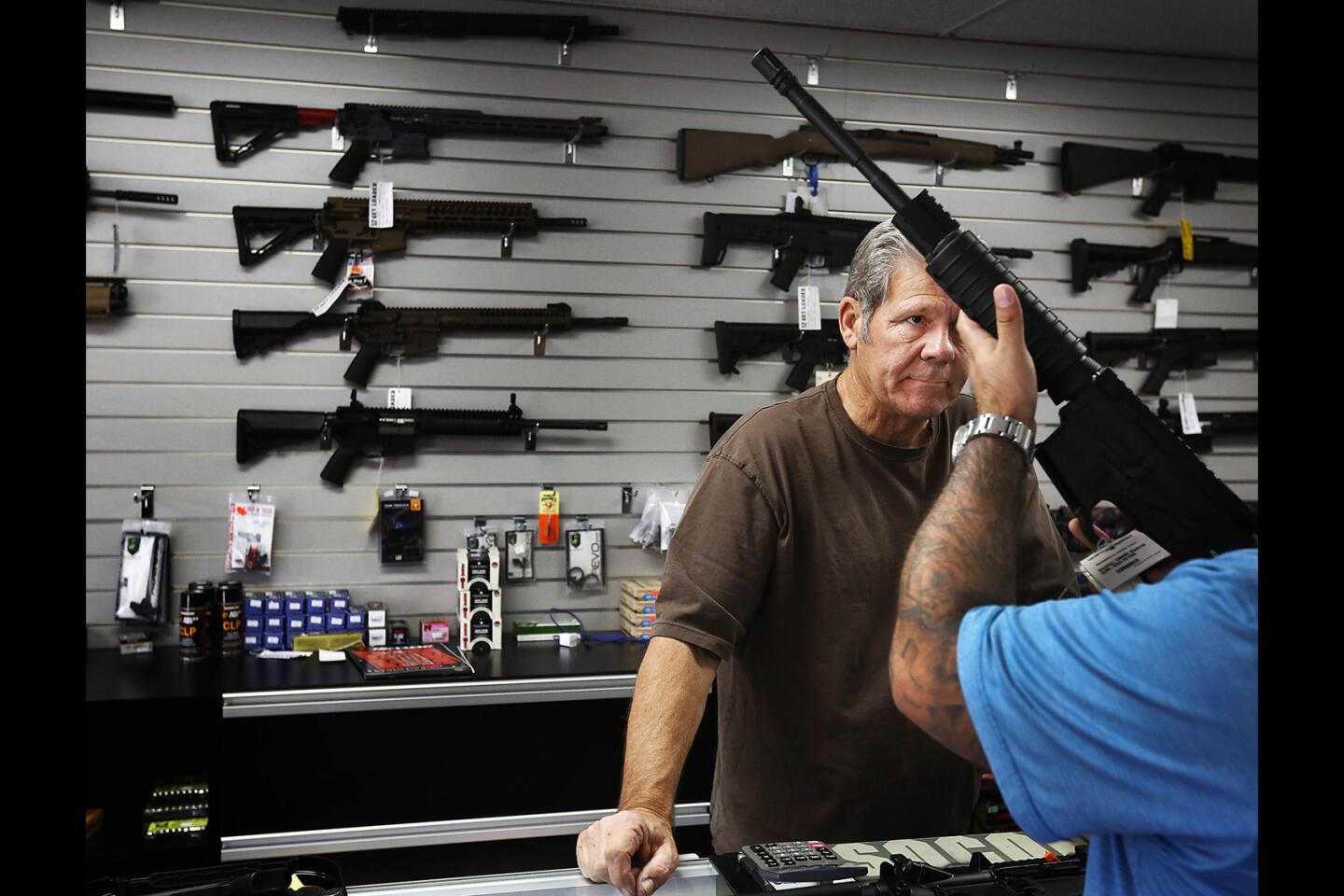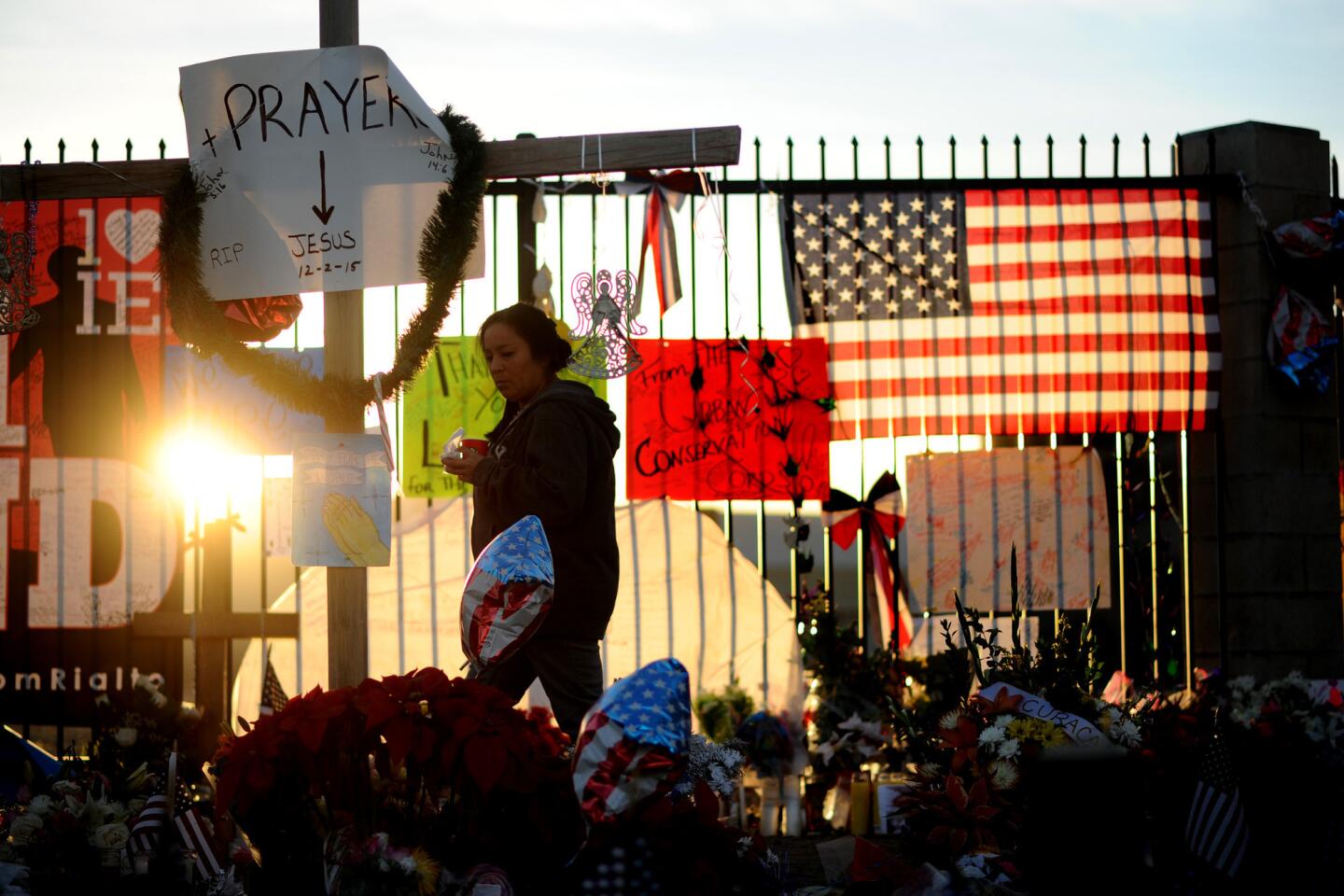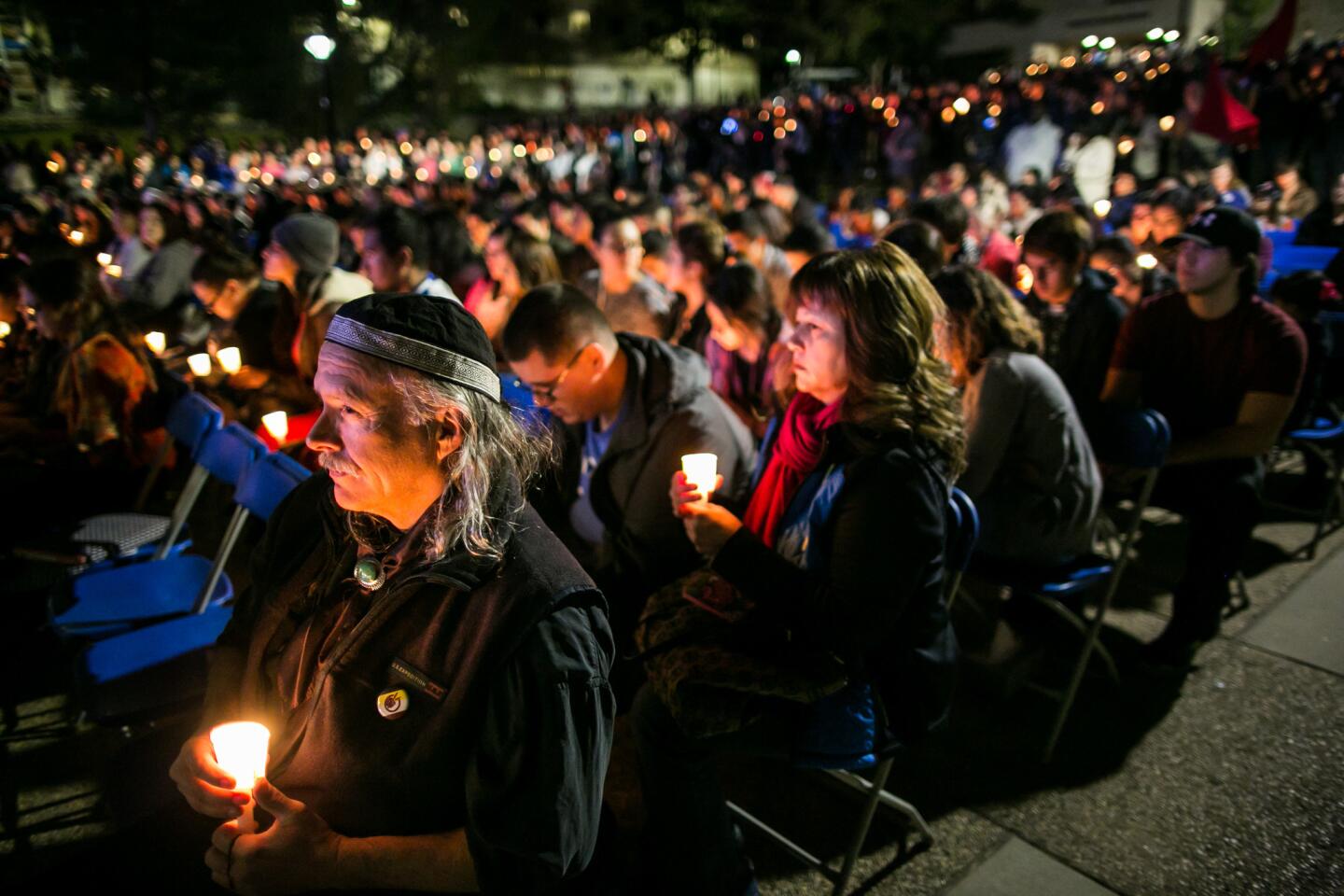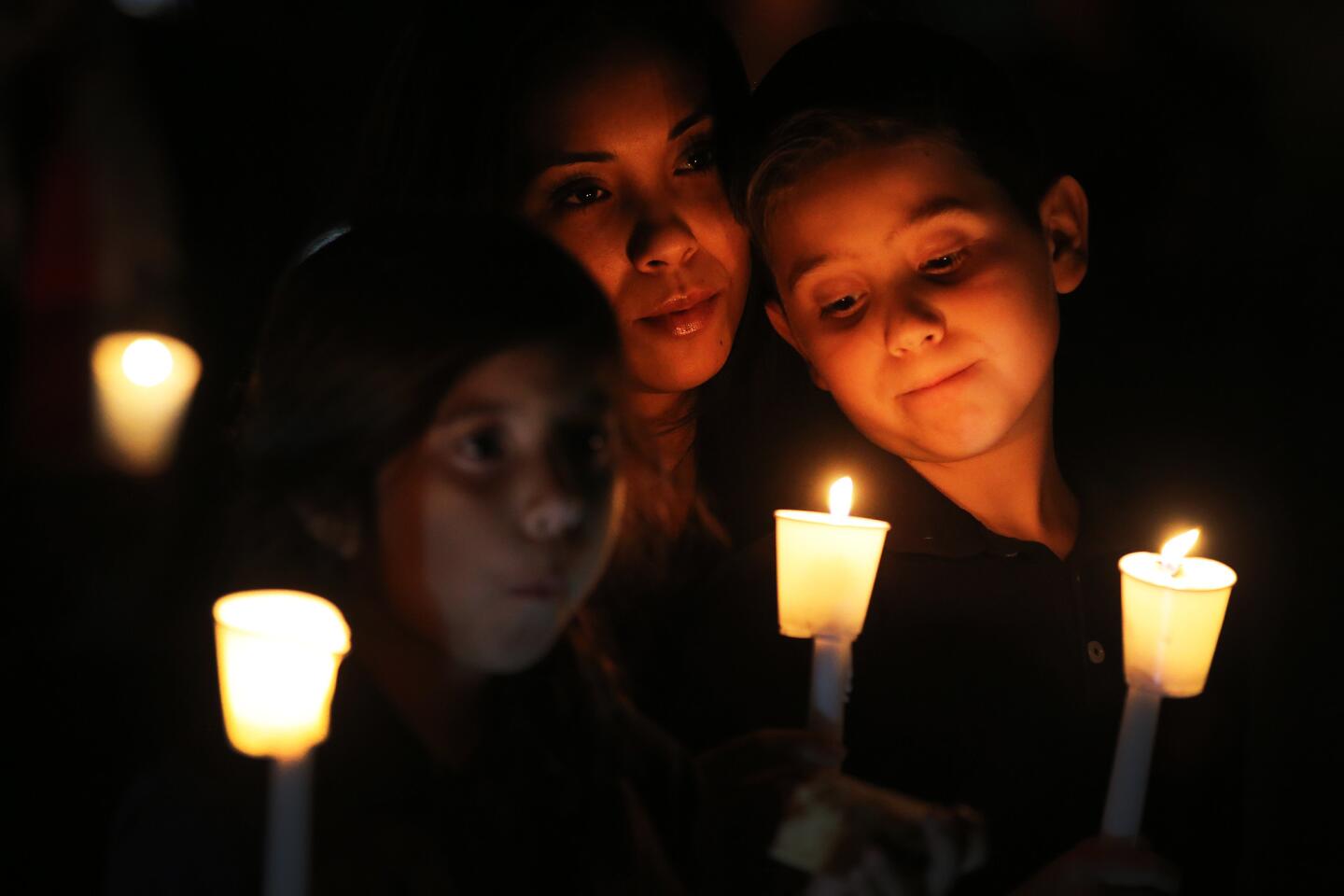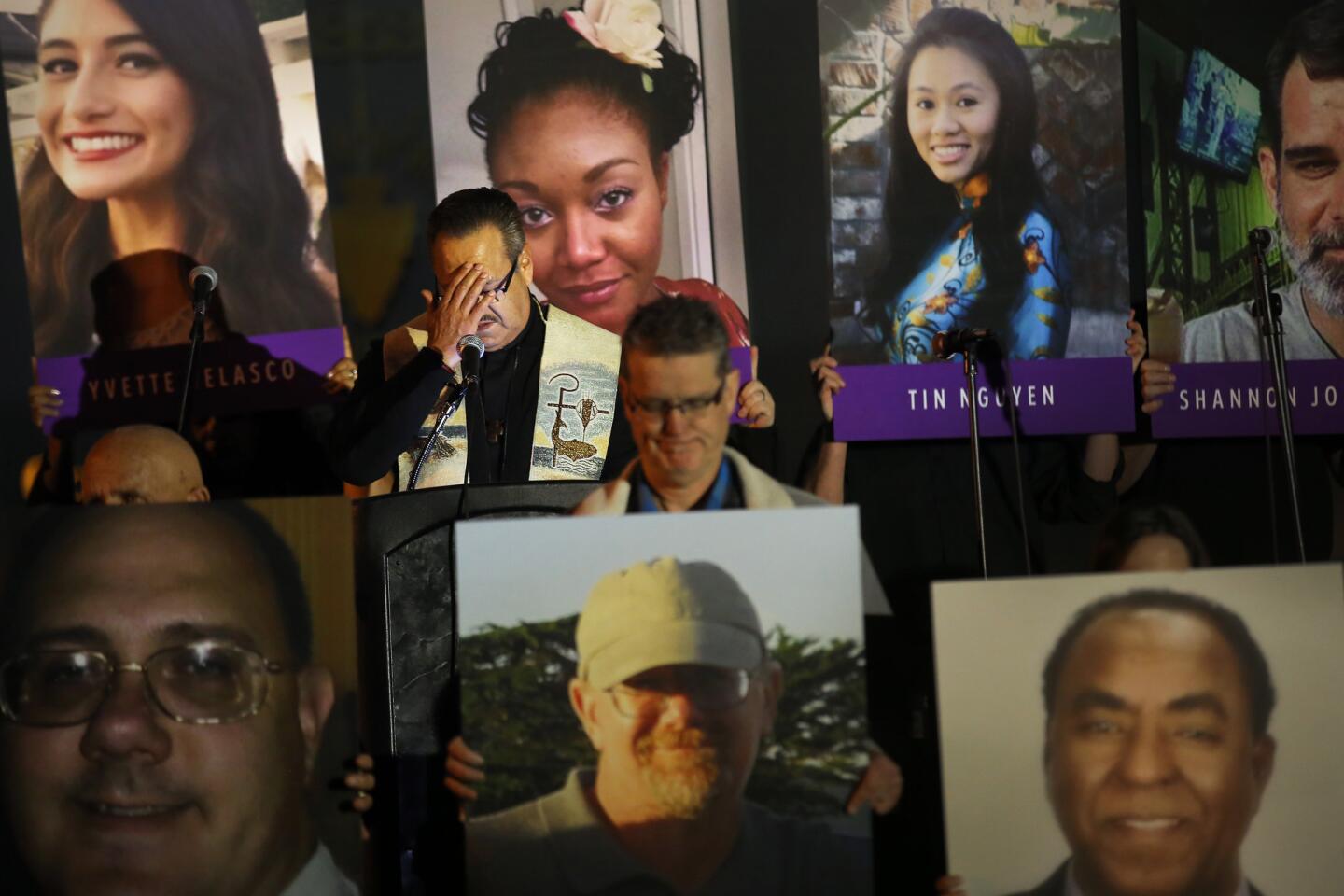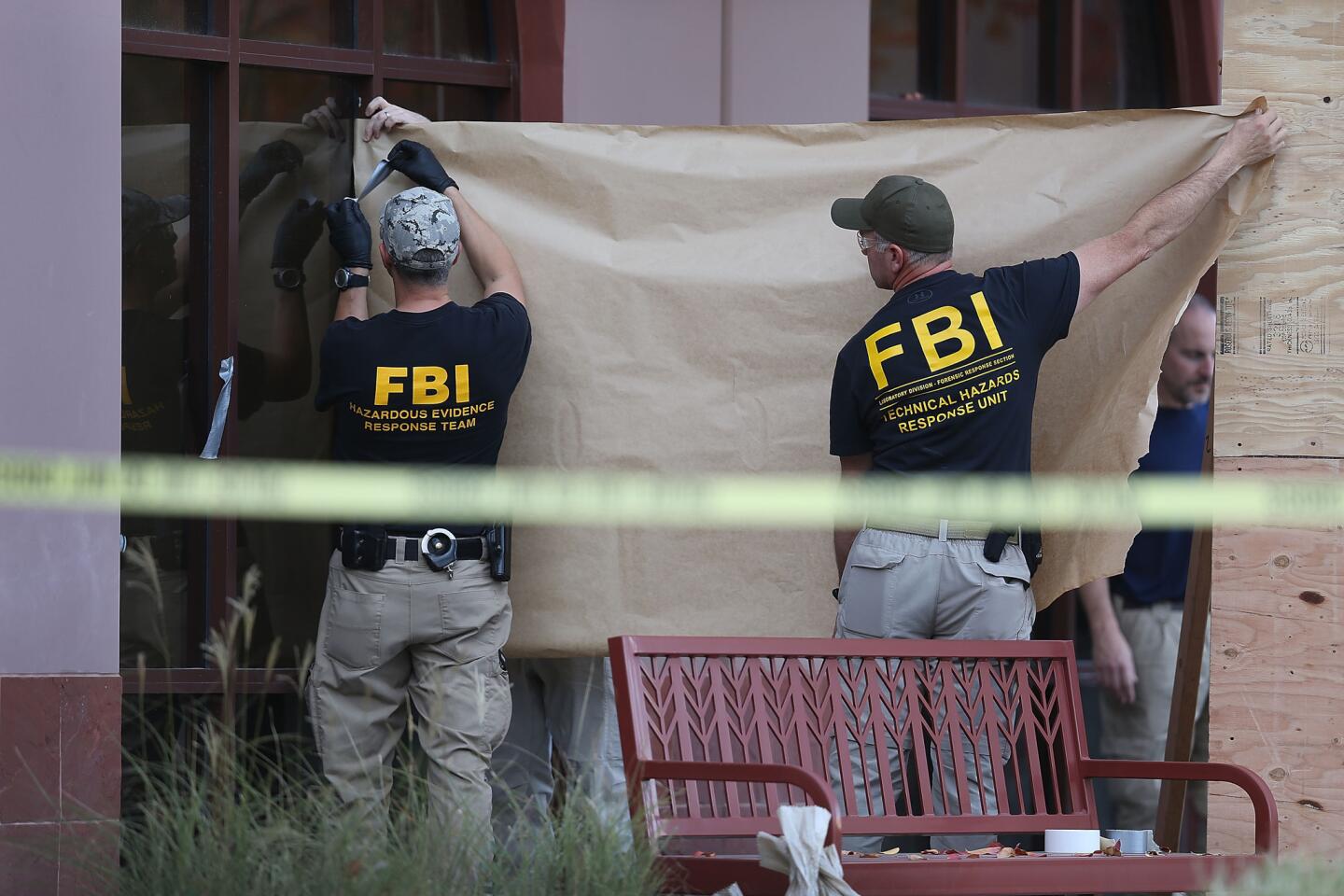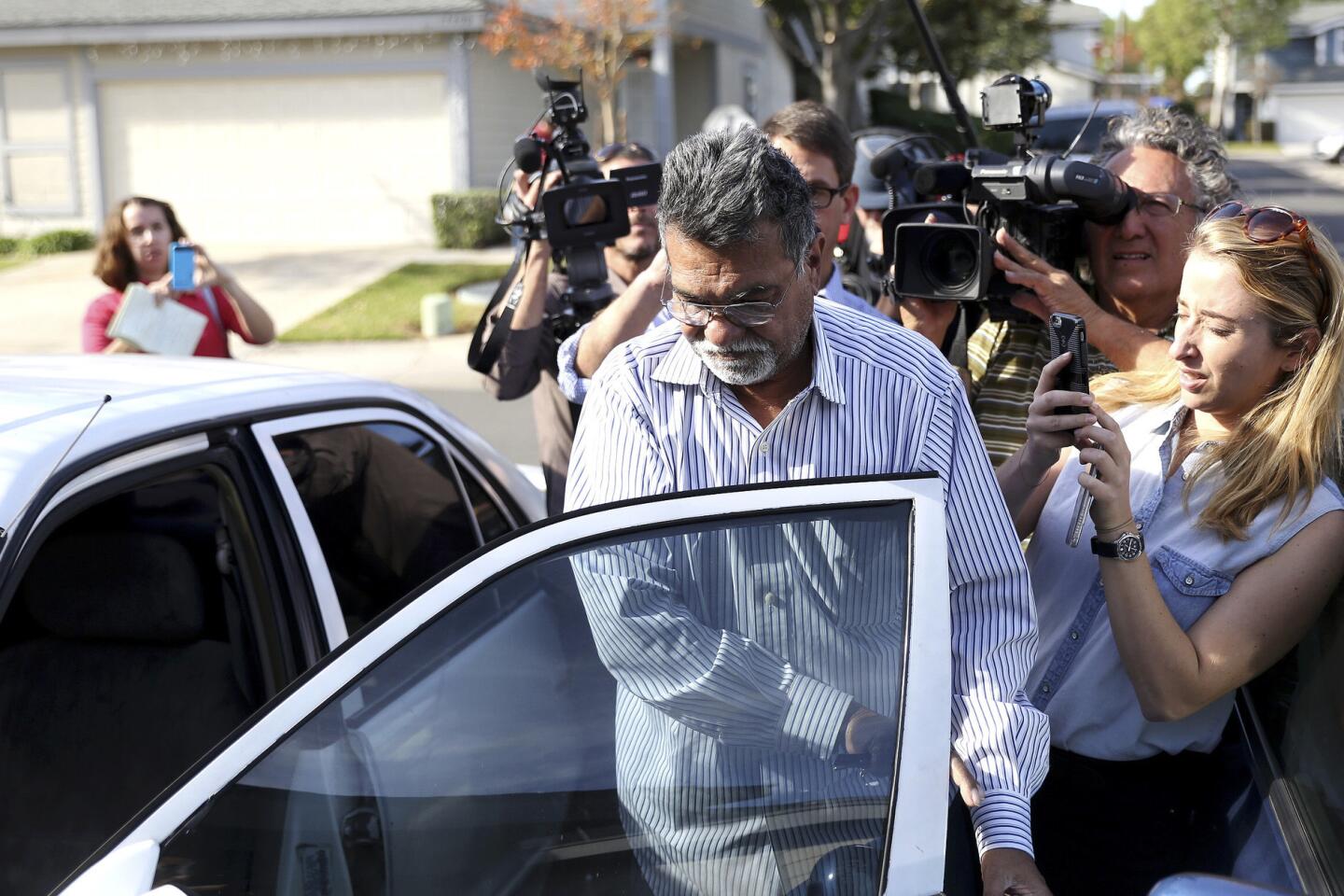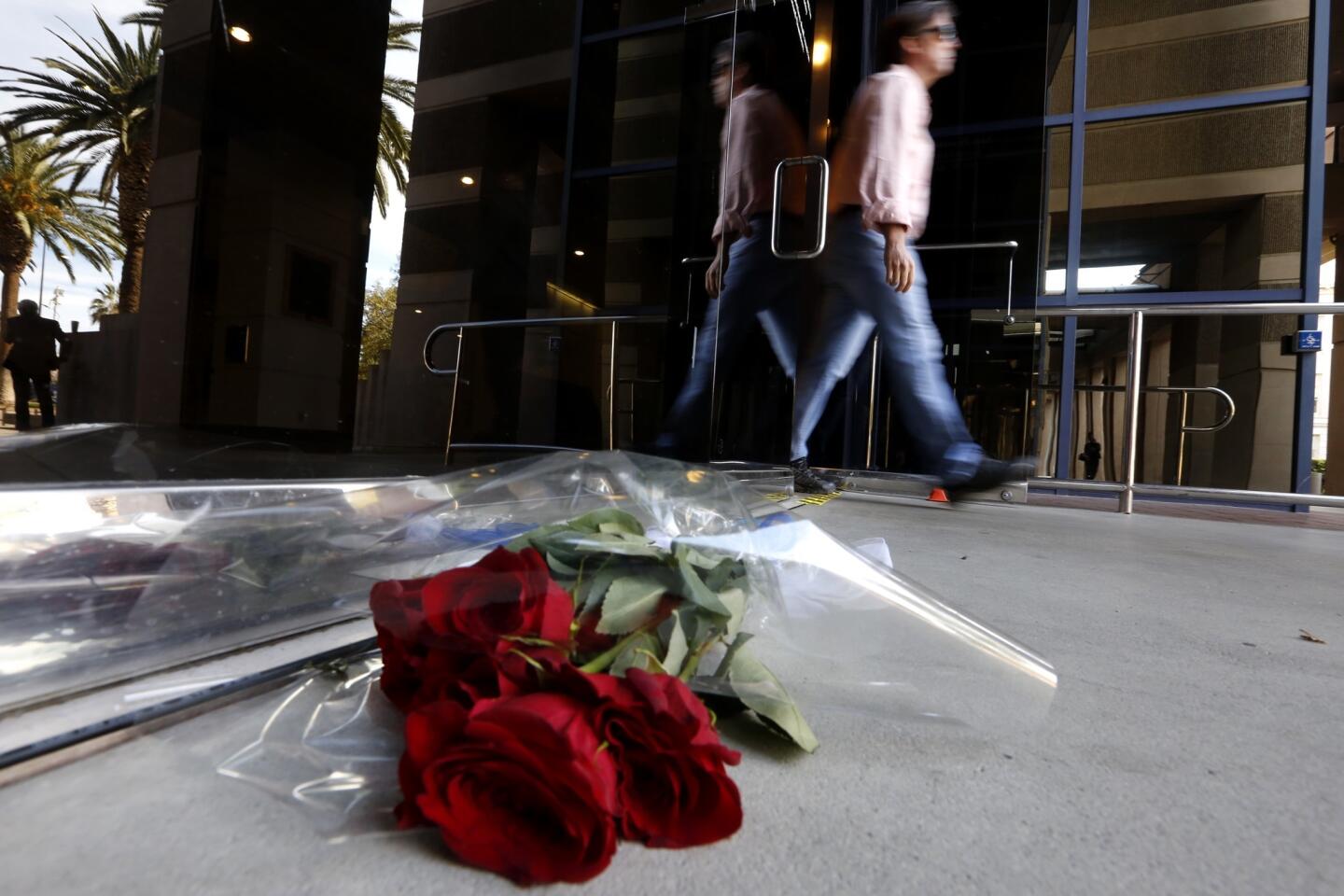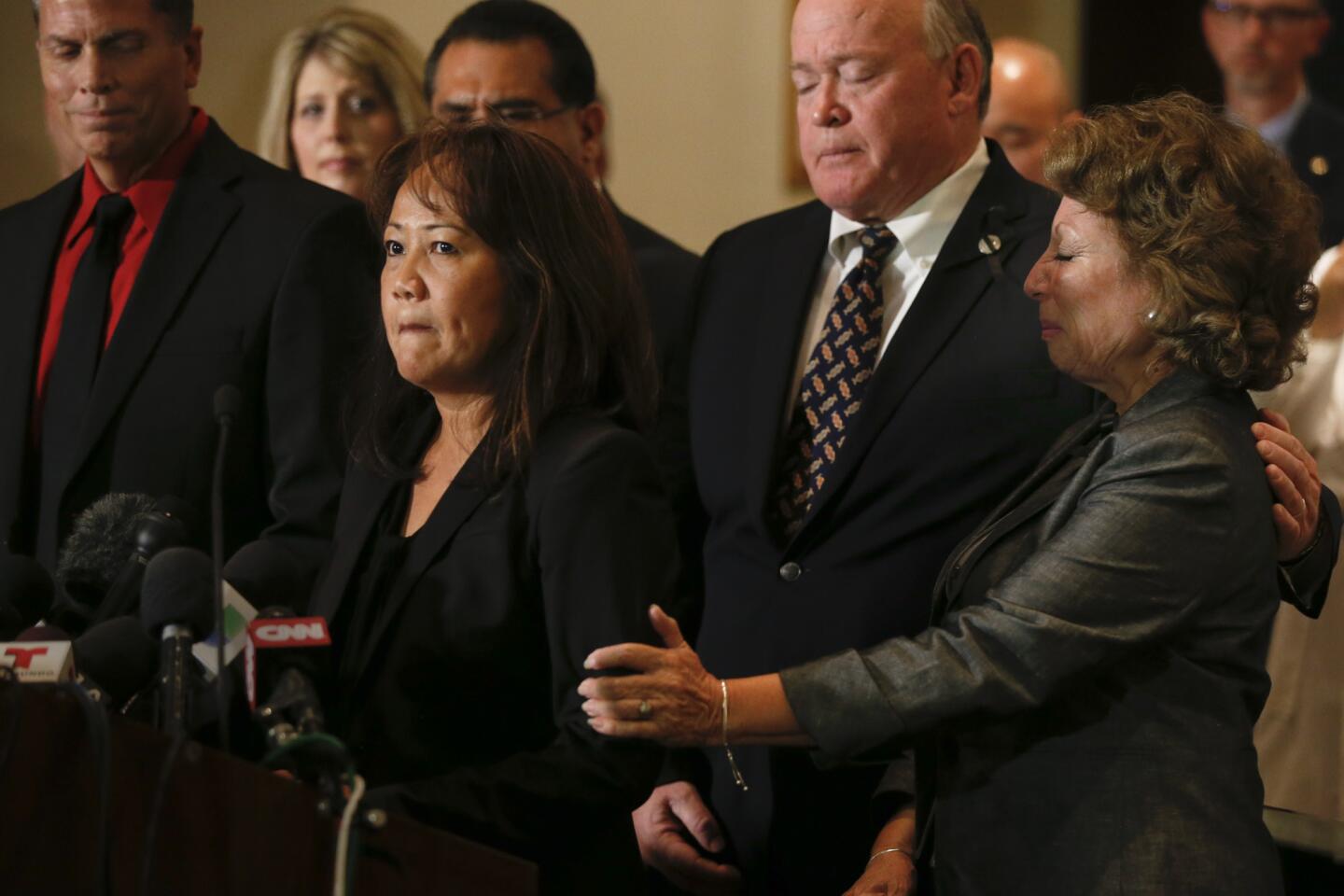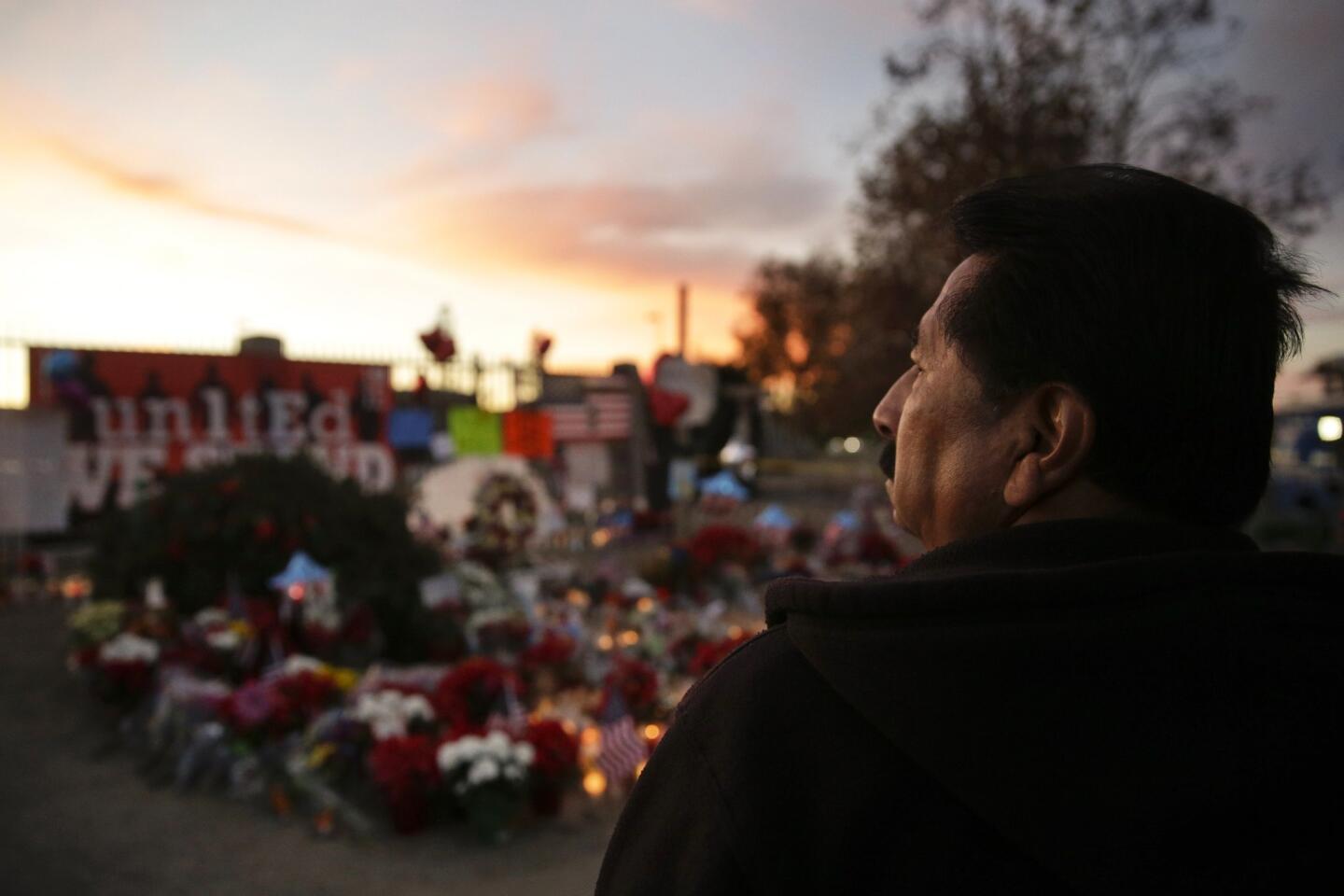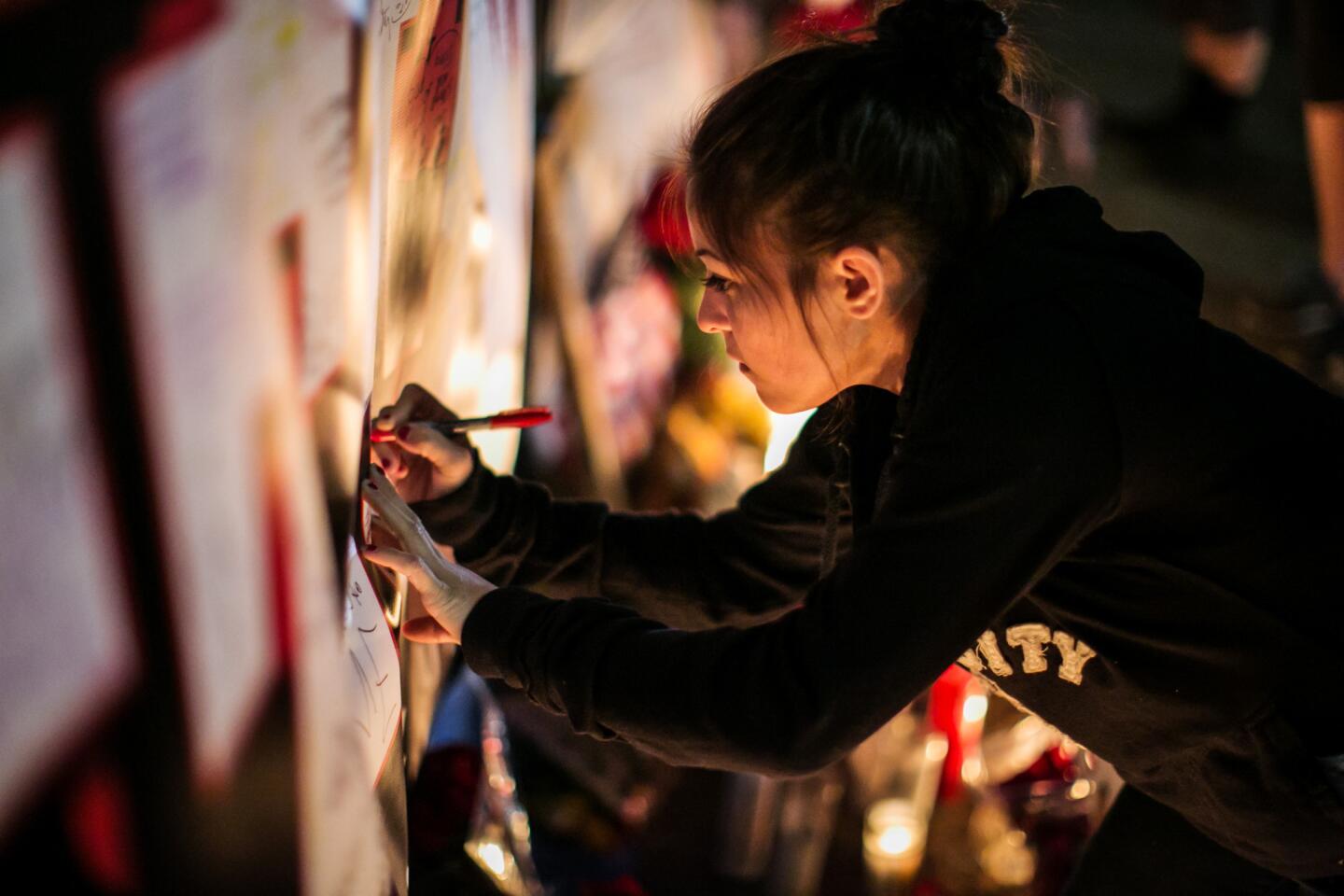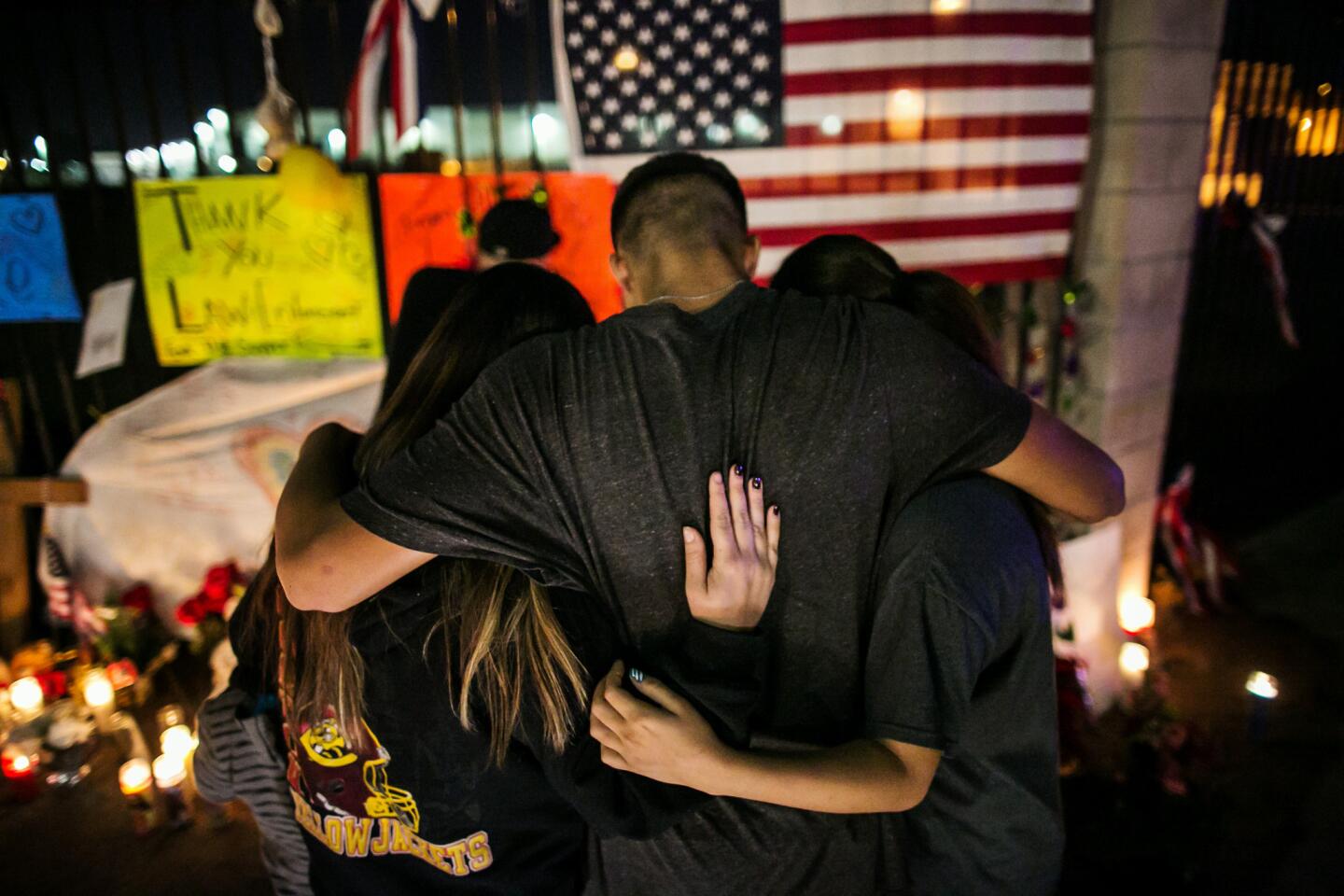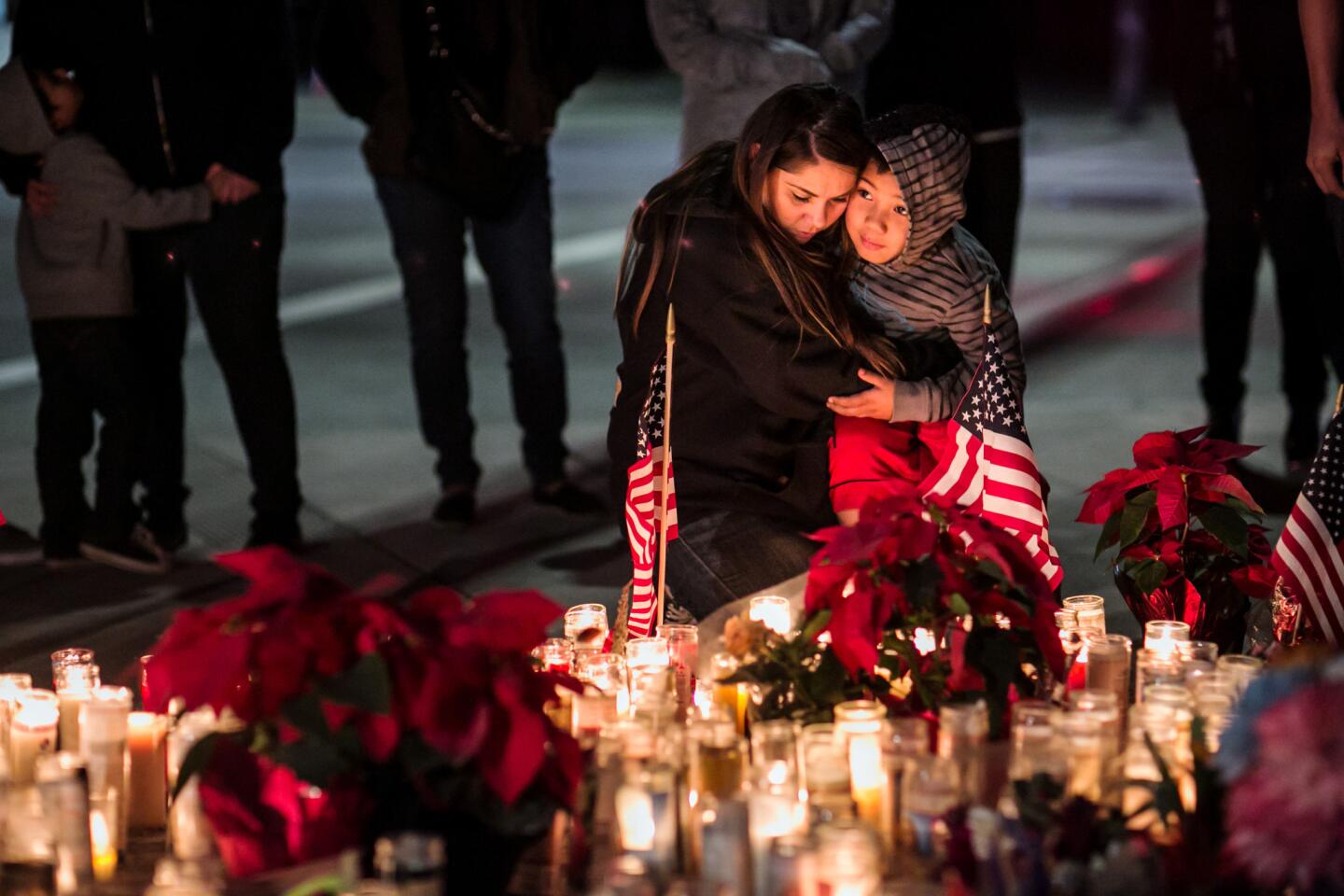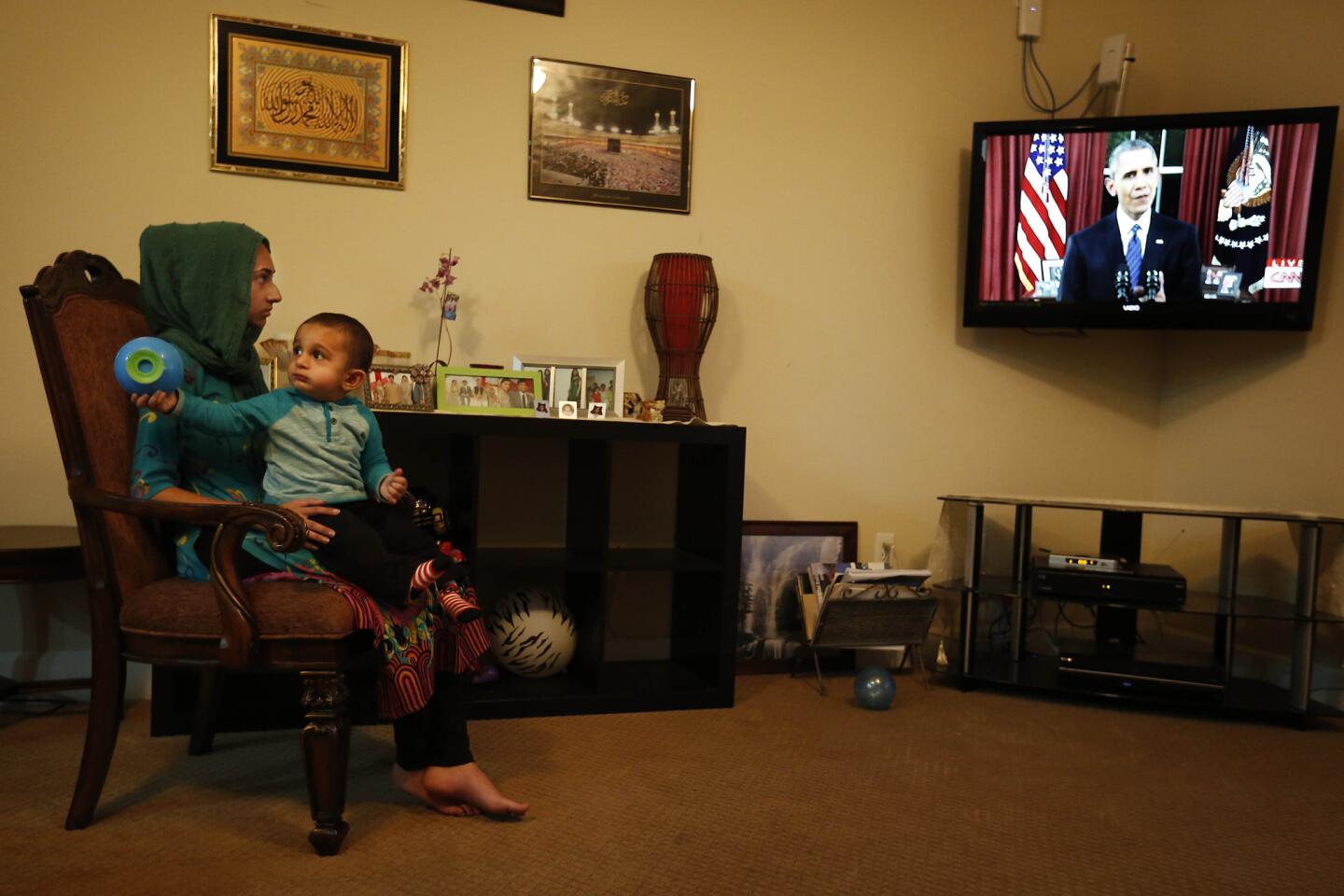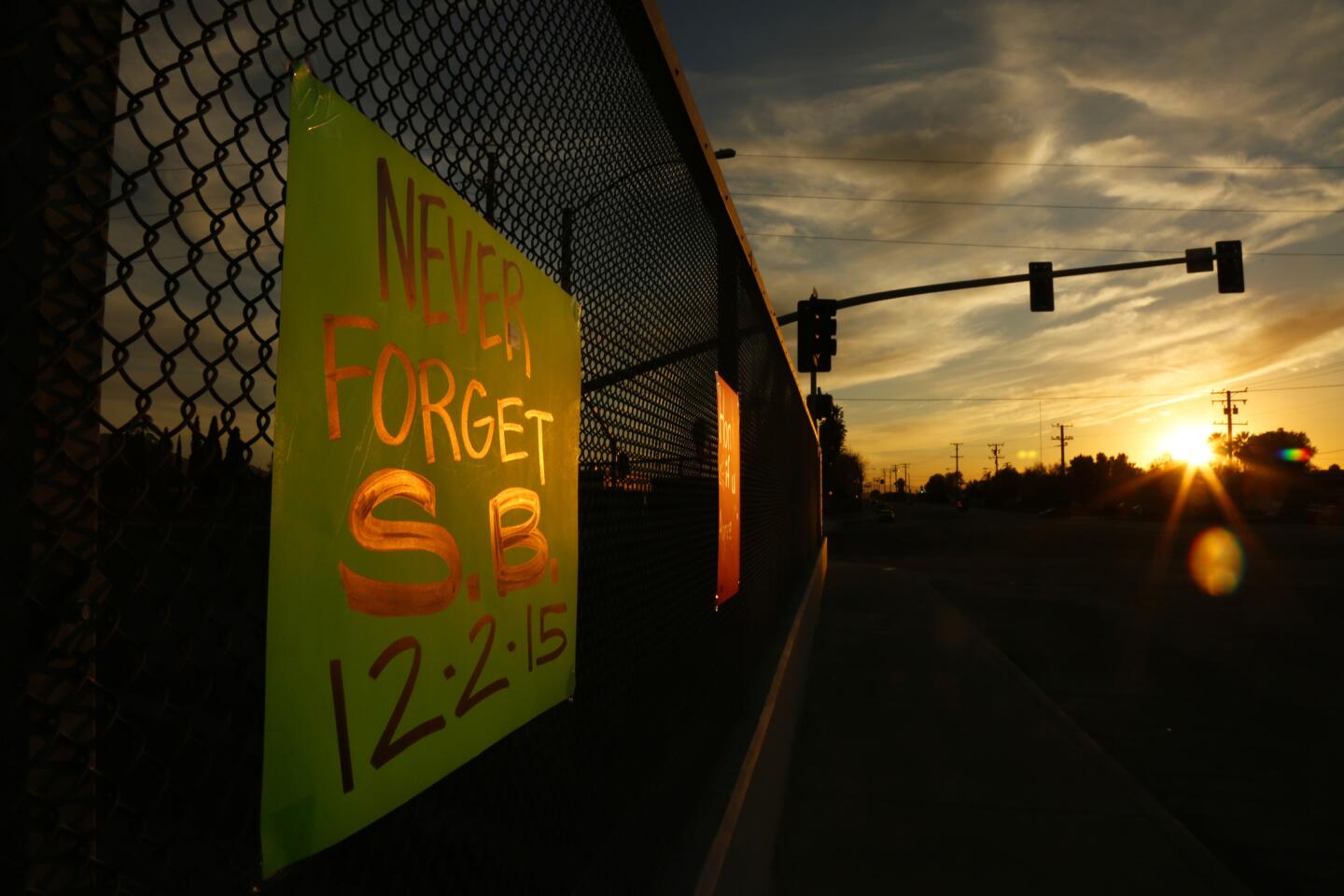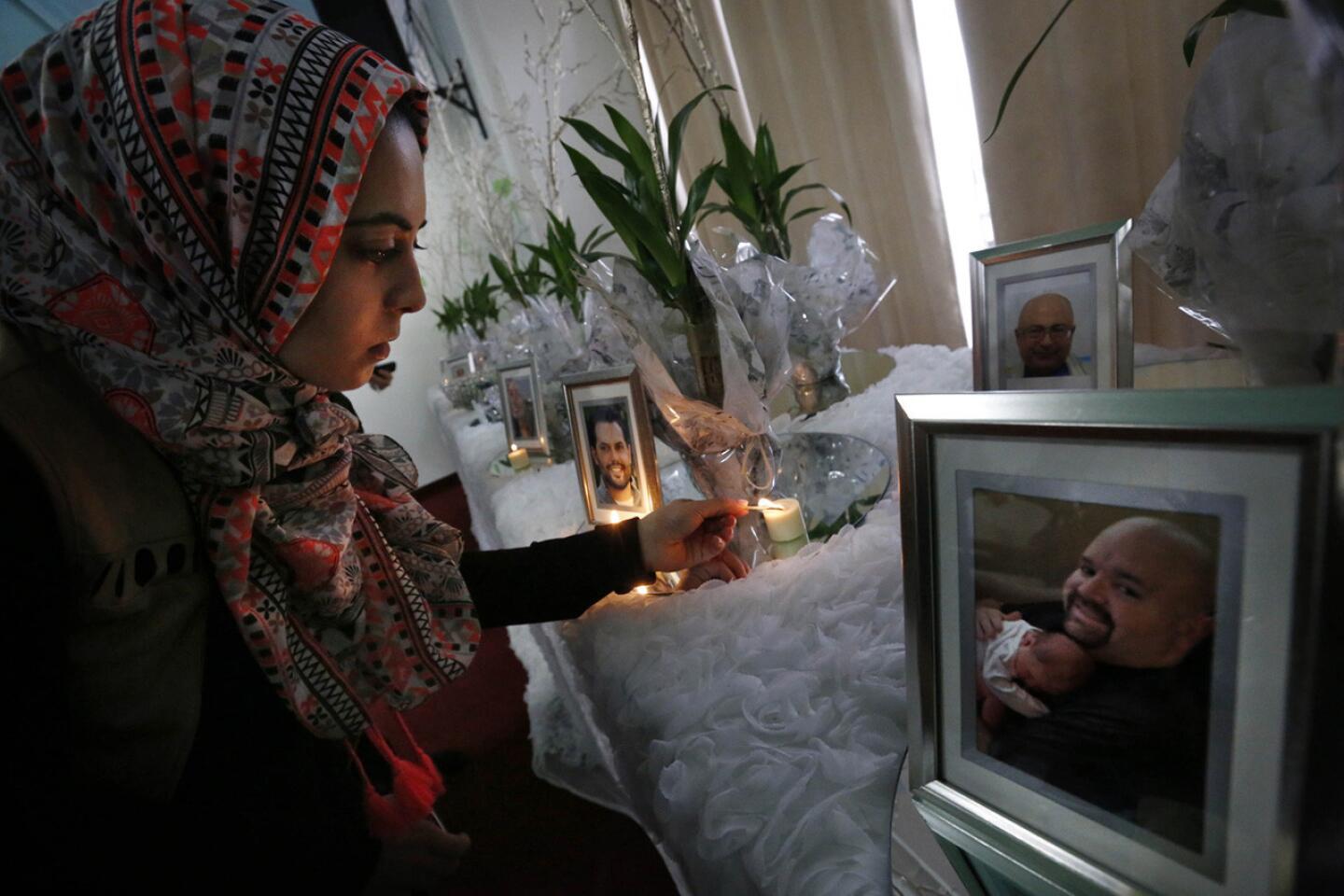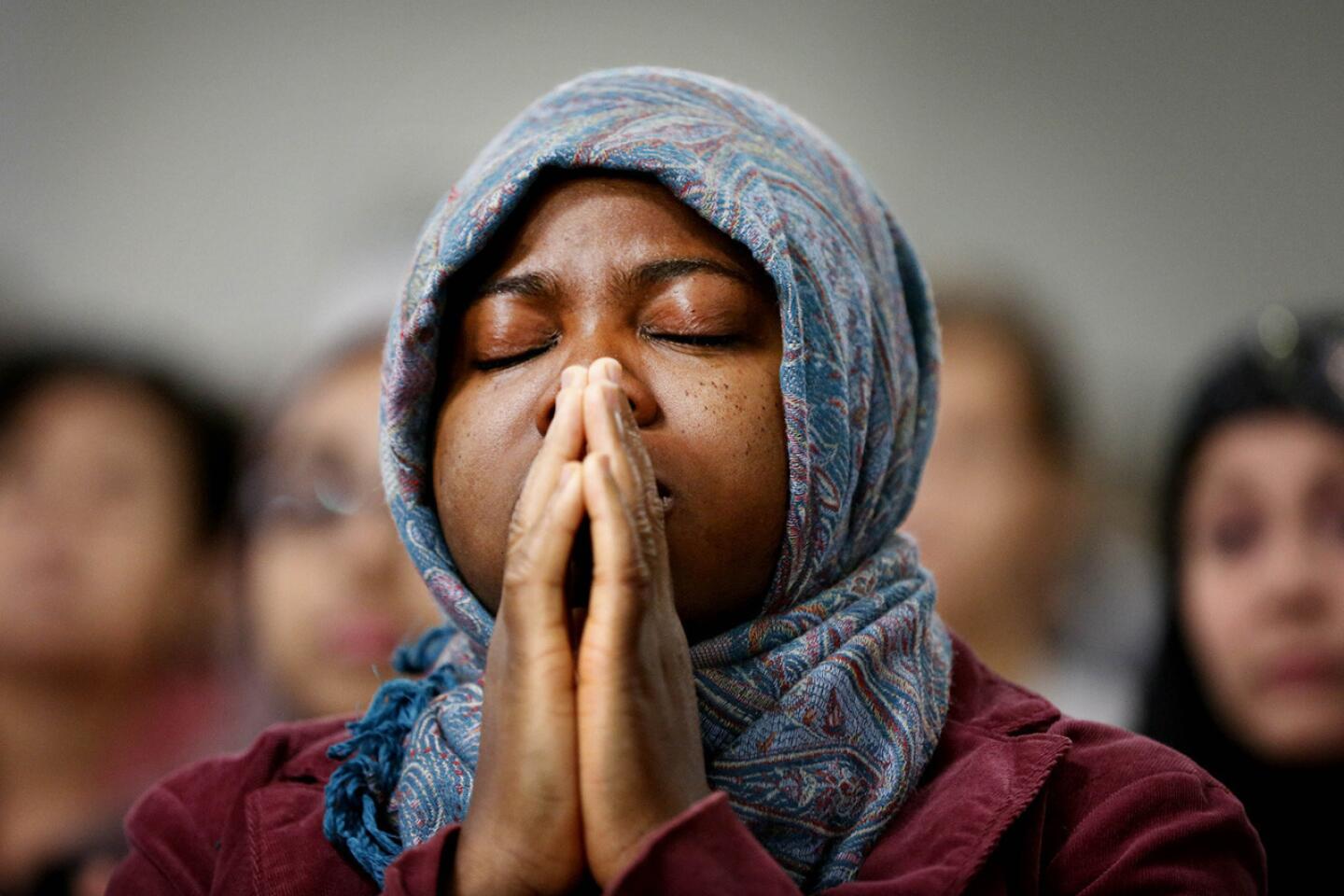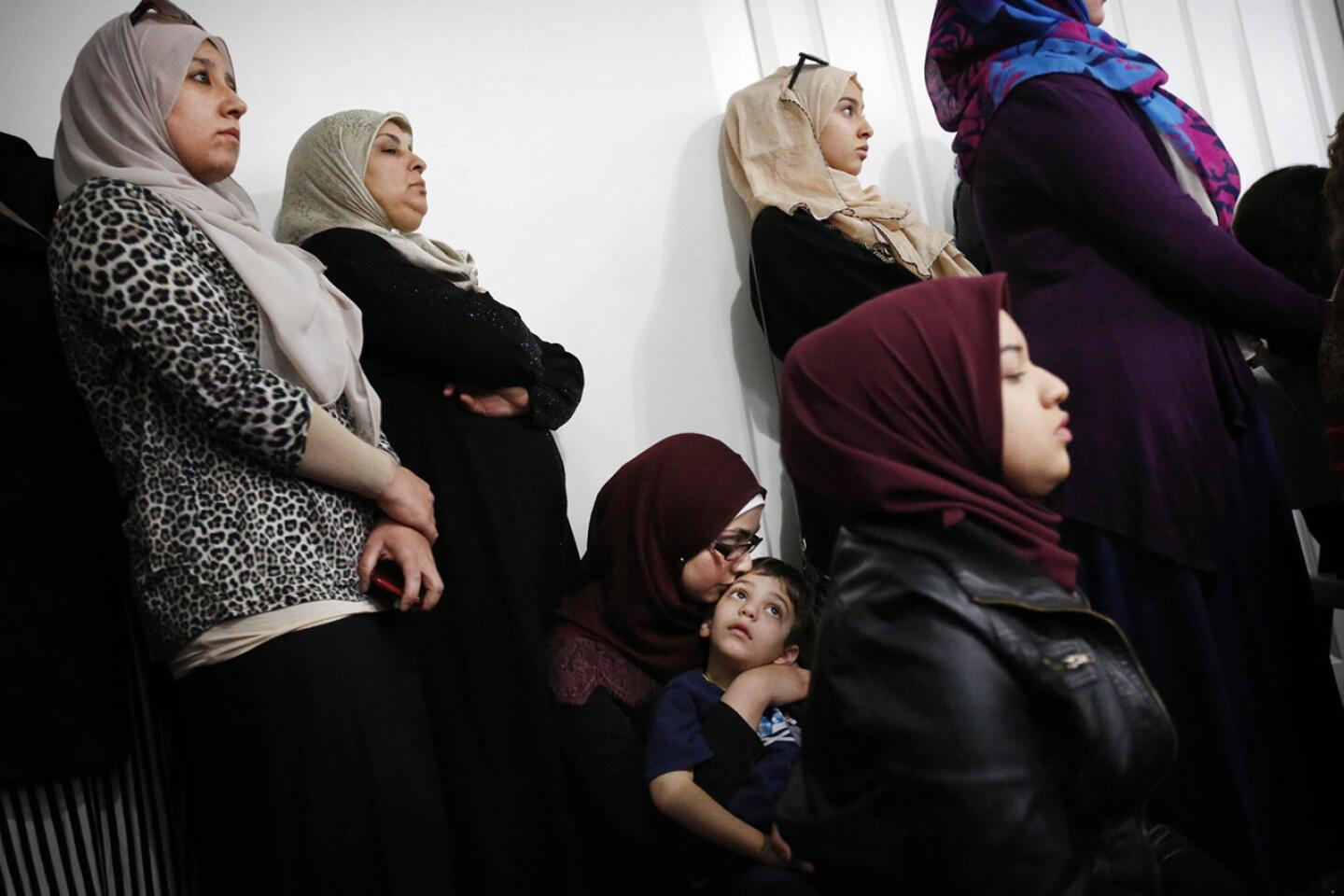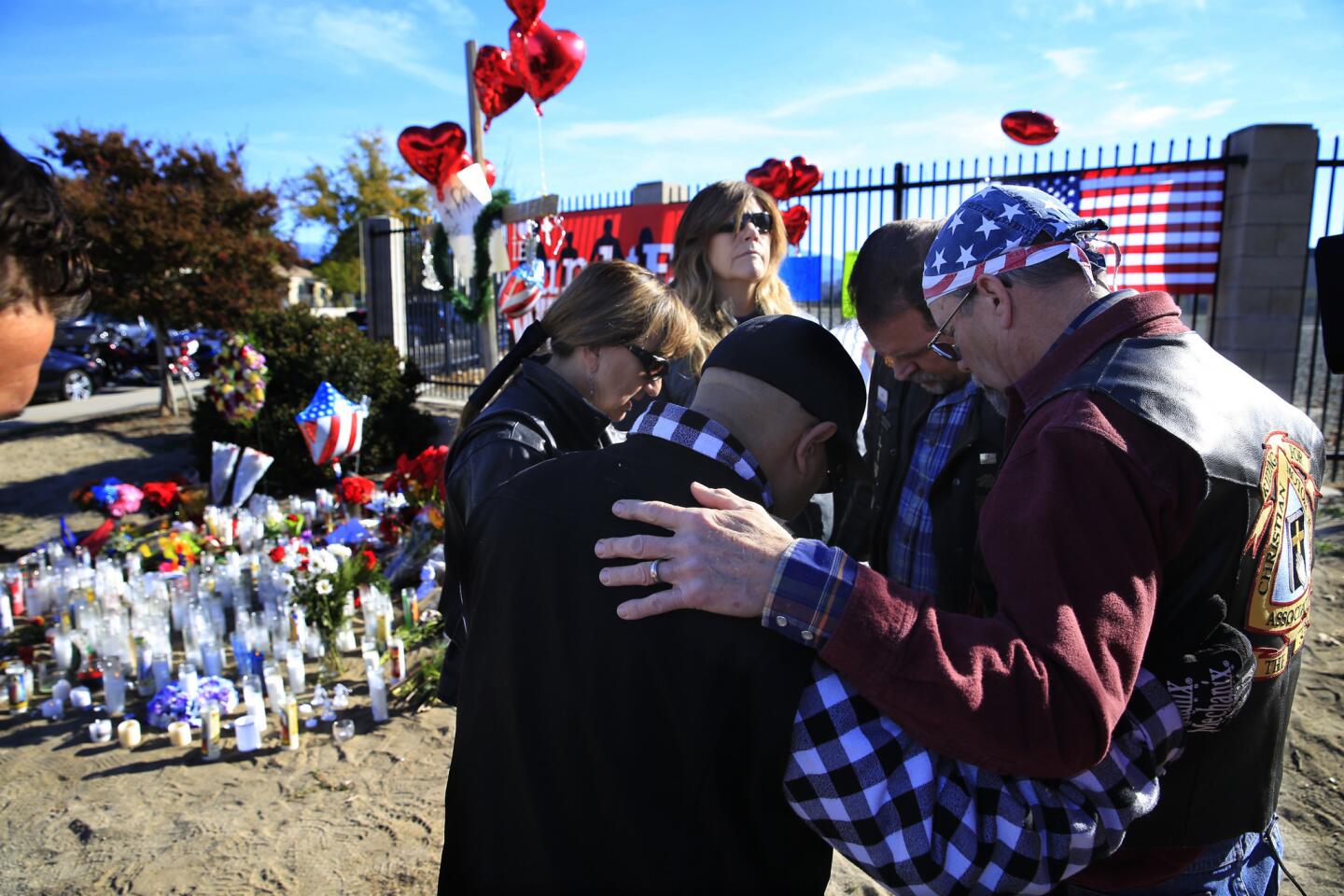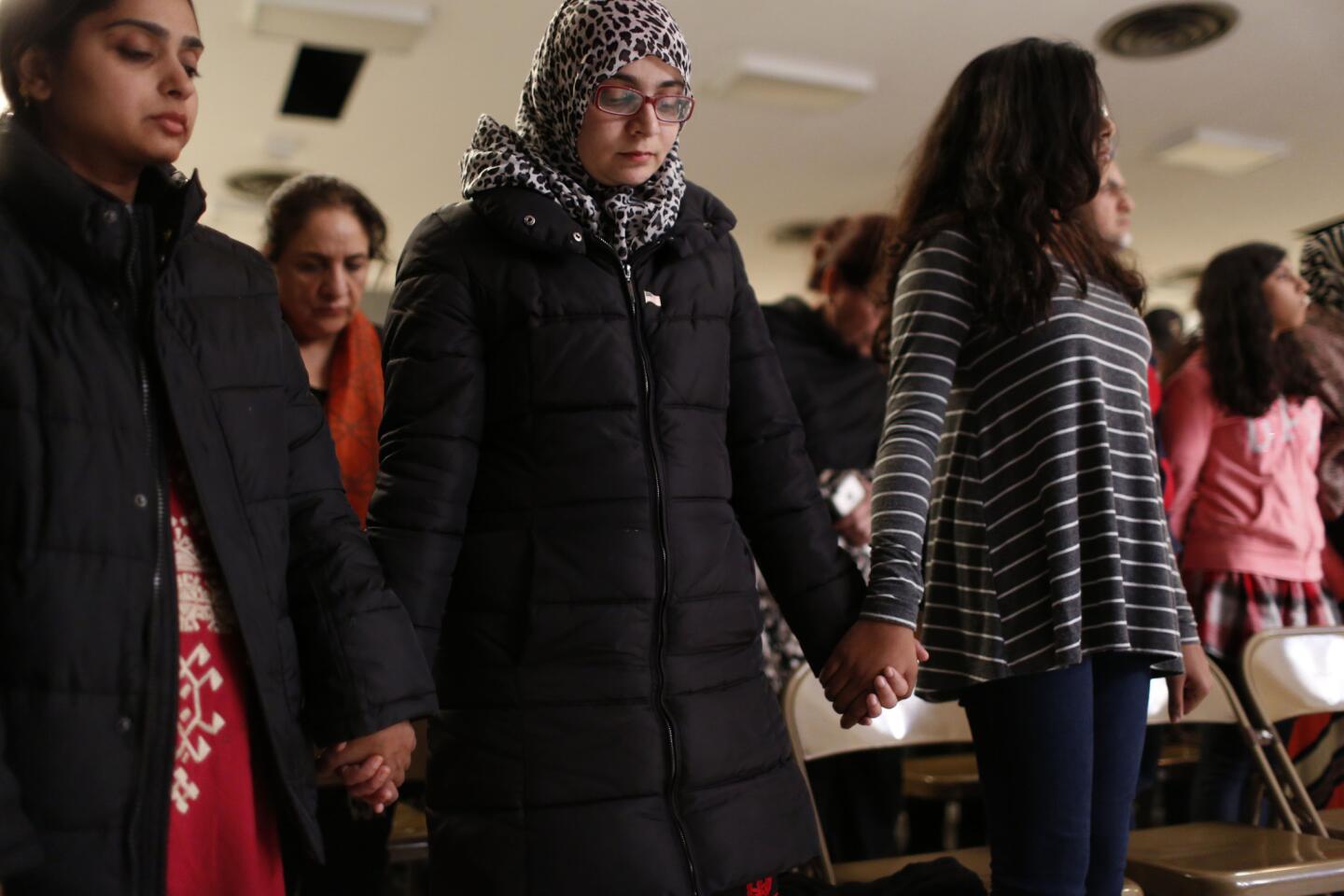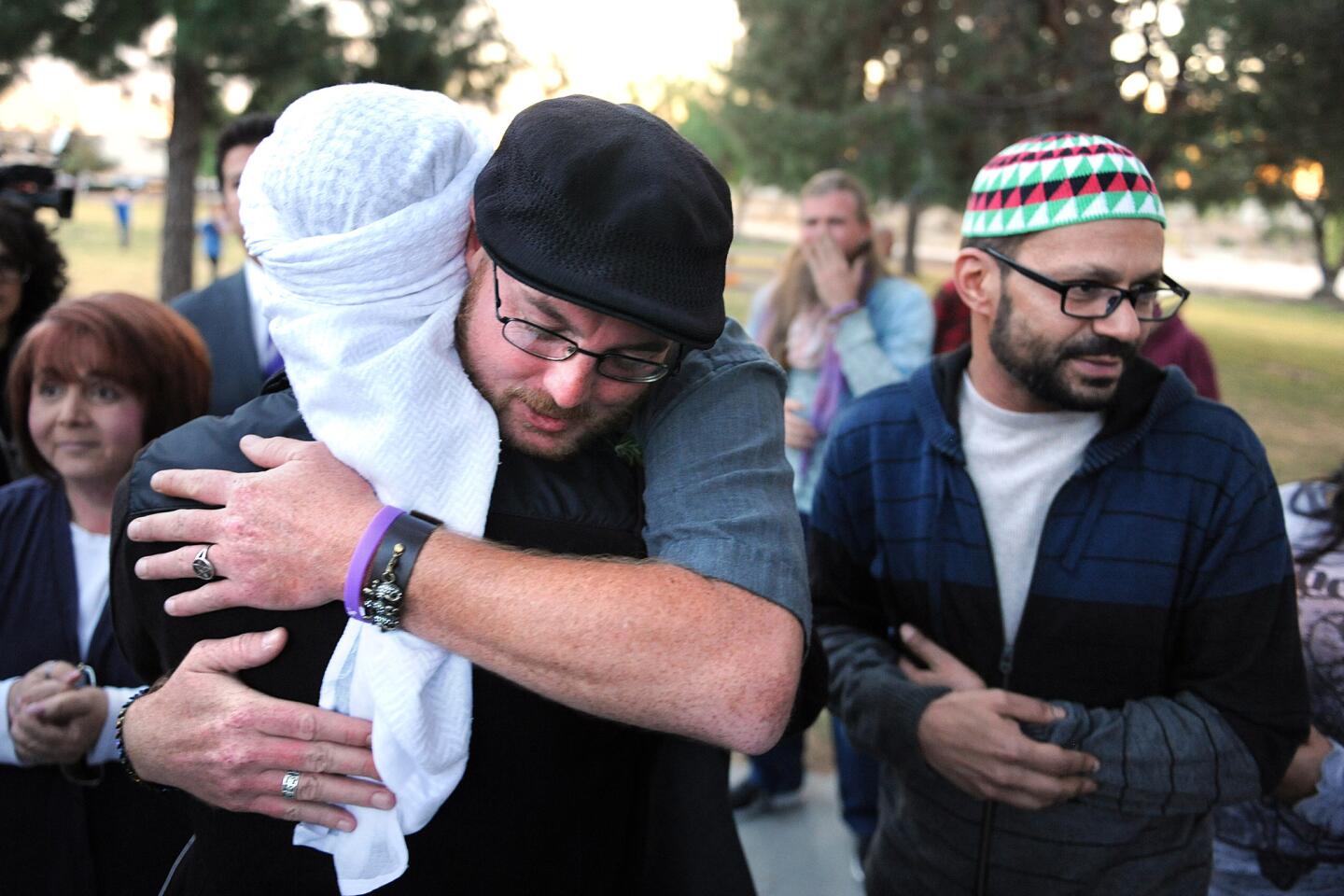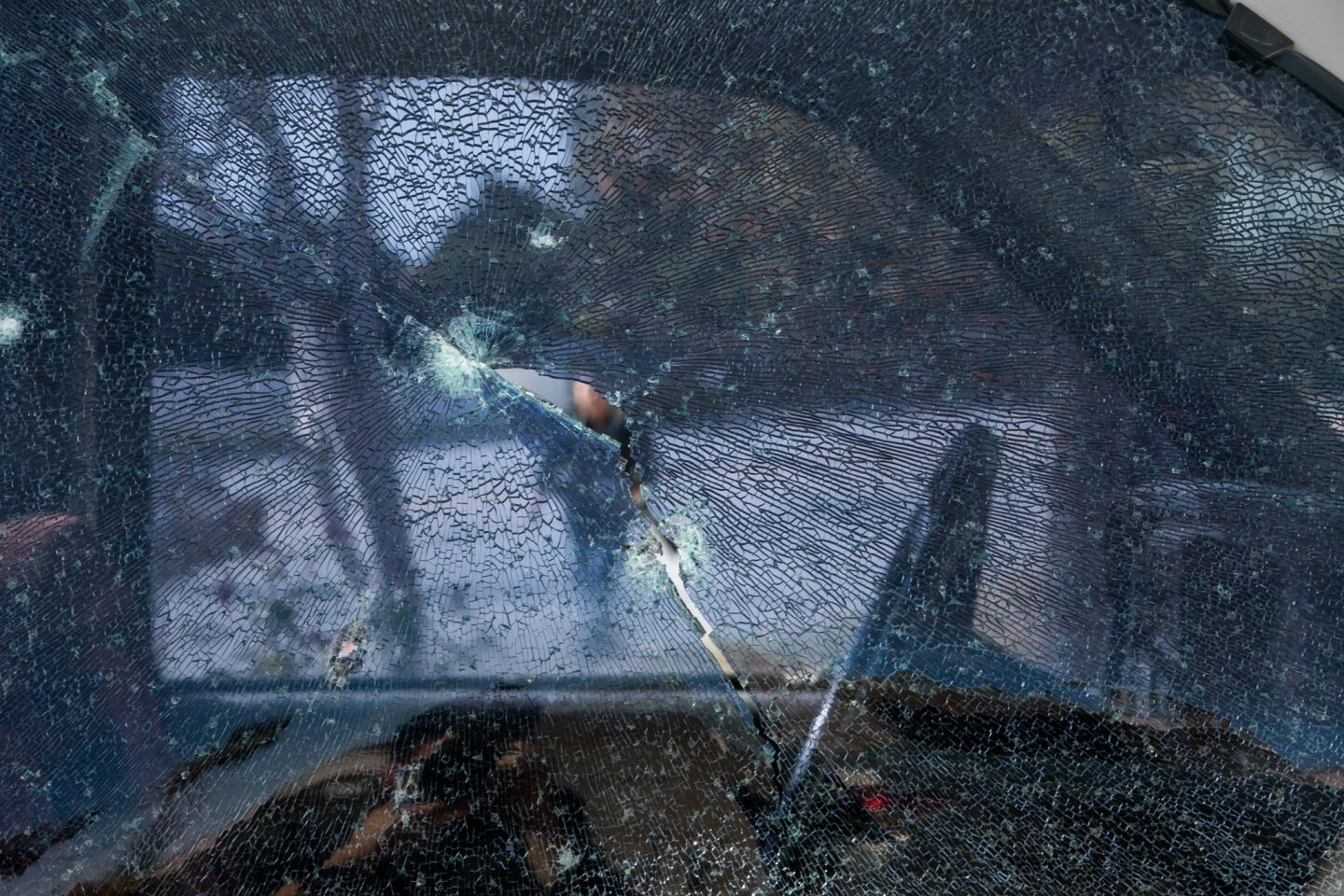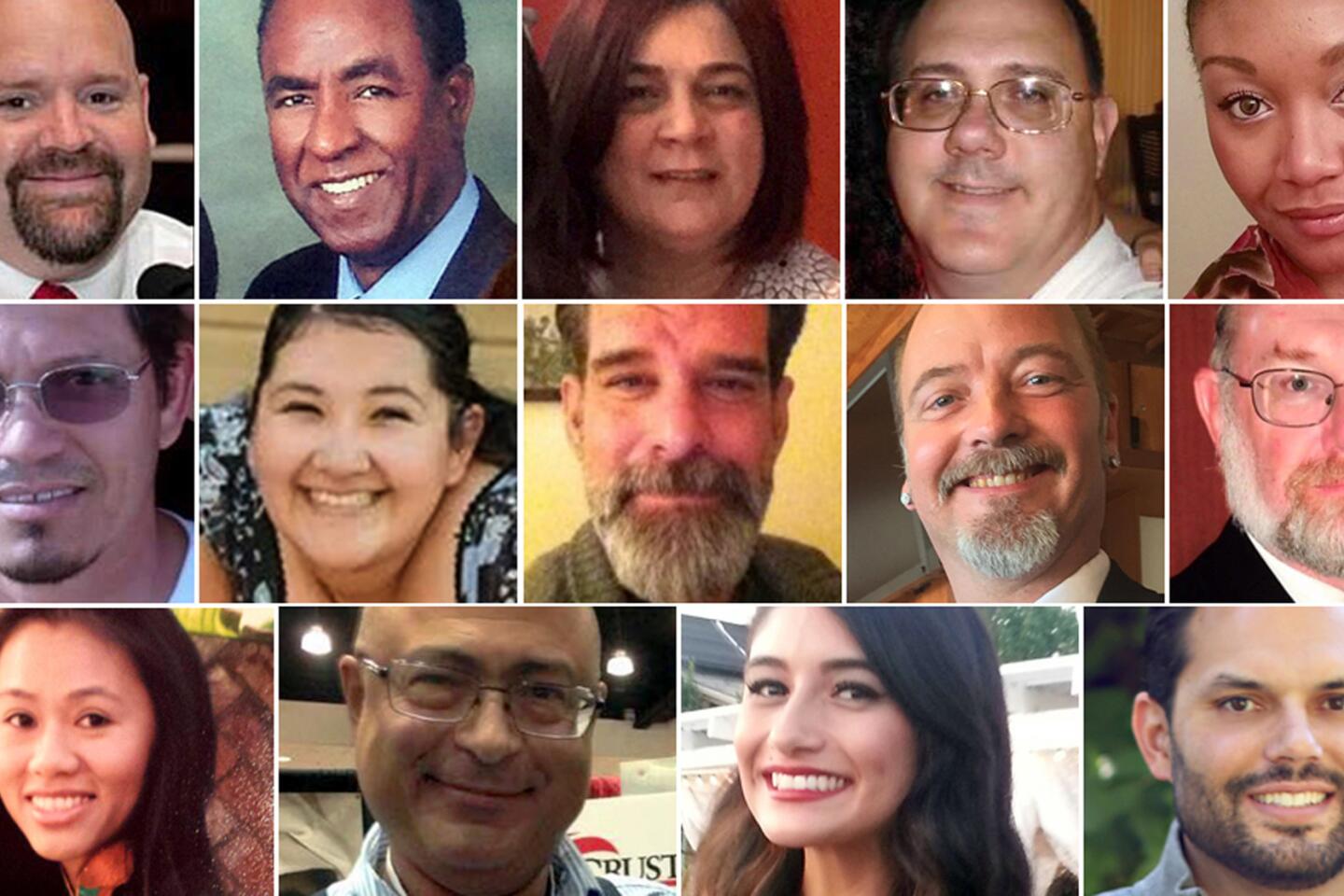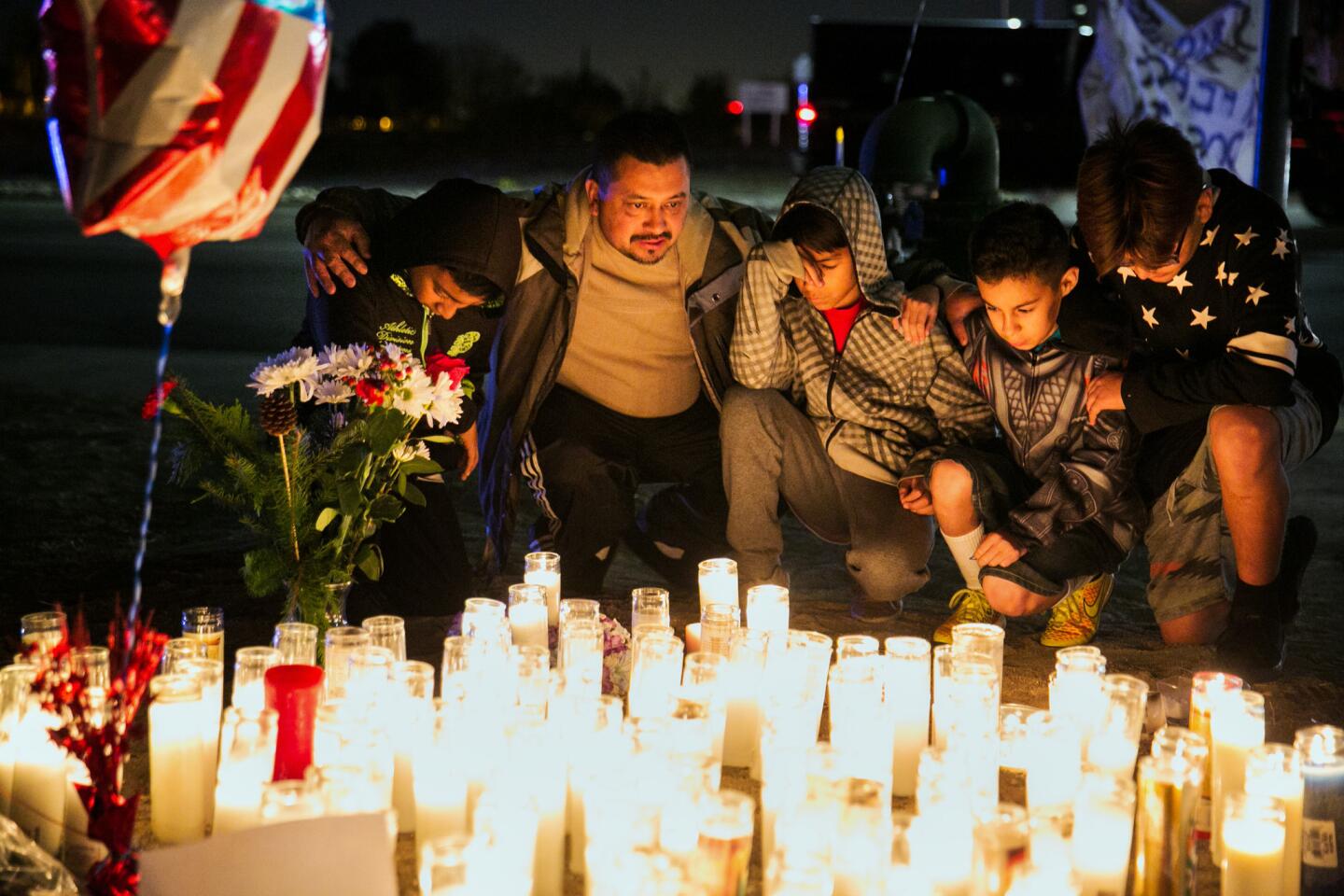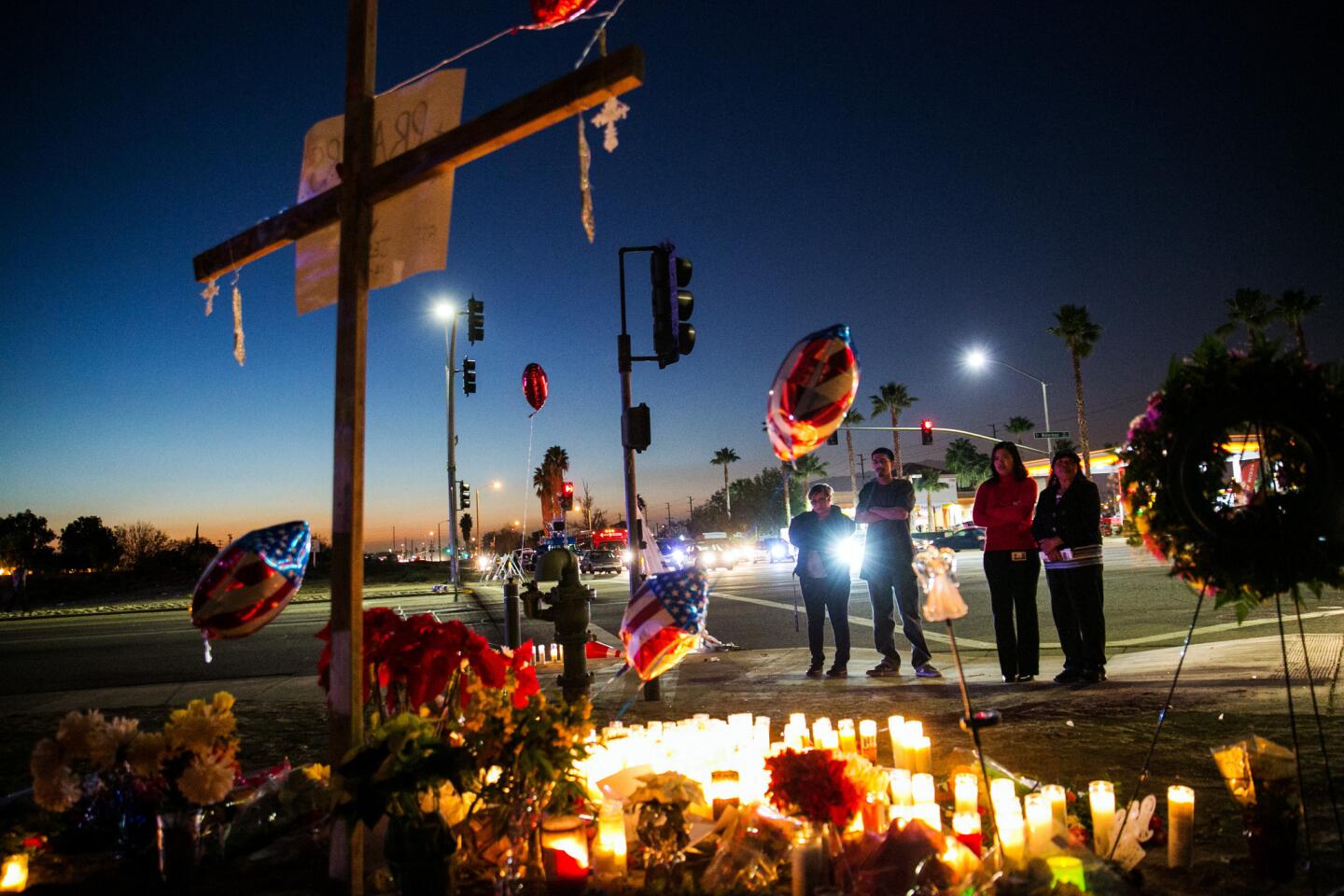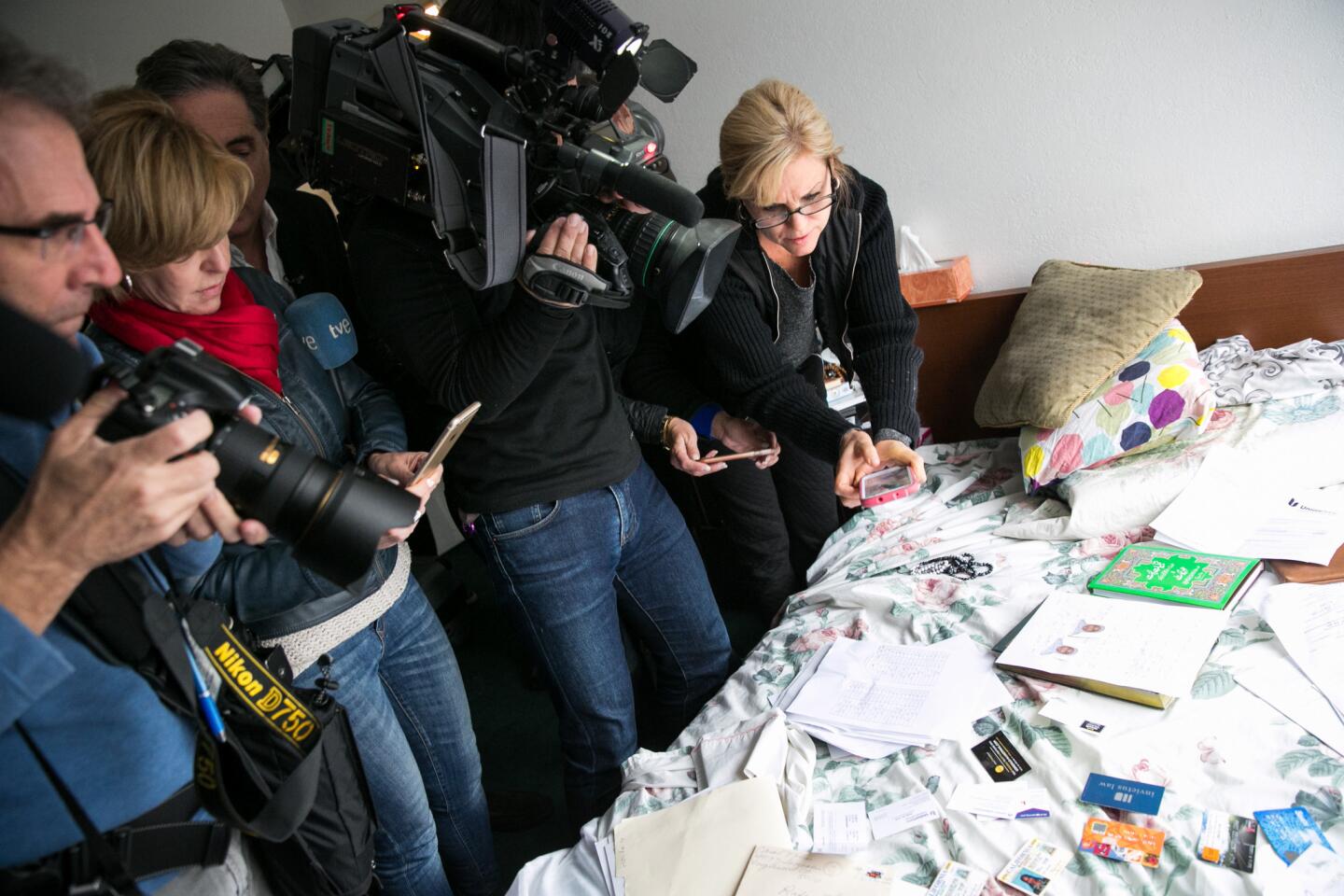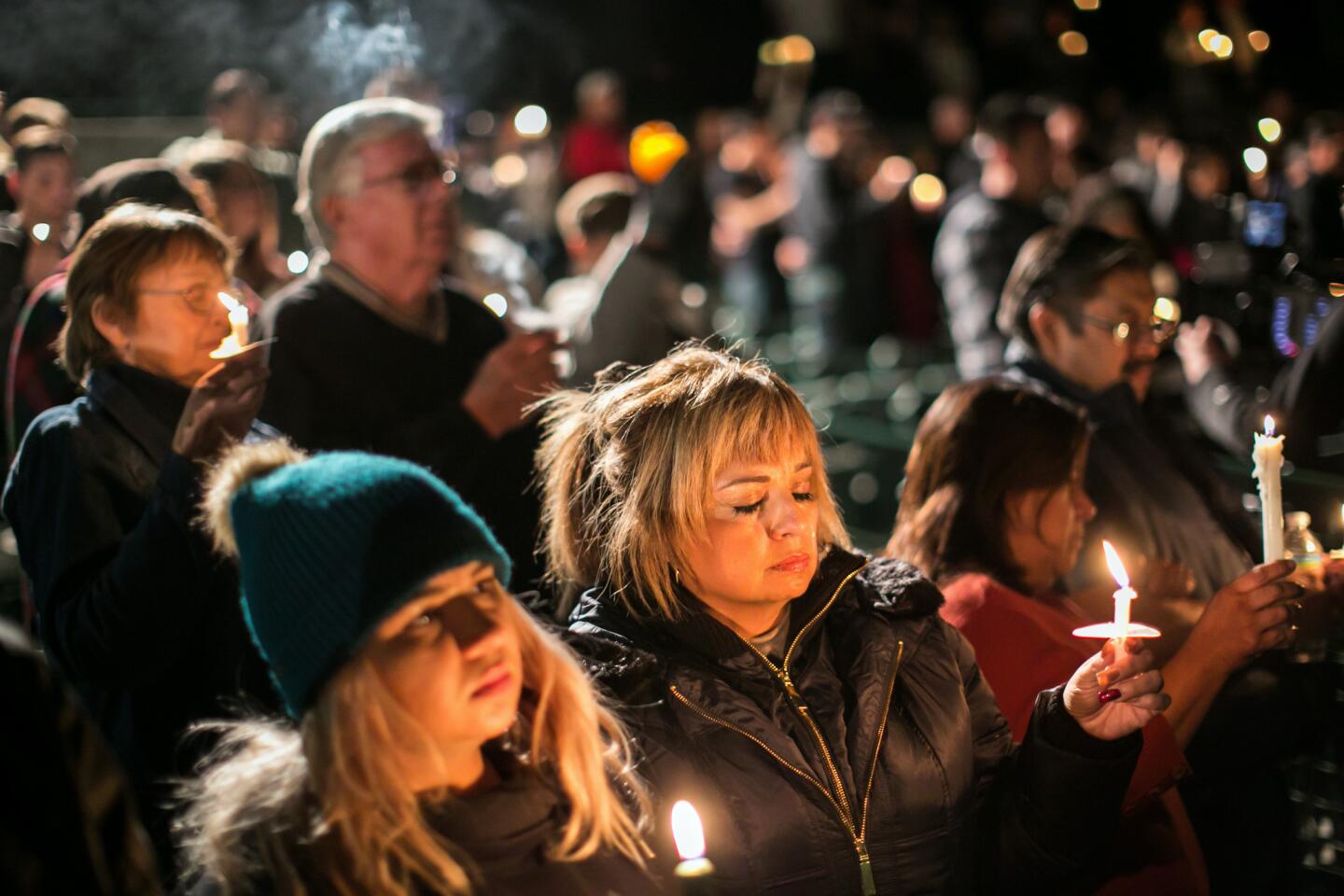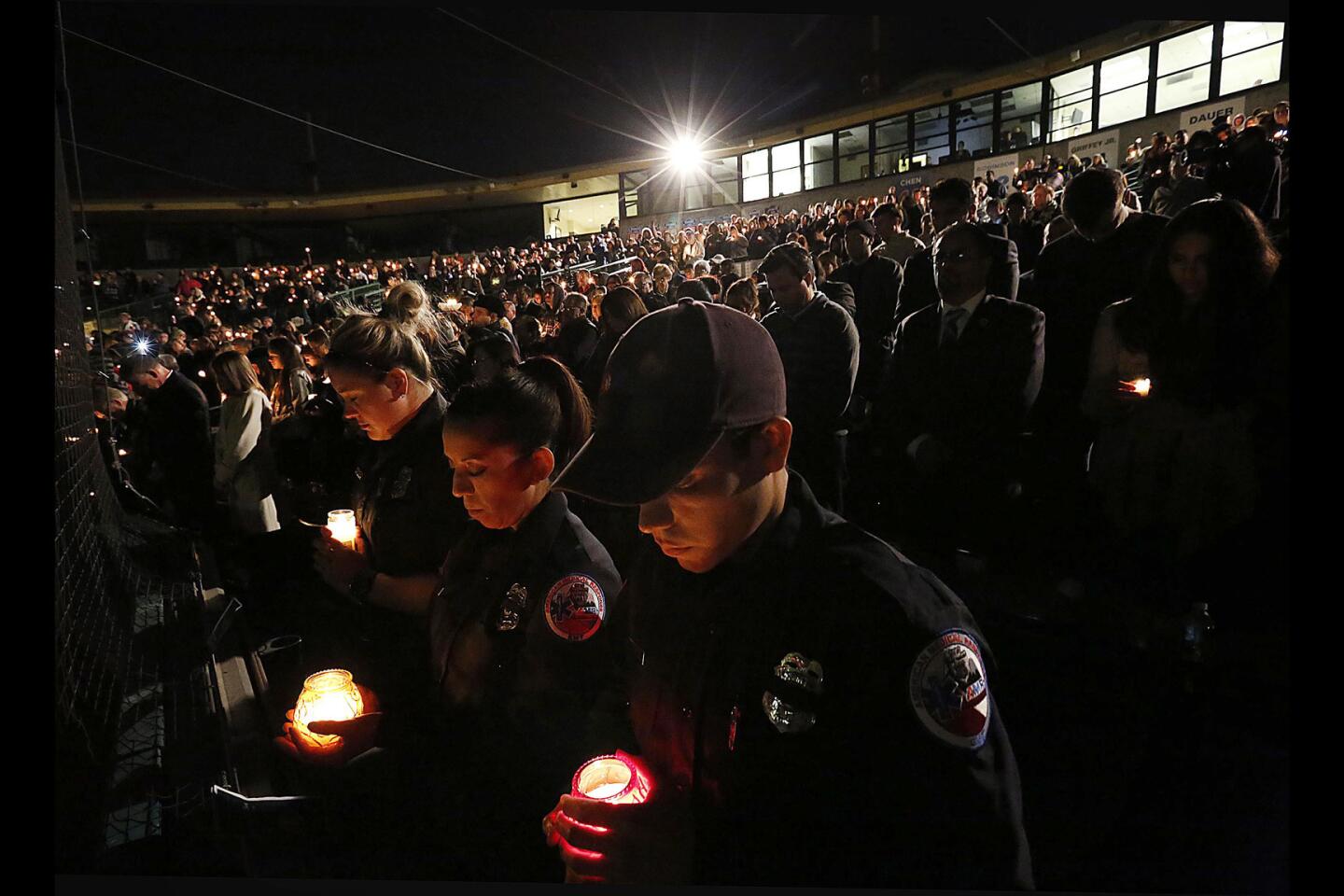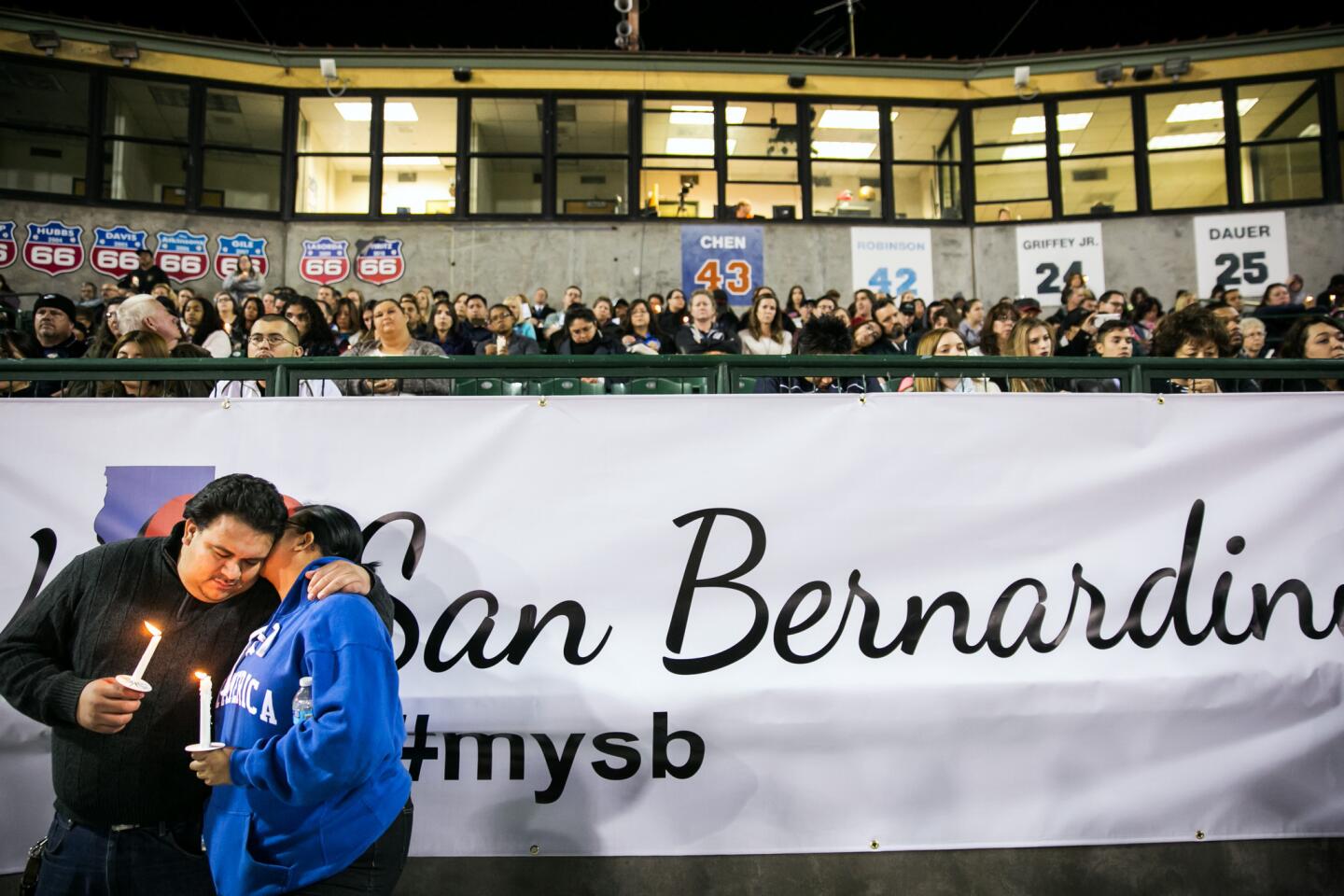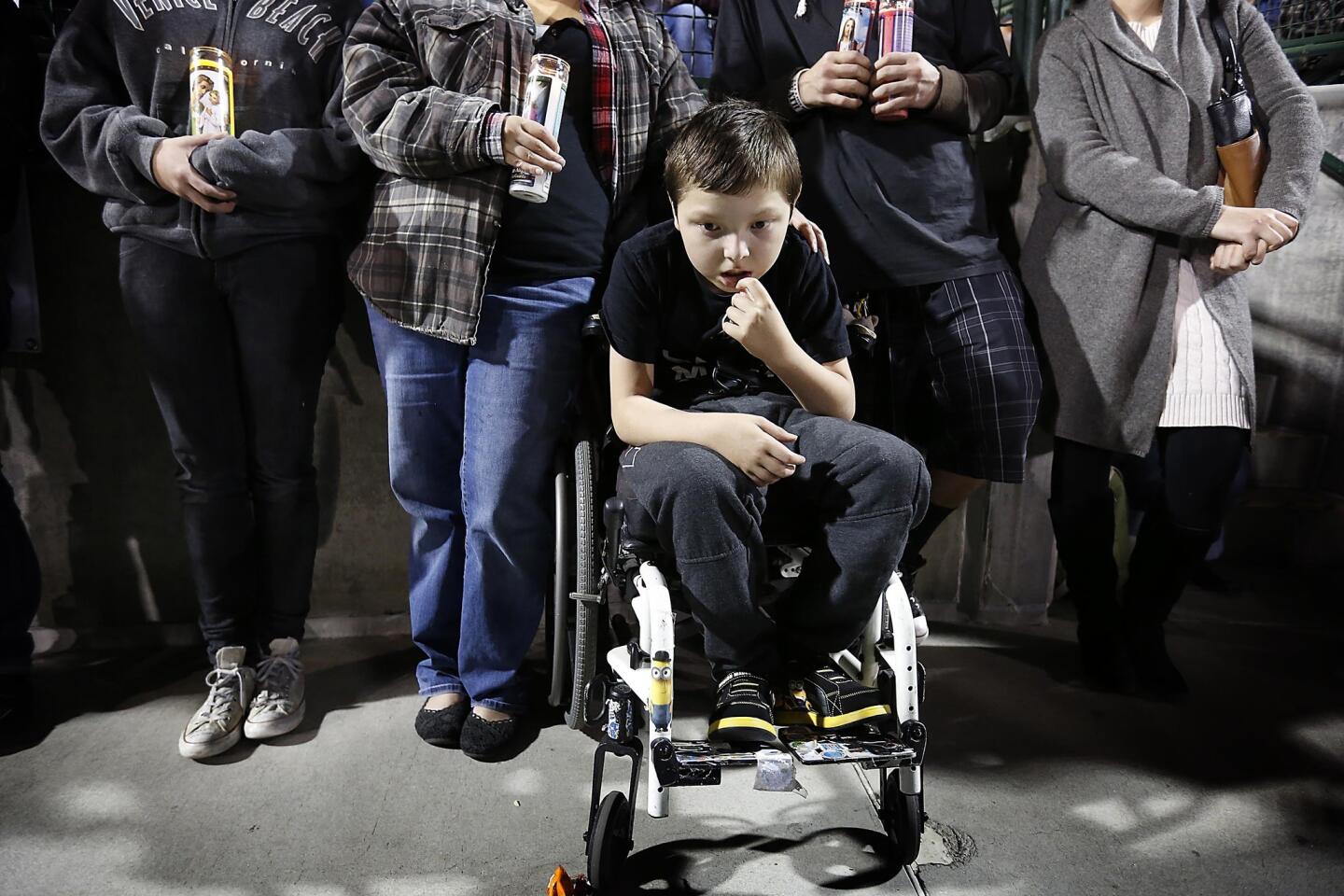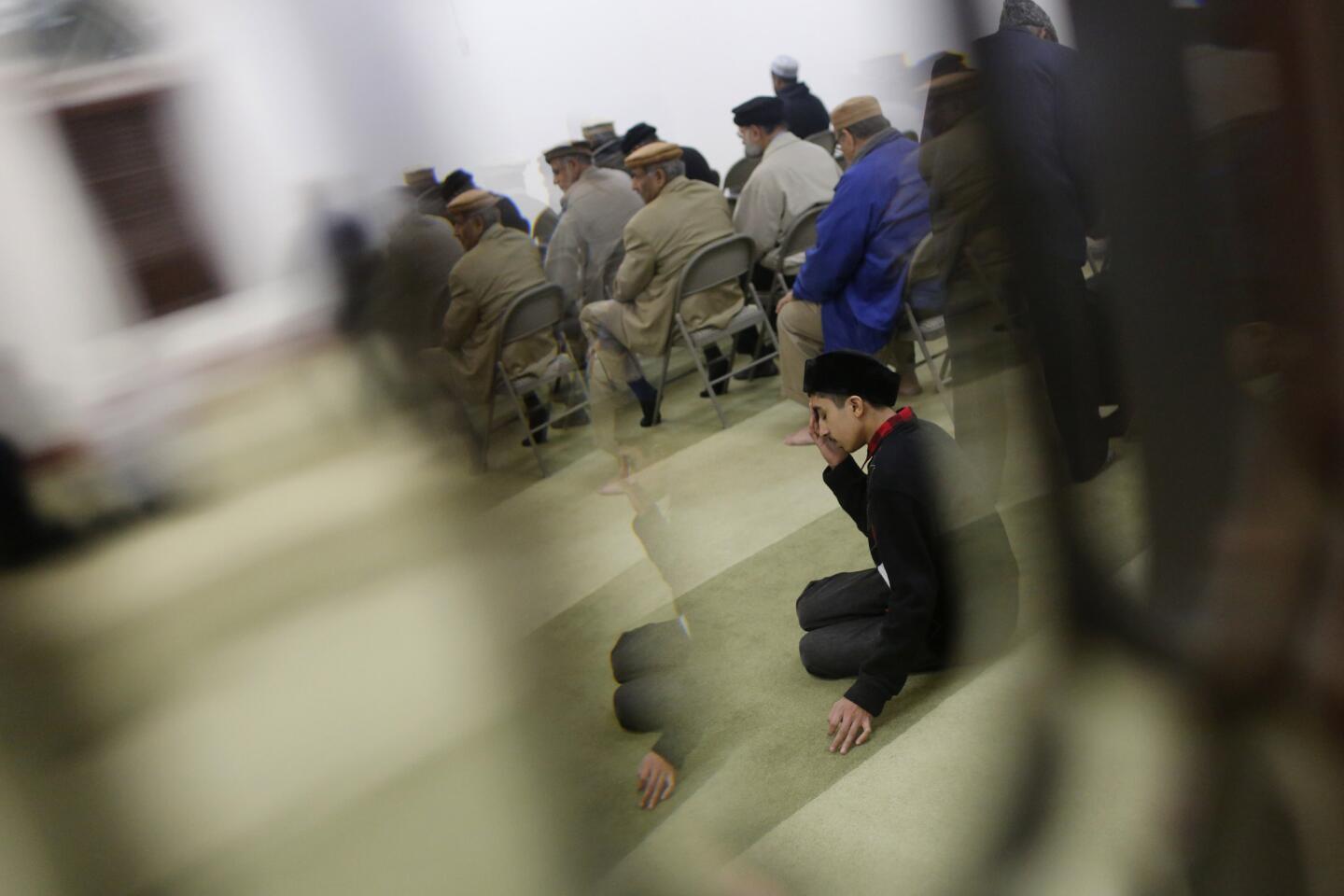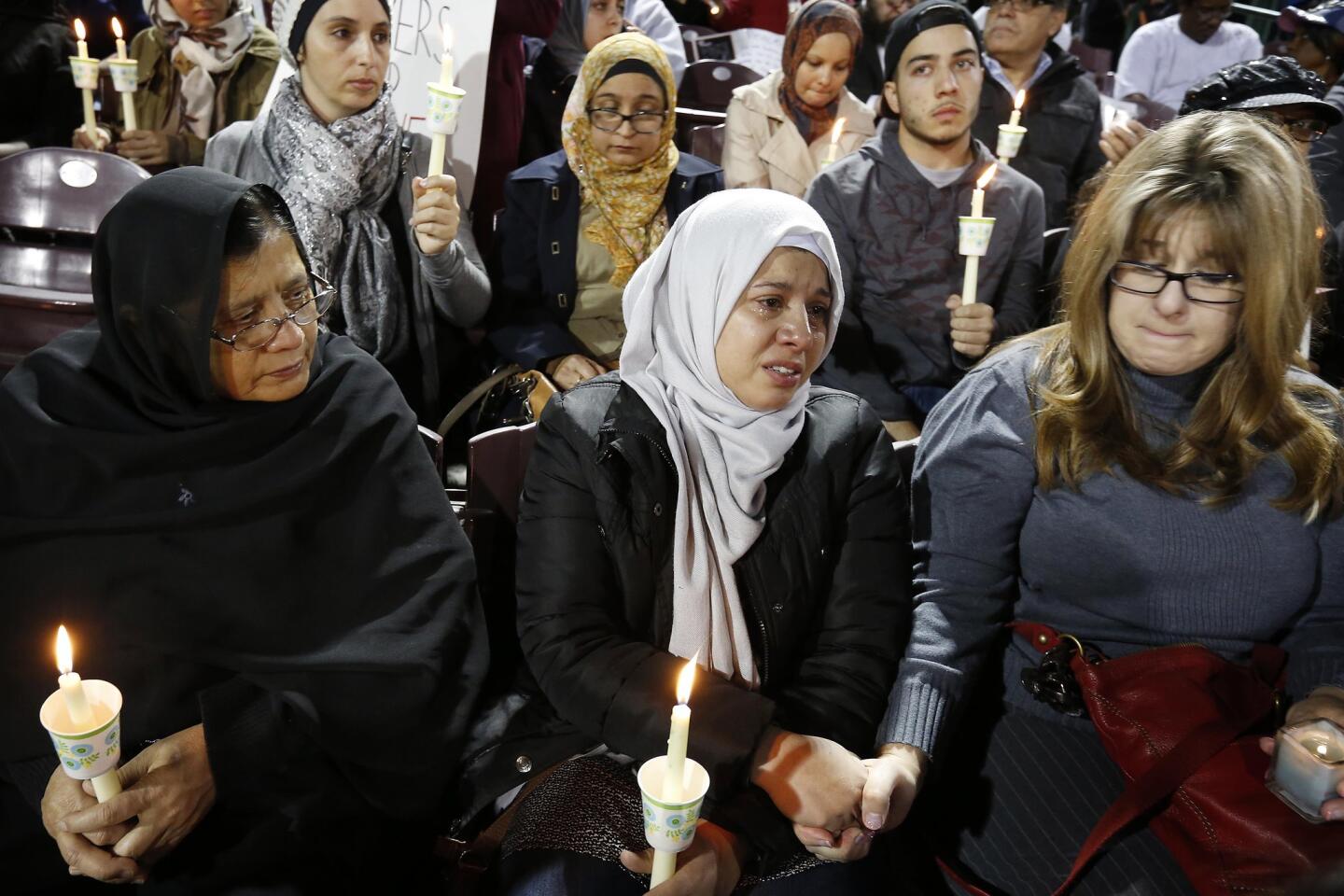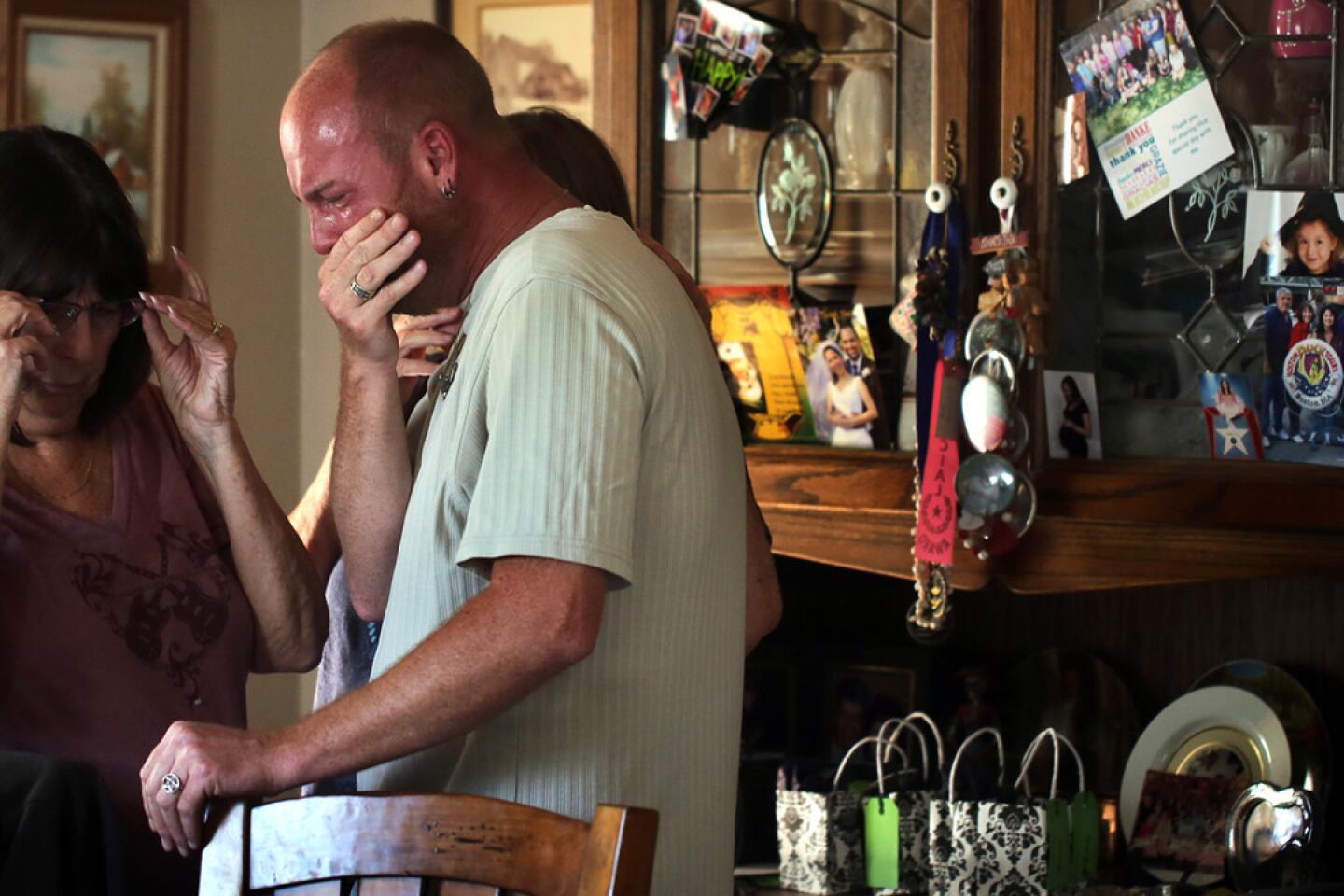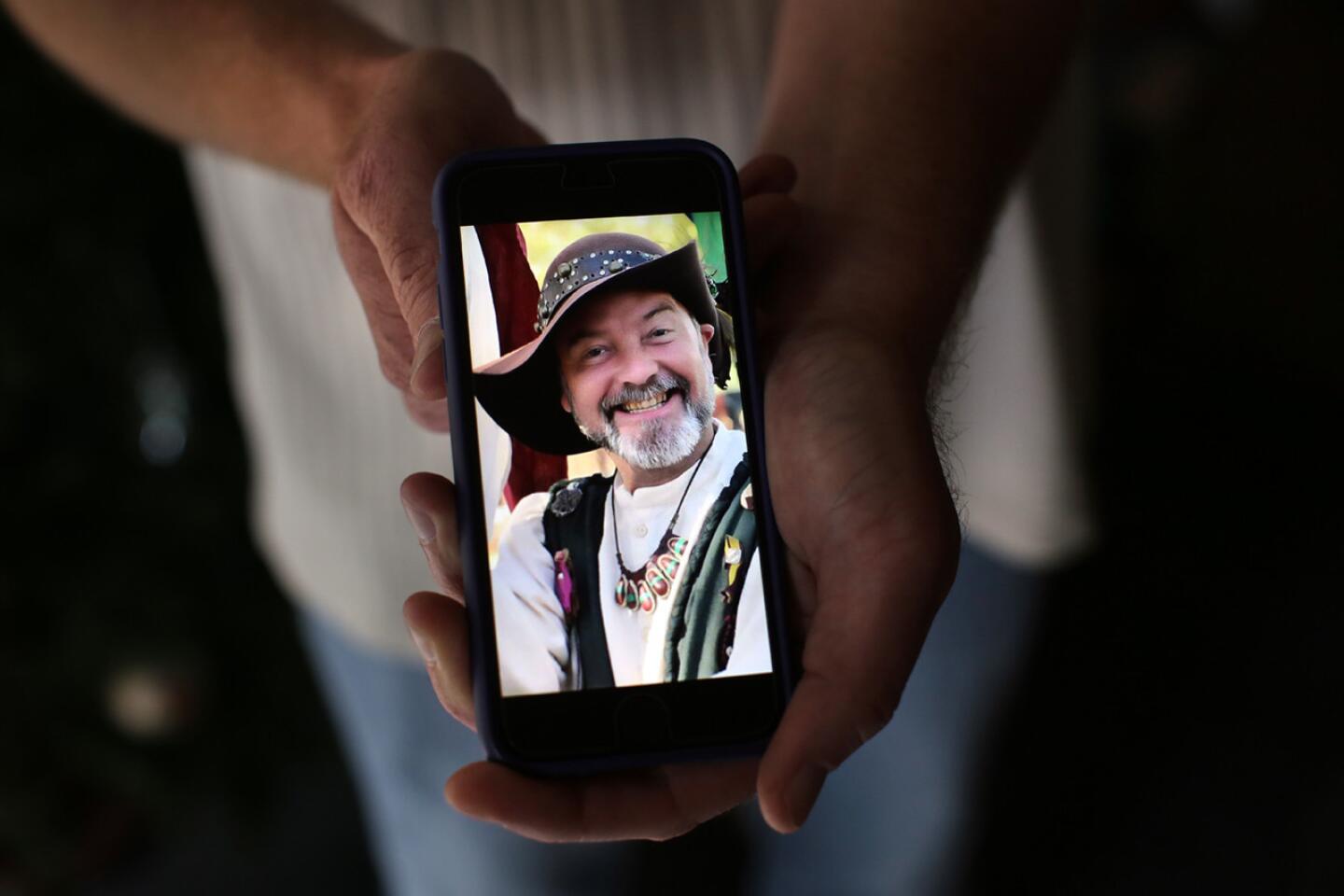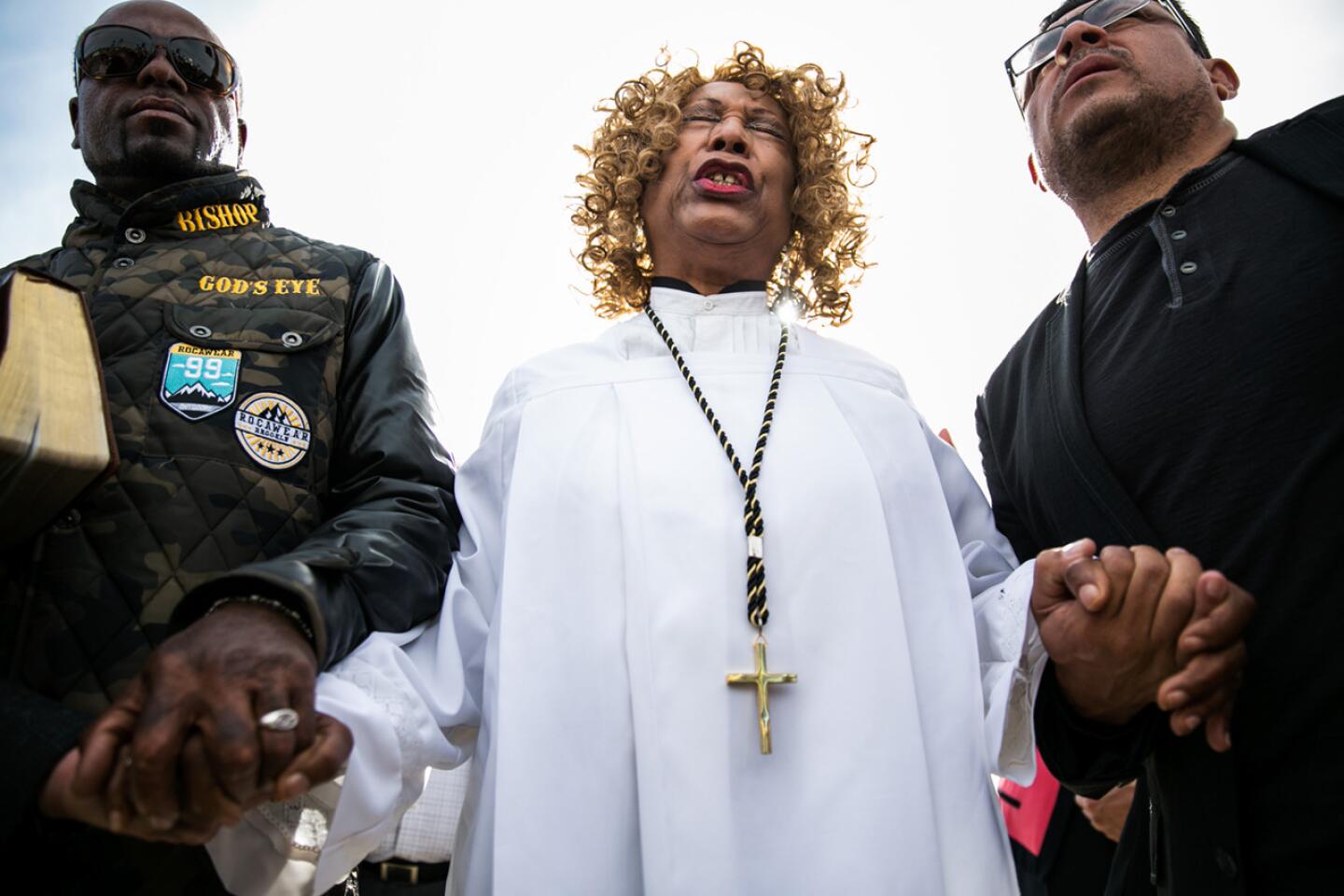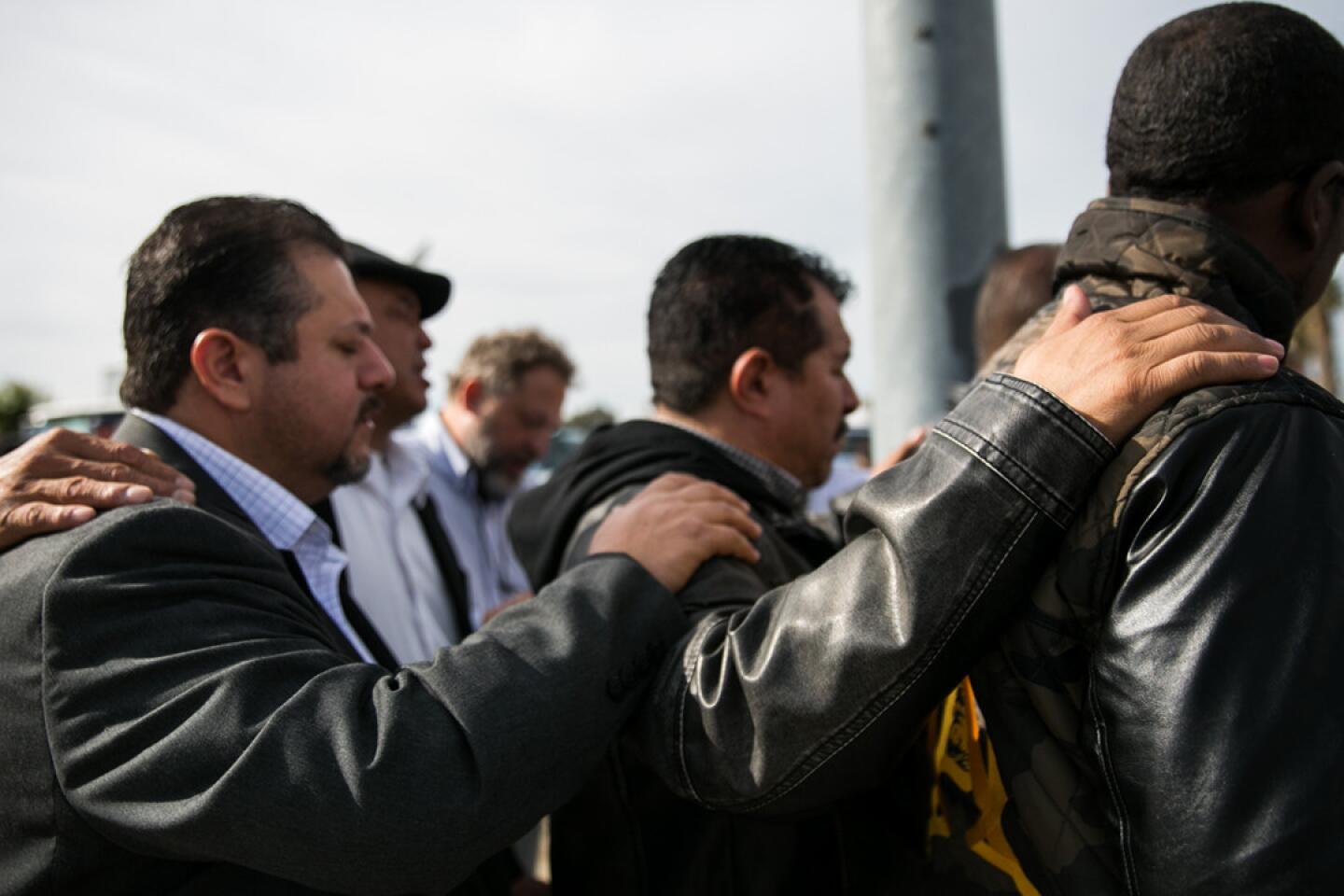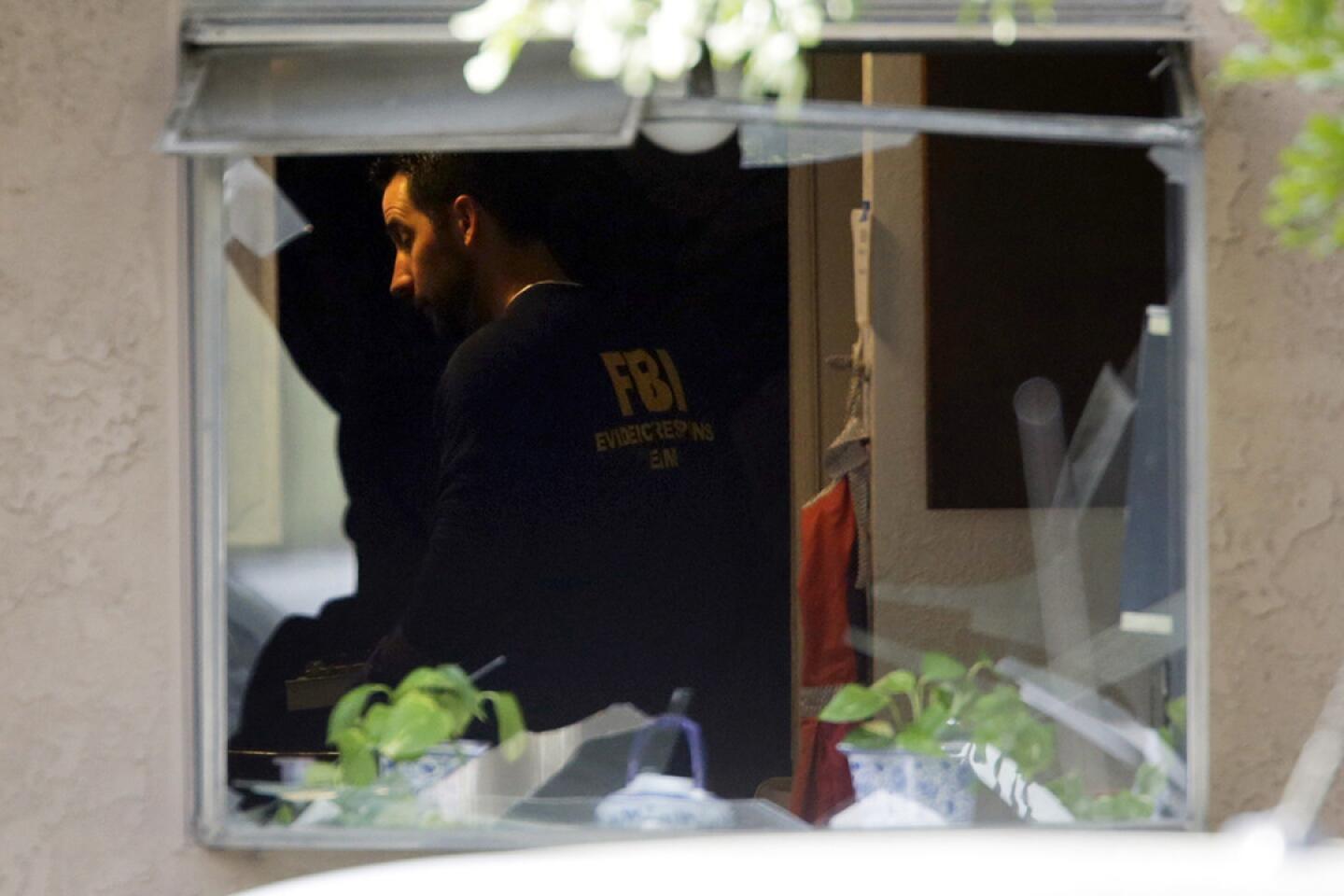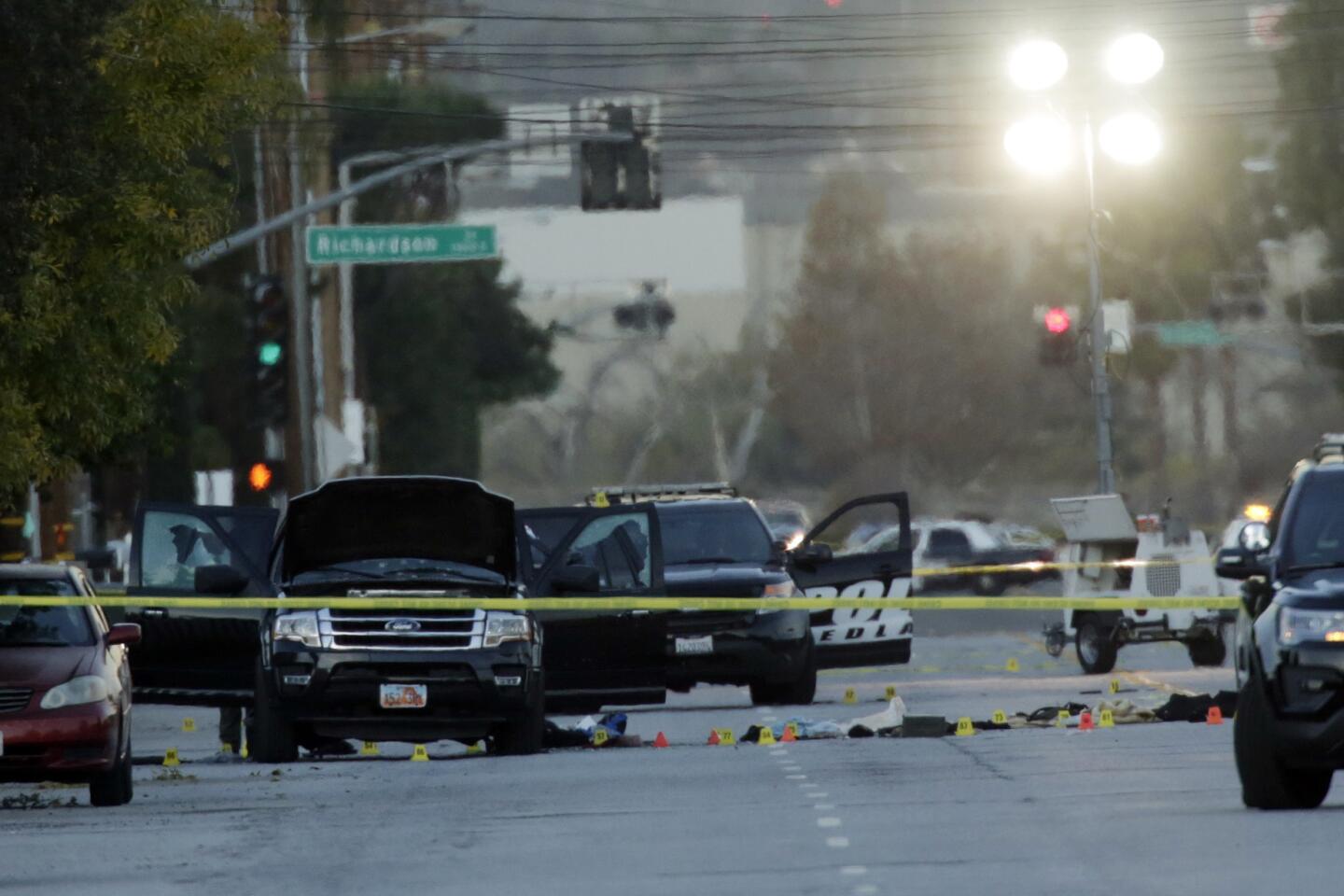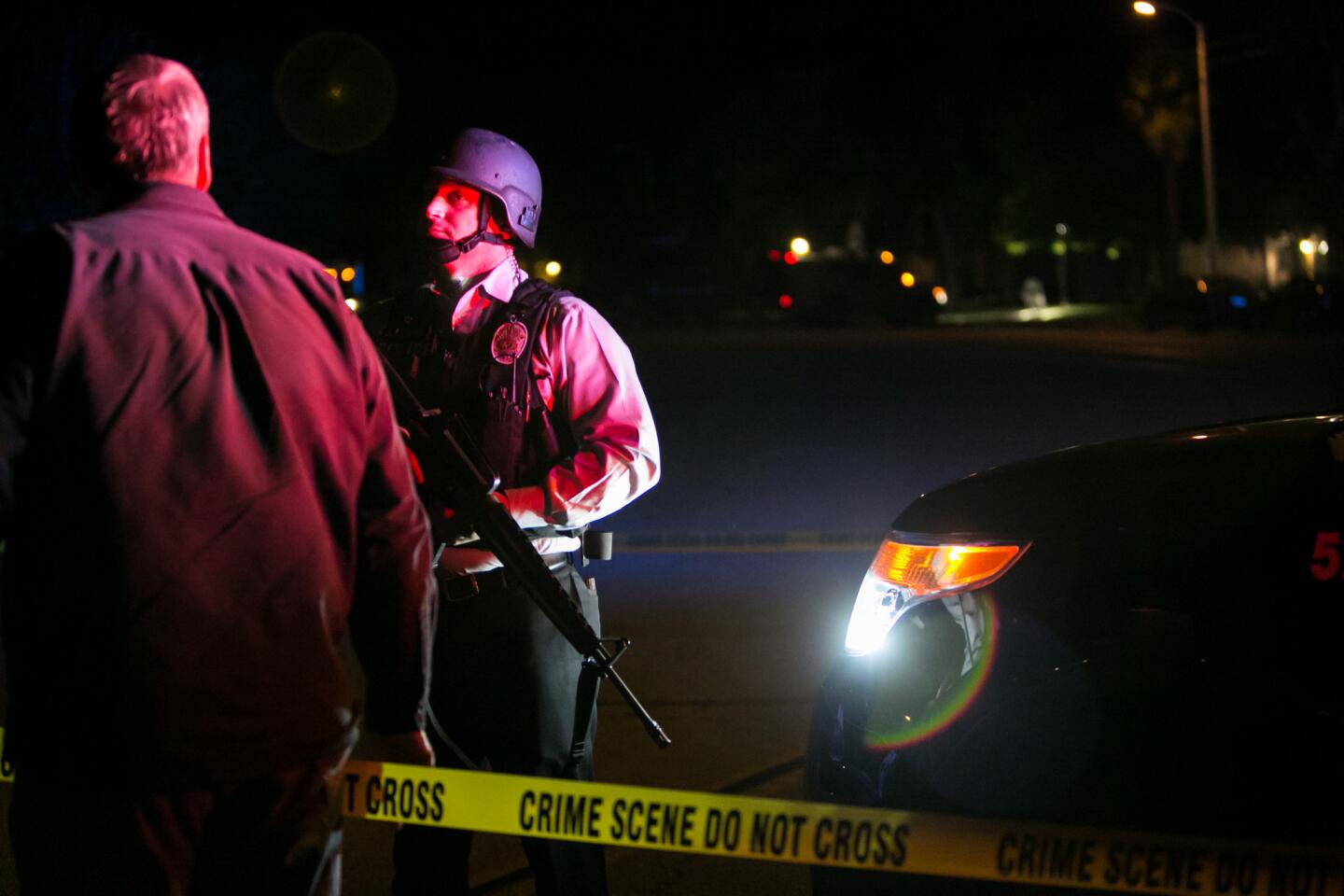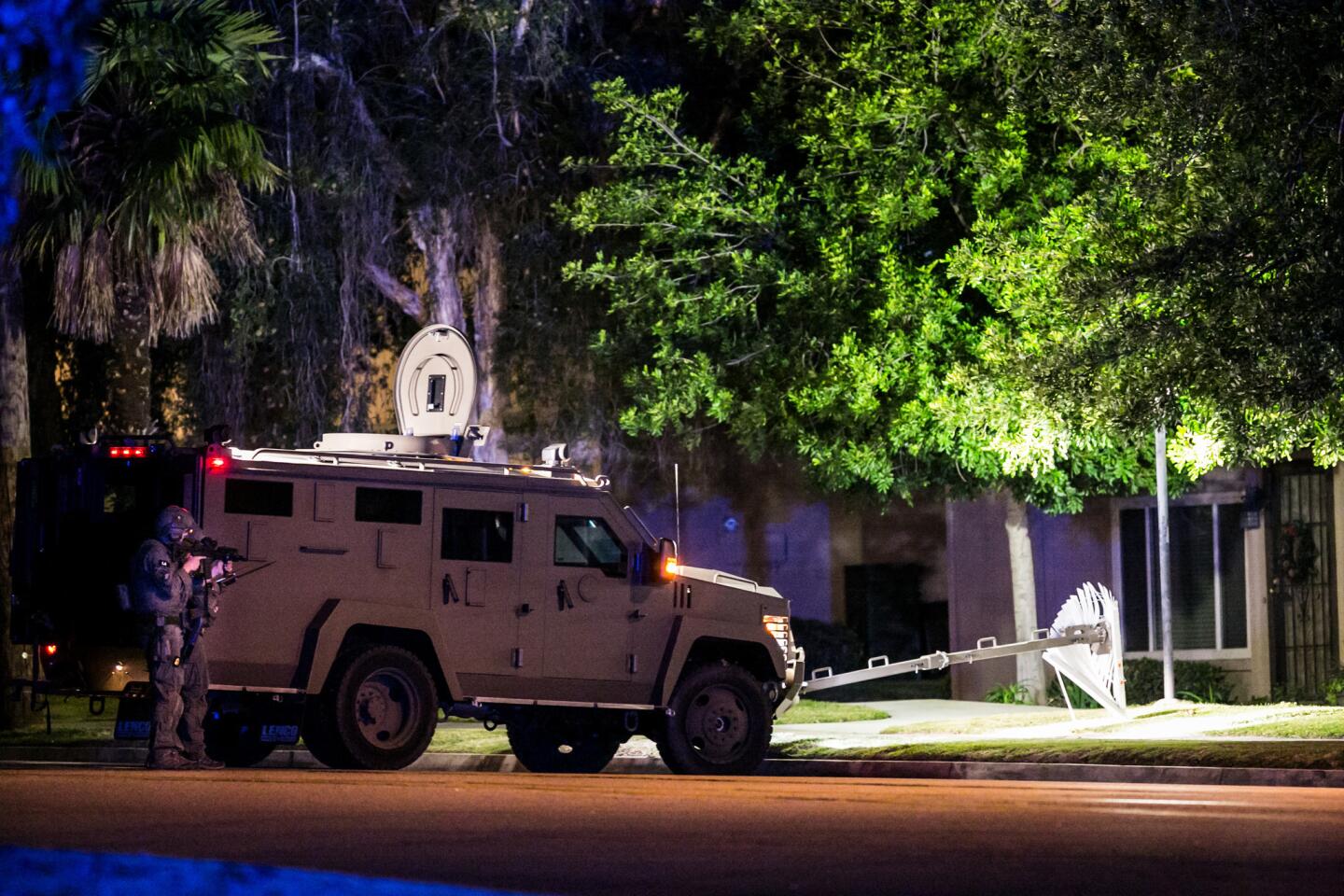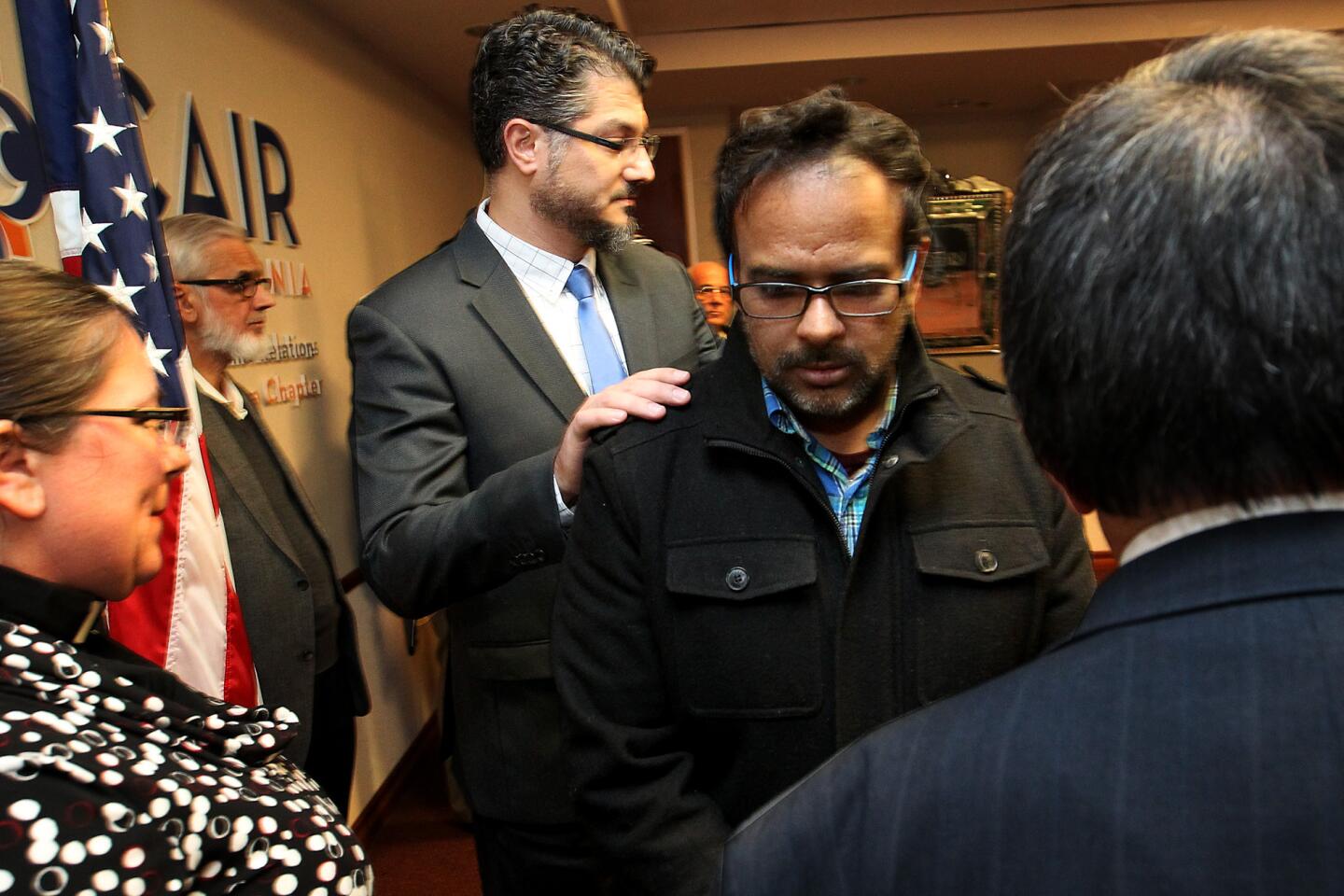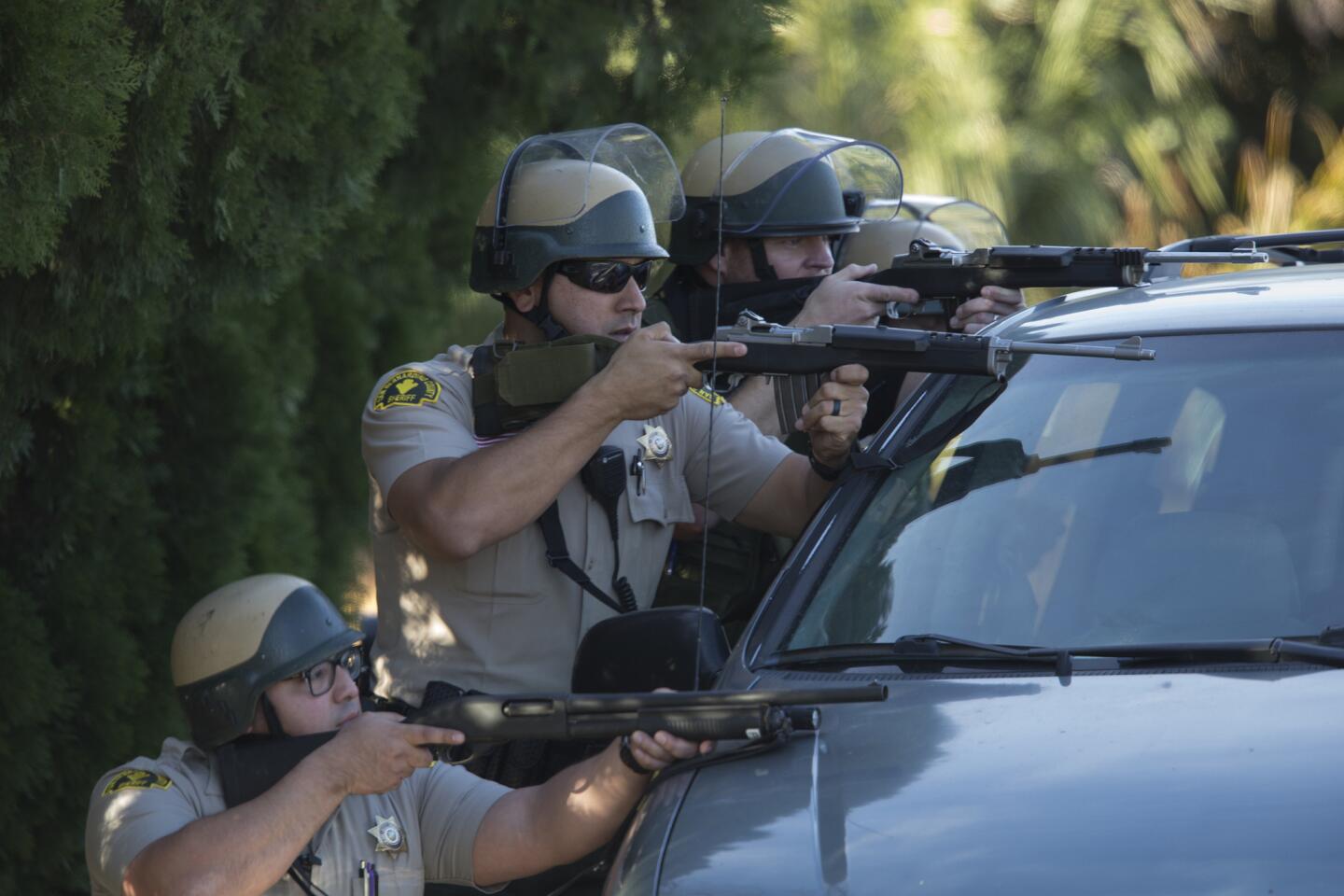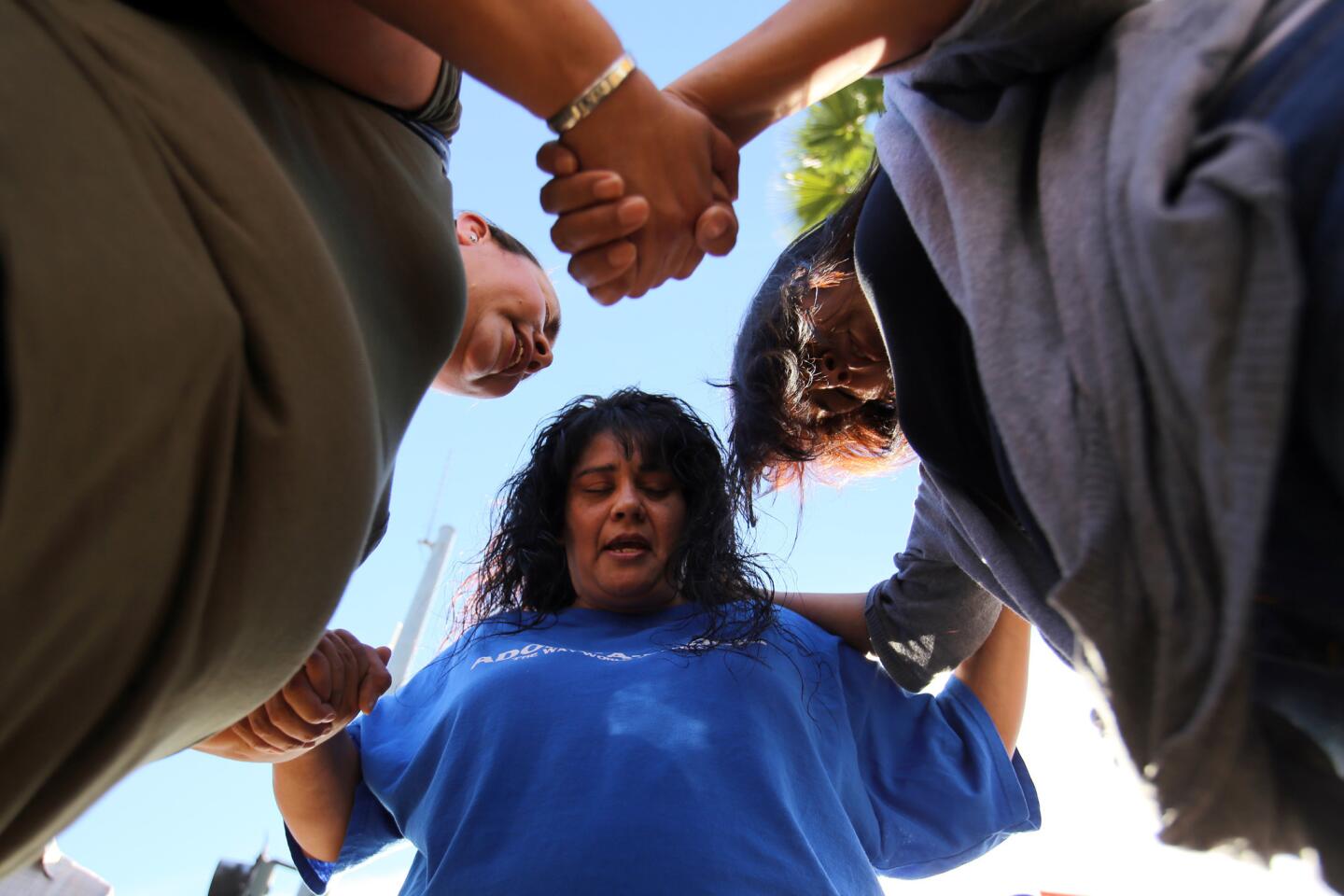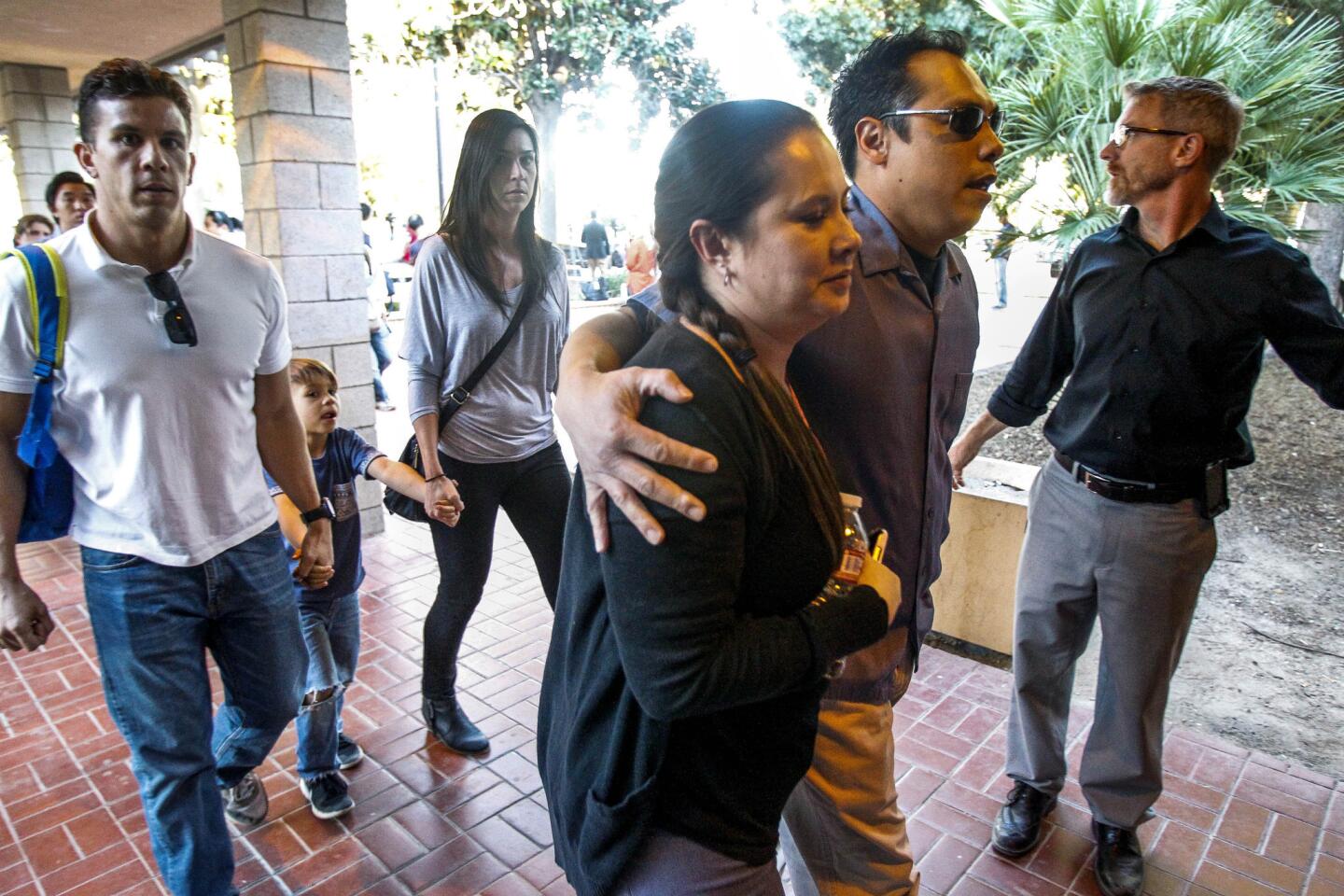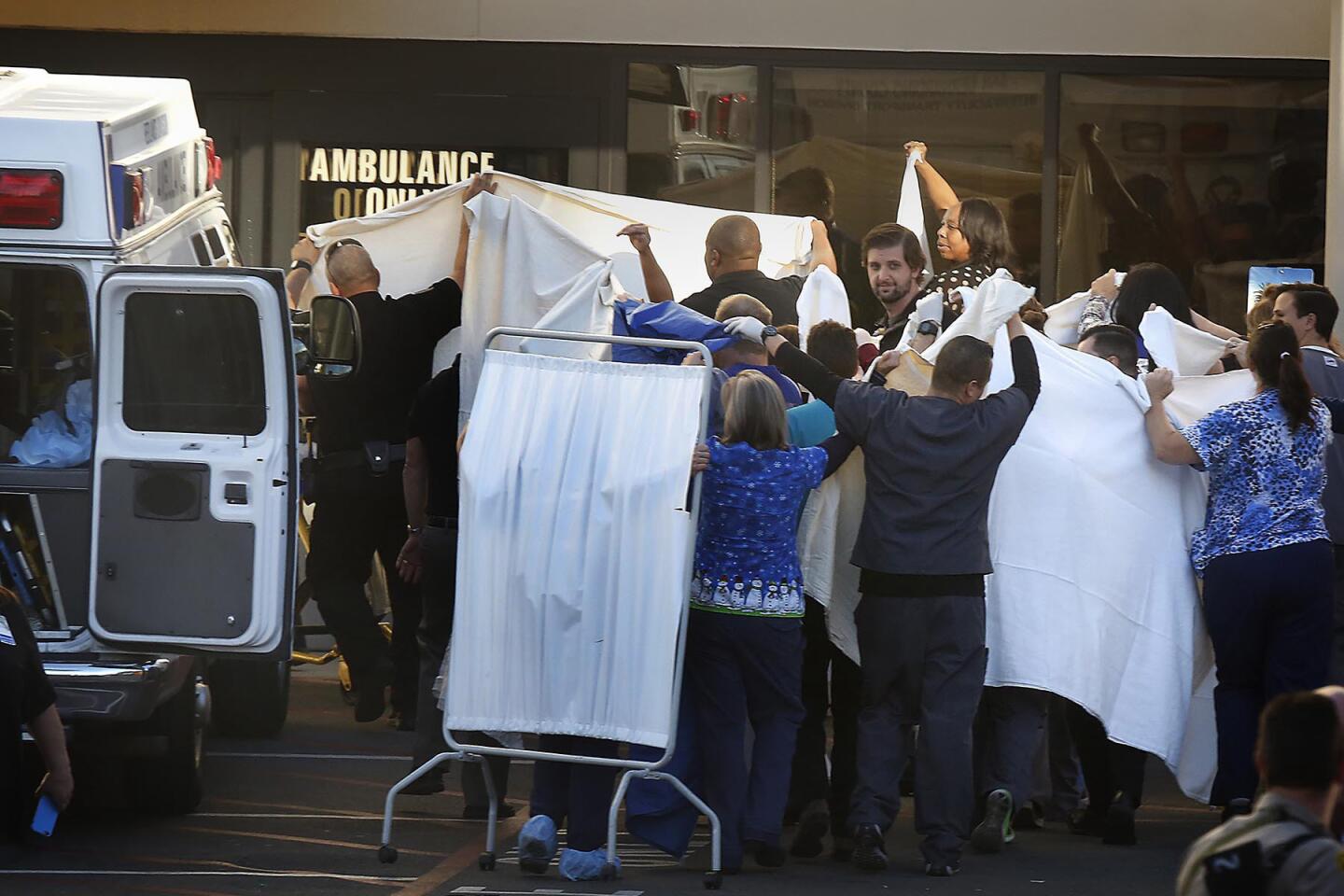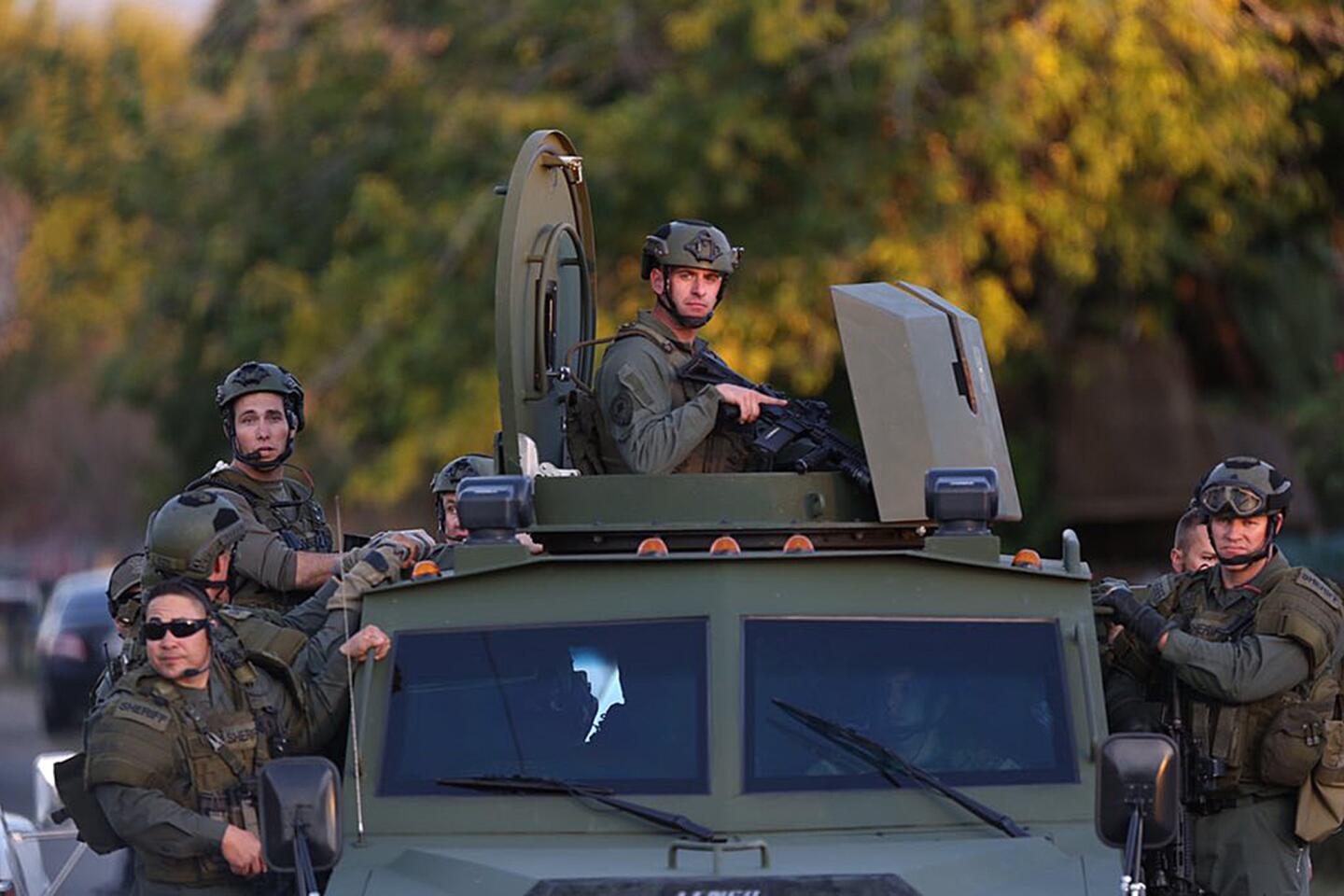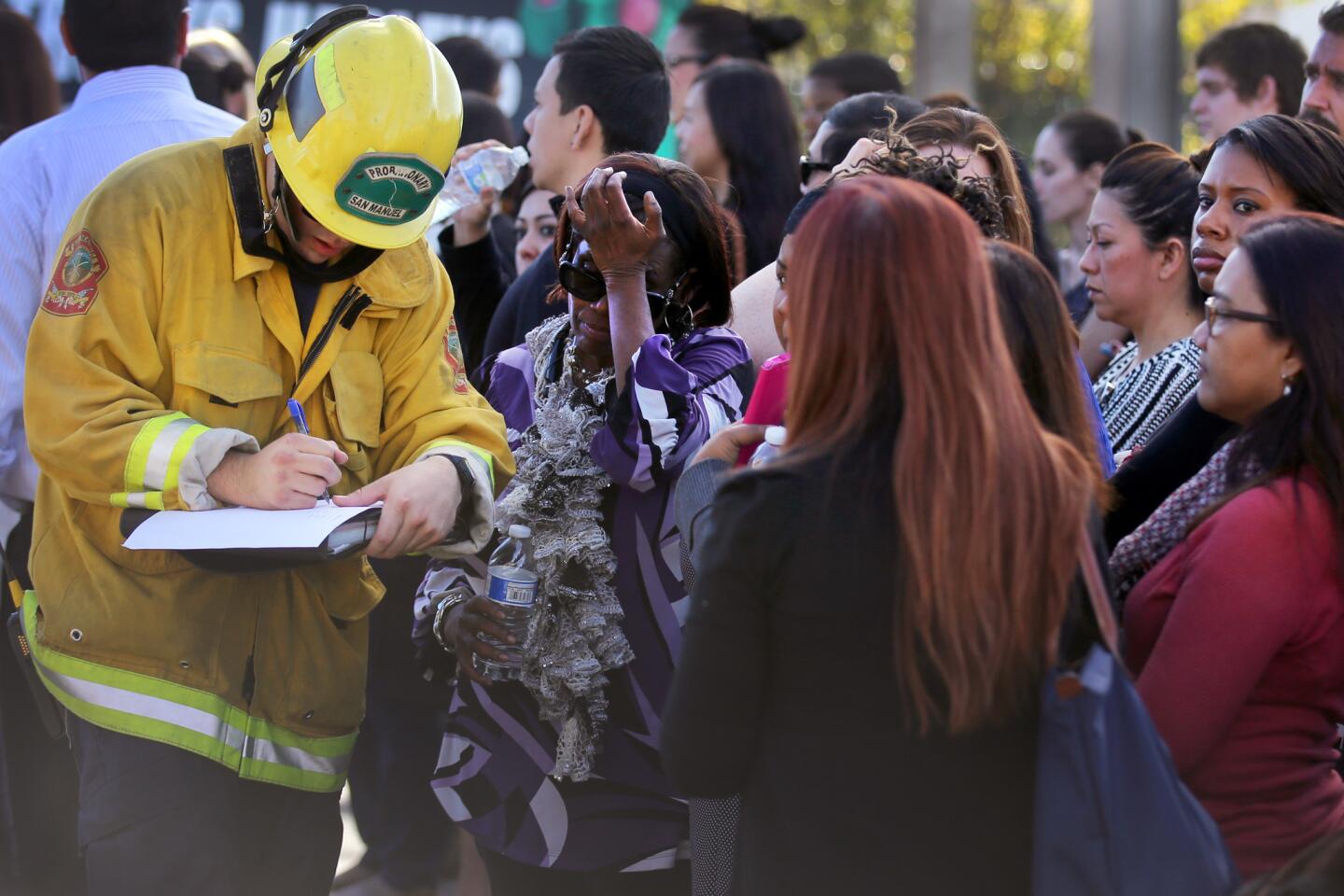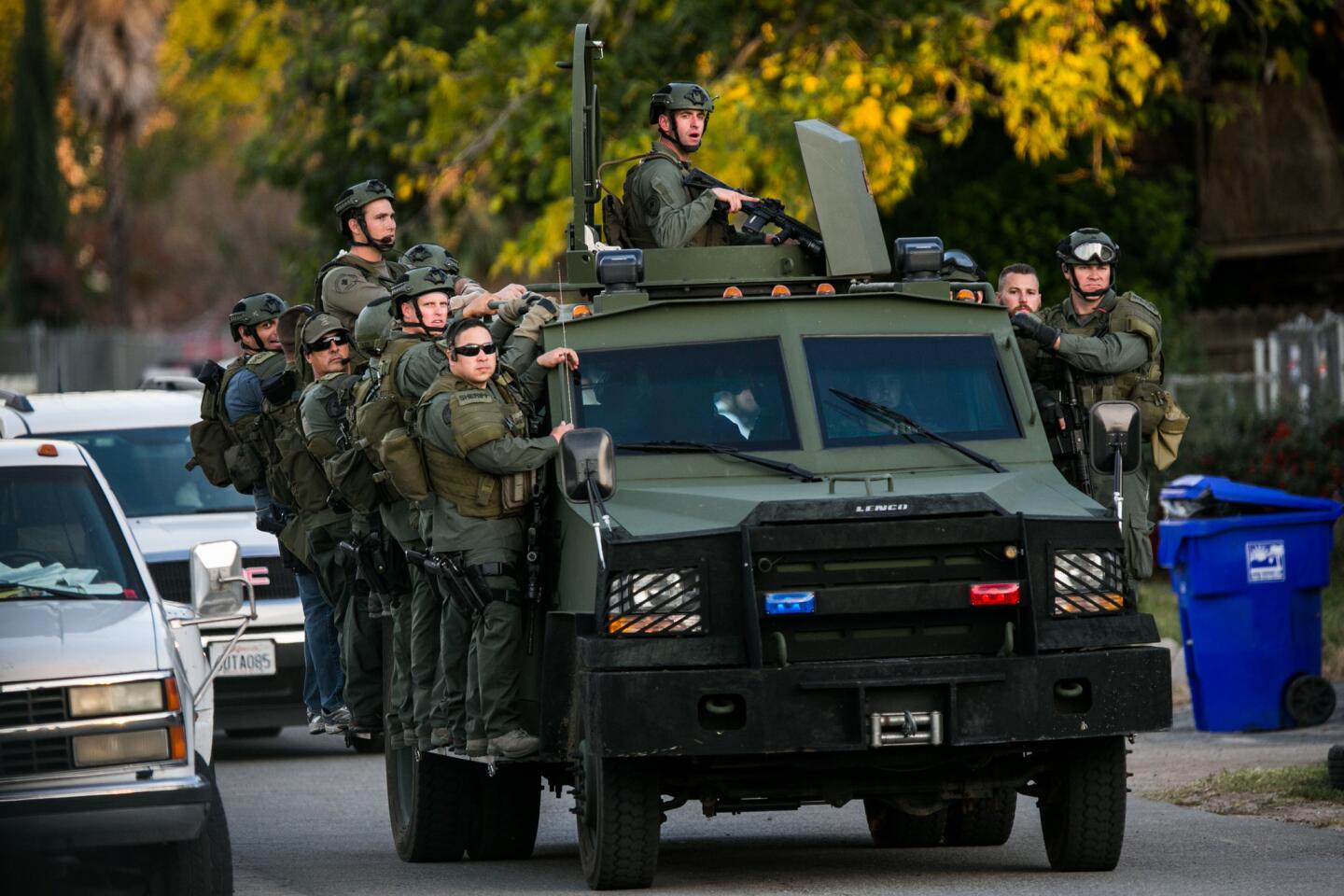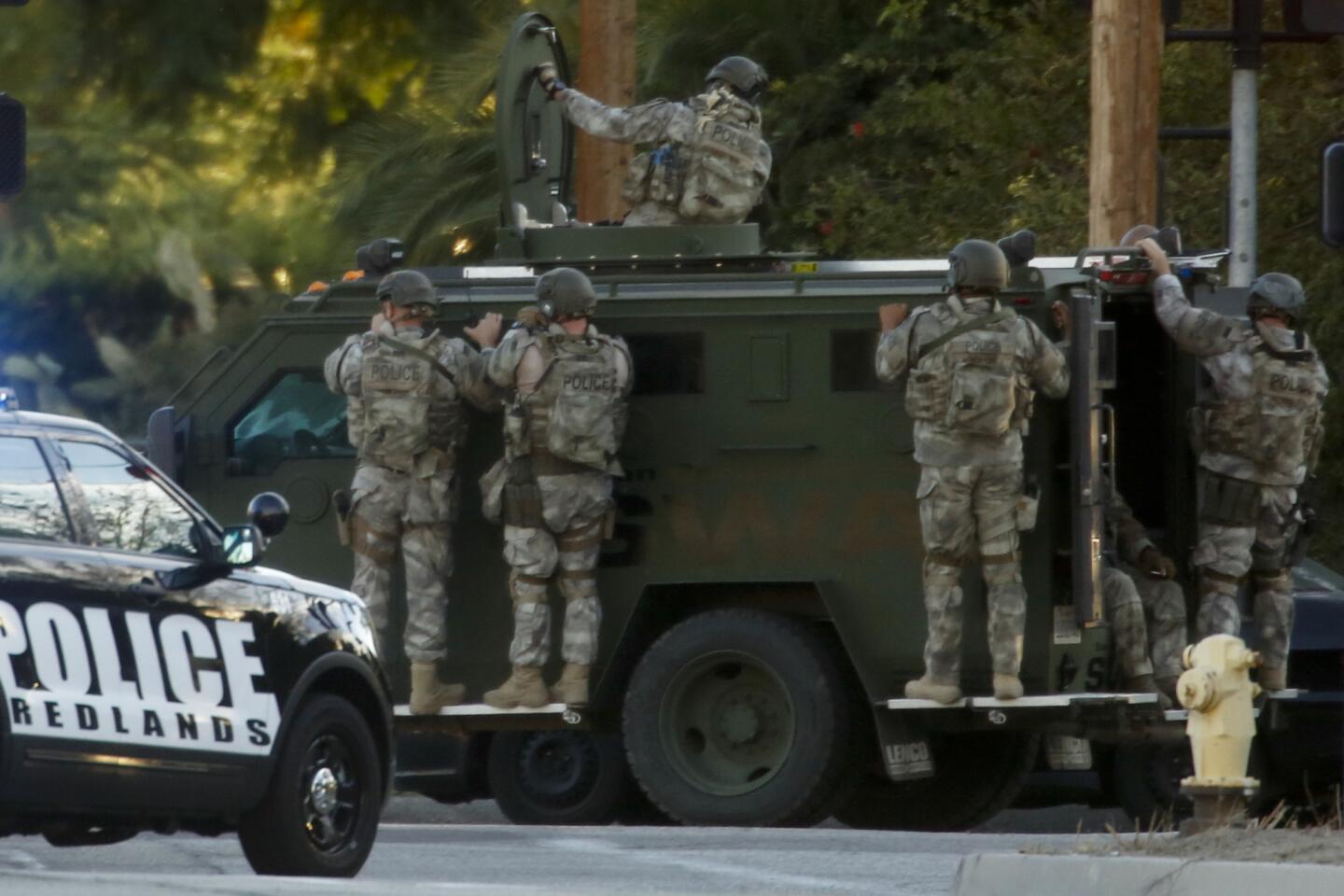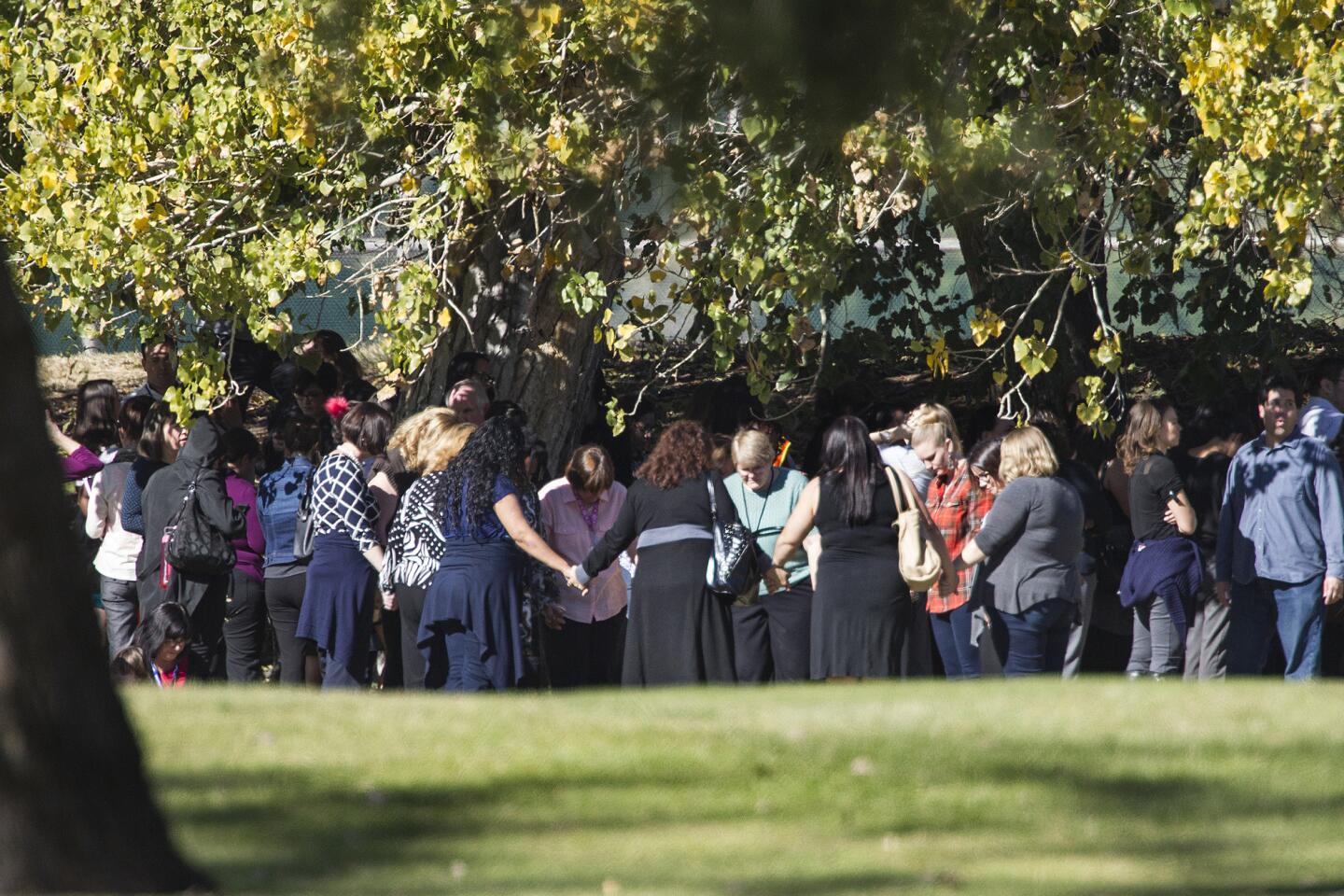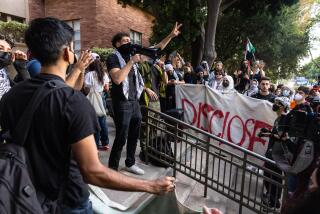A worldwide war has landed in San Bernardino -- now what?
“It’s war in the 21st century, and it’s an ugly reality that unfortunately we are going to be plagued with for some time.”
Those are the words of Rep. Adam Schiff of Burbank, the ranking Democrat on the House Permanent Select Committee on Intelligence.
I spoke to Schiff by phone on Friday morning, just after federal officials announced that one of the San Bernardino shooters had declared allegiance to Islamic State before the slaughter of innocent civilians.
That news was the most disturbing reminder since 9/11 that the threat of terrorism is not limited to distant lands, and it raised a litany of scary and complicated questions.
How many radicalized sympathizers of terrorist groups like Islamic State or Al Qaeda are living among us, people who may or may not be taking orders from anyone, but are plotting their own acts of barbarism?
Can we prevent the next one?
And how much of our privacy and civil liberty are we willing to sacrifice in the interest of safety, a question France is wrestling with after terrorists killed 130 people there last month?
“It could happen anywhere,” said a longtime friend who lives in the San Fernando Valley and is worried, as are all parents, about her children’s safety in public places. “It could happen just walking down the street.”
So, too, could any crime. But we’re reasonably safe, so we try to keep some perspective about odds and statistics and all that. We don’t want to overreact, stop going places, stop living.
Full coverage: San Bernardino shooting | Shooting updates
But San Bernardino may represent a tipping point.
Because it’s part of our community.
Because it’s not a high-profile political or ideological target, like the Twin Towers or the Pentagon.
Because it leaves you with the uneasy feeling that no place is safe from those who identify with the twisted idea that beheadings and the slaughter of innocents are tributes to God’s greatness.
How do you begin to defeat that?
I think the combination of Paris and San Bernardino, ... may be a turning point in the resolve of the world to try to defeat ISIS, to take the fight to ISIS.
— Rep. Adam B. Schiff (D-Burbank)
“I think the combination of Paris and San Bernardino, if in fact San Bernardino turns out to have an ISIS connection, may be a turning point in the resolve of the world to try to defeat ISIS, to take the fight to ISIS,” said Schiff, using an acronym for Islamic State.
He thinks it’s key to militarily drive ISIS off the land they control in Iraq and Syria, disrupting the terrorists’ money-making operations and complicating access to Europe and the planning of more attacks in the West.
He may be right, but already there are reports of Islamic State establishing a new stronghold in Libya, terrifyingly close to much of Southern Europe. So this is not a threat that will go away any time soon, and Schiff said he didn’t think any change in U.S. foreign policy strategy in the Middle East can eliminate that threat.
Then there’s the problem, in the U.S. and elsewhere, of sympathizers.
“In the near term,” Schiff said, “we have a real challenge on our hands with home-grown radicalism, with people who are inspired by the urgings of ISIS through social media to take matters into their own hands .… To do what they can to kill infidels where they live. If it turns out San Bernardino was an ISIS-inspired attack, it is the fruition of our most significant near-term fears — that people will use the impetus of Paris to attack now.”
Speaking of Paris, I mentioned to Schiff that I’d just read a Page One story by Times reporter Alexandra Zavis about France wrestling with state-of-emergency realities in which police on the trail of suspected terrorists can bust through doors in public and private places without search warrants.
A French official defended the practice by saying, “It is terrorism that threatens liberties today, not the state of emergency.”
But where do you draw the line, and how much freedom can we sacrifice before it becomes a form of surrender?
“I don’t think San Bernardino is going to be a turning point in terms of how Americans want to live their lives or whether Americans are going to be willing to tolerate a whole new level of police state or martial law or emergency status,” Schiff said — though he didn’t rule out quick, tough measures such as the French have employed in cases of “very specific, credible, imminent threats.”
The San Bernardino case is an opportunity, Schiff said, to learn more about threats and how to thwart them.
“We will obviously examine in great detail just what happened, what the motivations were, what kind of planning went into it, and what kinds of signs there may have been … that could tell us we should have been alerted somewhat,” said Schiff. “But we have to recognize those signs will not always be there,” and just as law enforcement adapts, so do killers.
Some threats have and will be thwarted, in other words, but not every one can be.
“I think we have to help empower around the world the voices within Islam, the overwhelming majority of voices that think this kind of violence is totally anathema,” Schiff said.
“I think Americans need to be reminded again and again that one of our strongest allies in the fight against radical Islam is the Muslim community, and the degree to which it condemns this violence and partners with law enforcement to identify people at risk of extremism.”
War in the 21st century.
In San Bernardino, the names on the gravestone are Robert Adams, 40; Isaac Amanios, 60; Bennetta Betbadal, 46; Harry Bowman, 46; Sierra Clayborn, 27; Juan Espinoza, 50; Aurora Godoy, 26; Shannon Johnson, 45; Larry Daniel Kaufman, 42; Damian Meins, 58; Tin Nguyen, 31; Nicholas Thalasinos, 52; Yvette Velasco, 27; Michael Wetzel, 37.
Twitter: @LATstevelopez
MORE ON SAN BERNARDINO SHOOTING
San Bernardino massacre probed as terrorism, FBI says
In surreal scene, reporters swarm Redlands home rented by shooters
In the wake of the San Bernardino attack, fear shouldn’t guide America’s response
More to Read
Sign up for Essential California
The most important California stories and recommendations in your inbox every morning.
You may occasionally receive promotional content from the Los Angeles Times.
